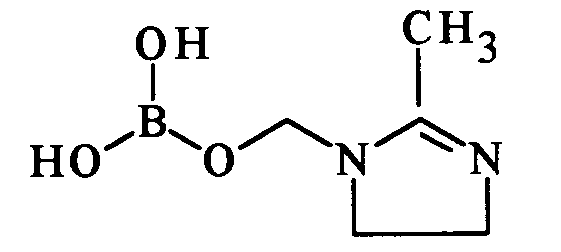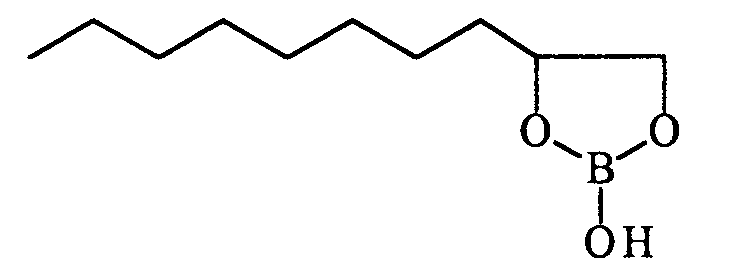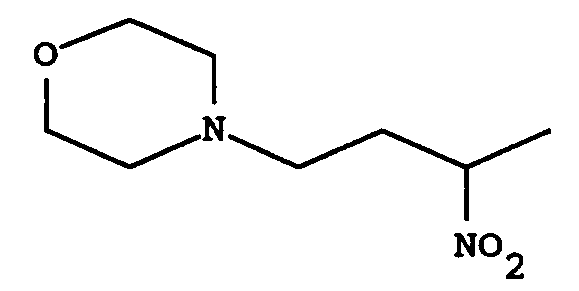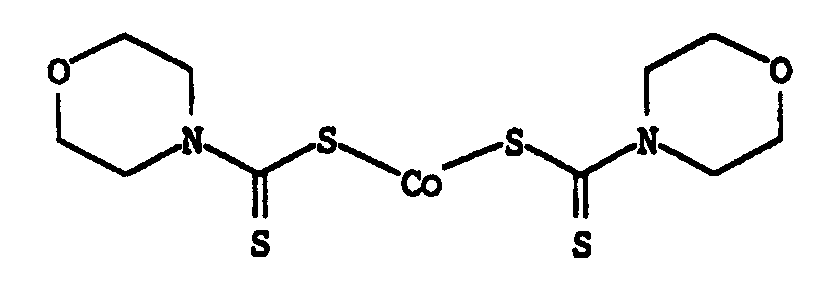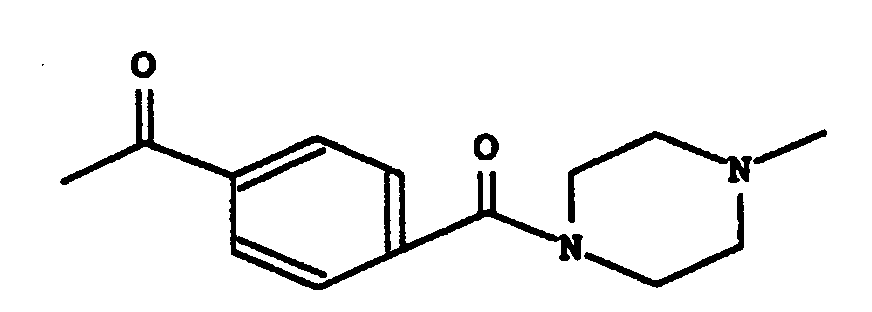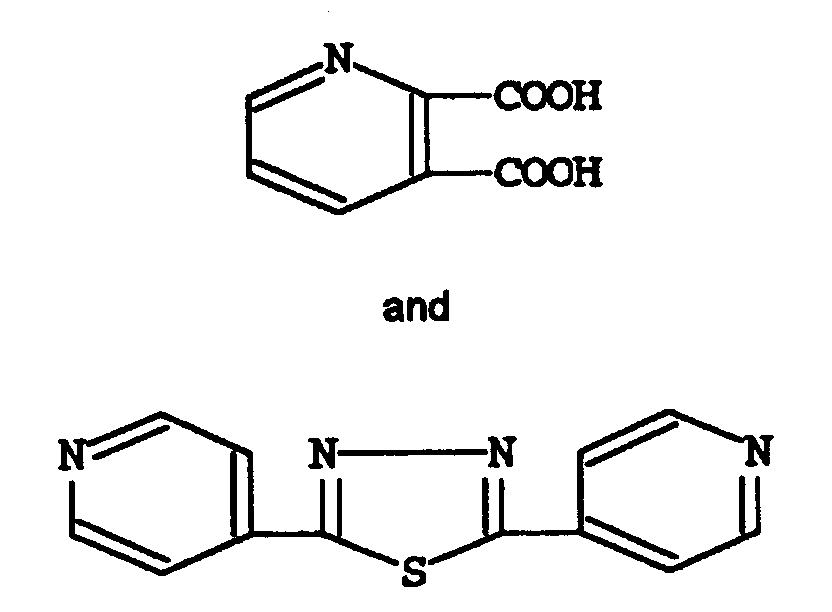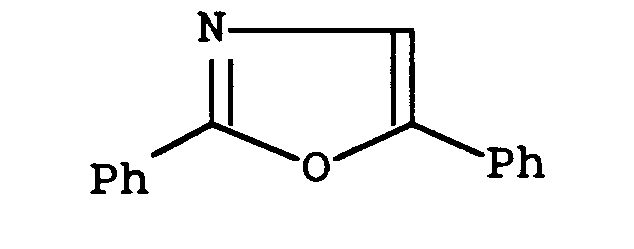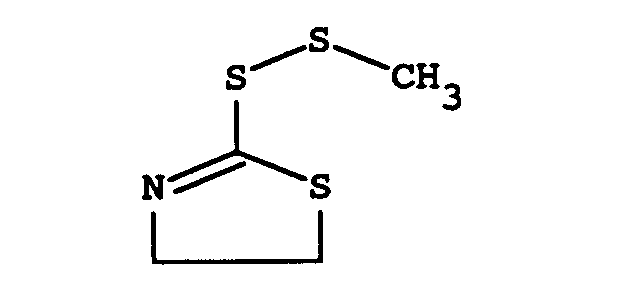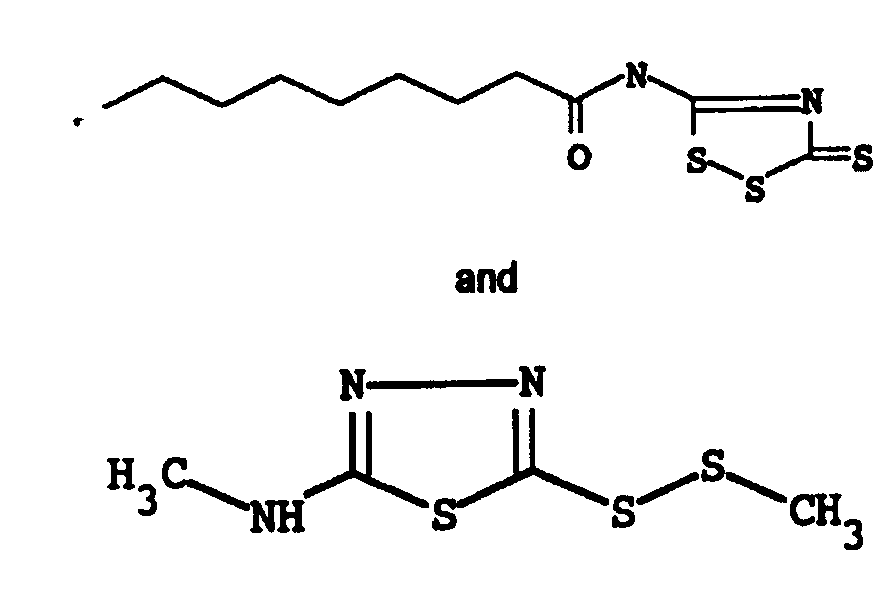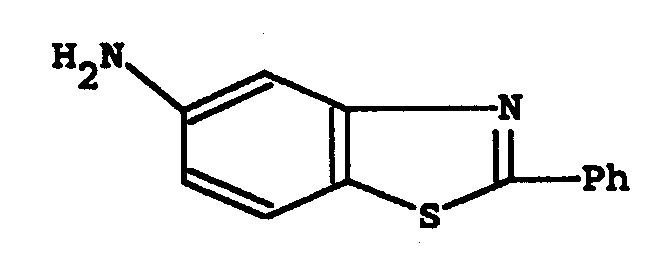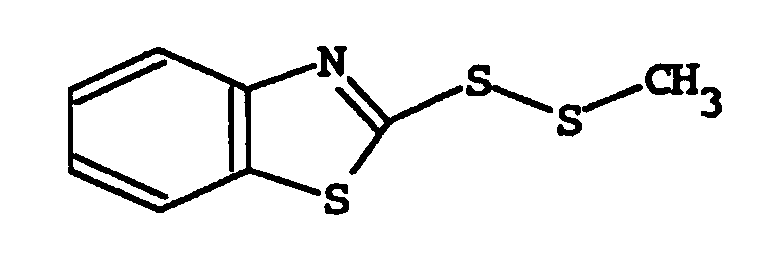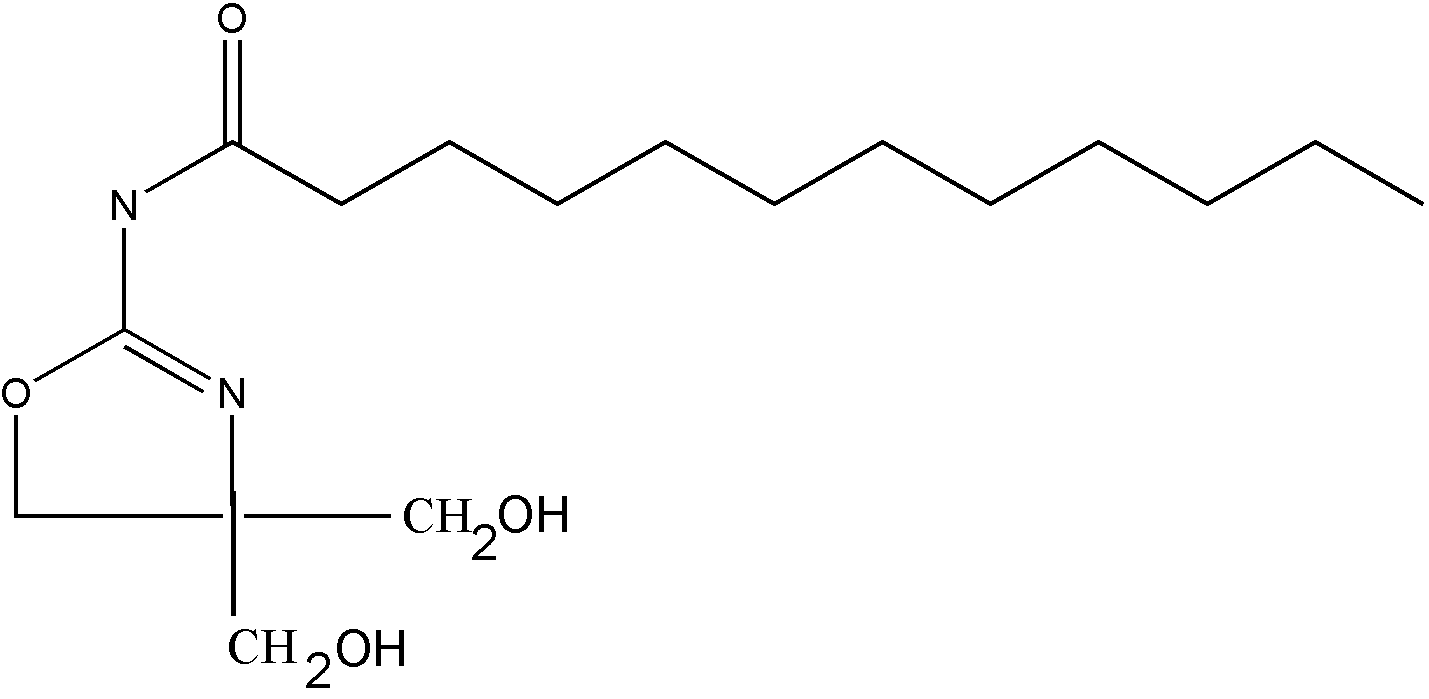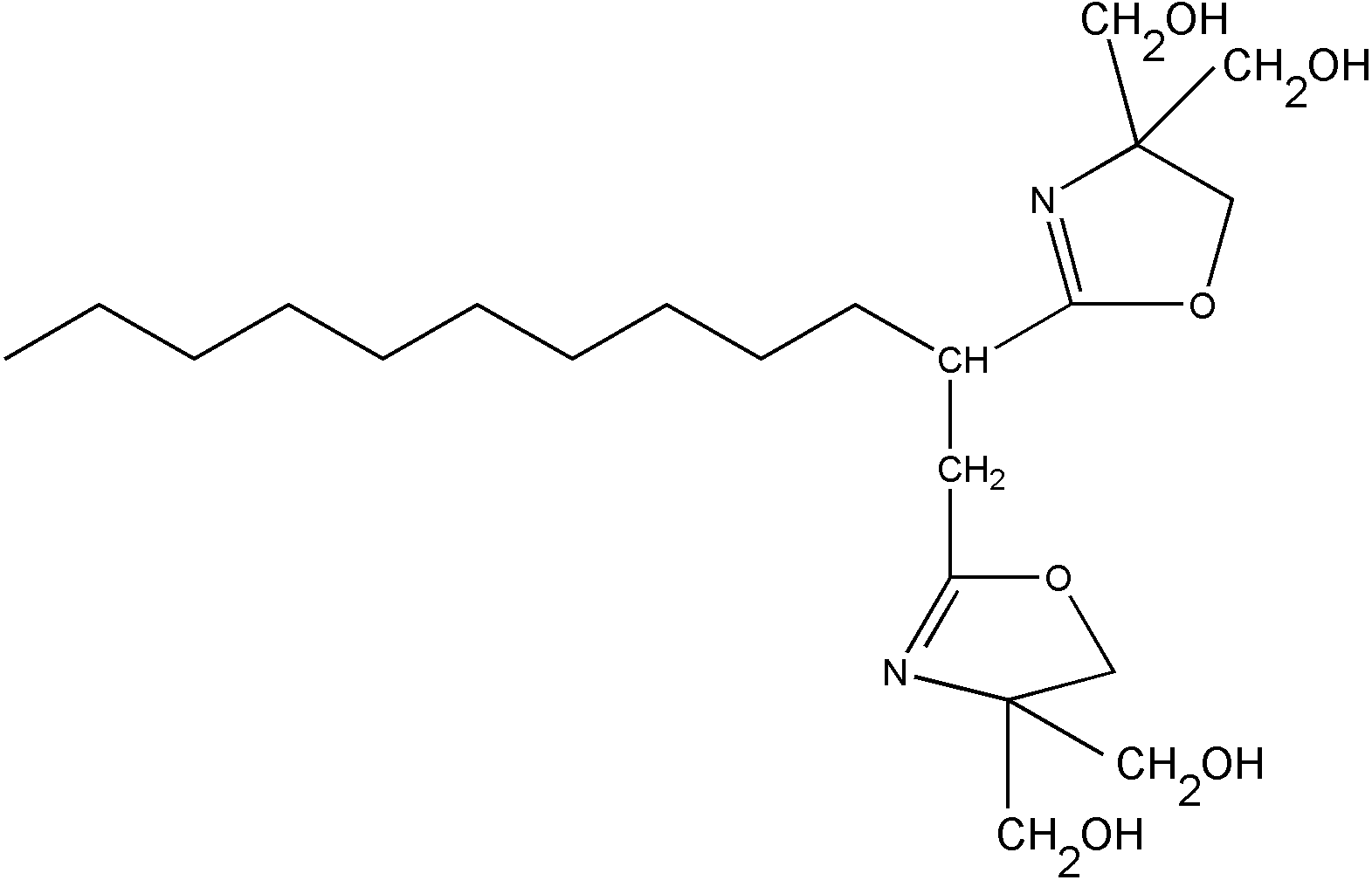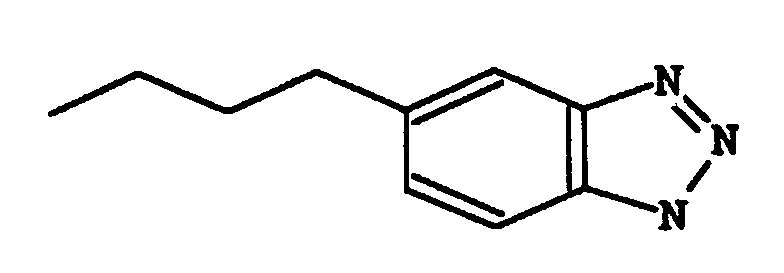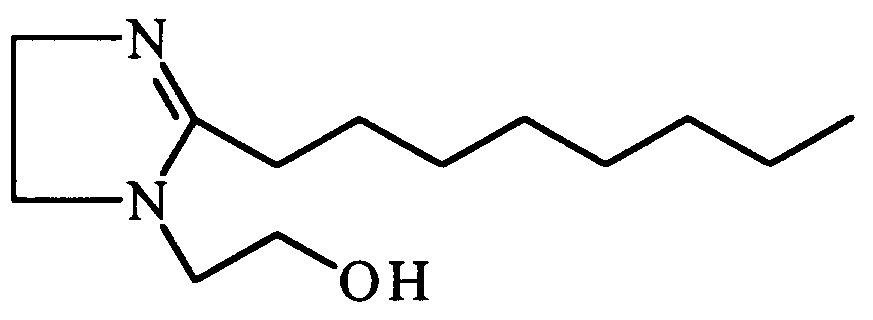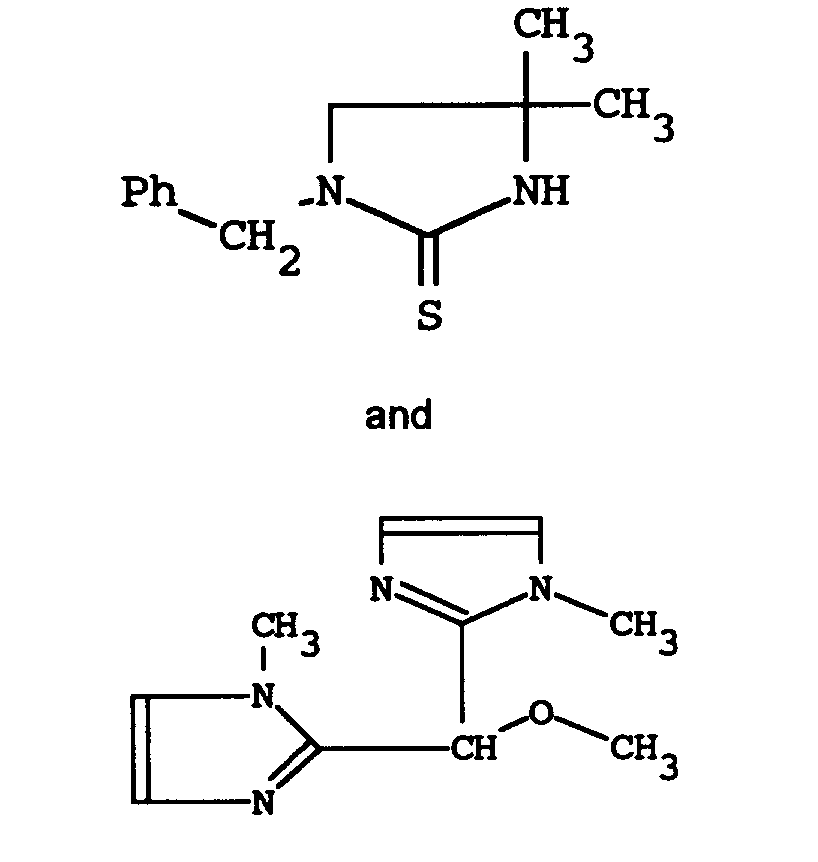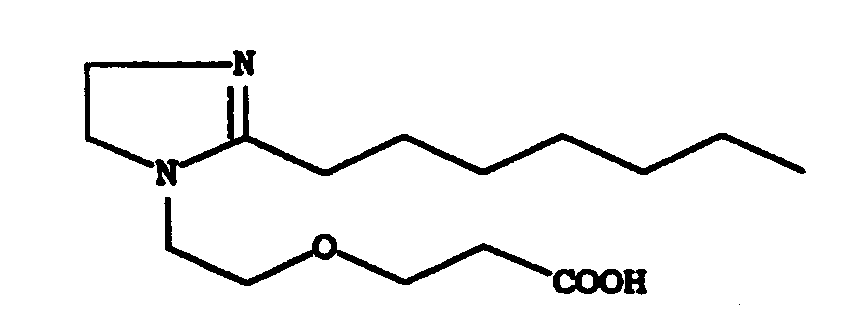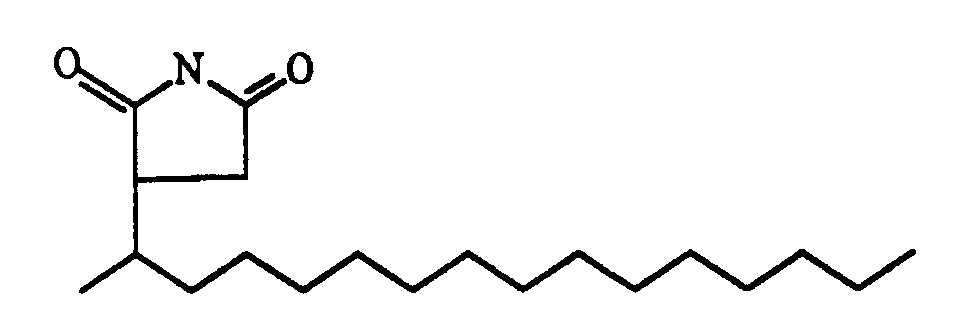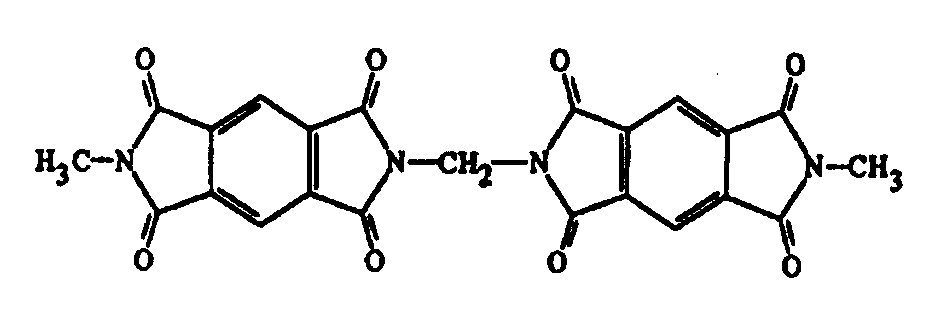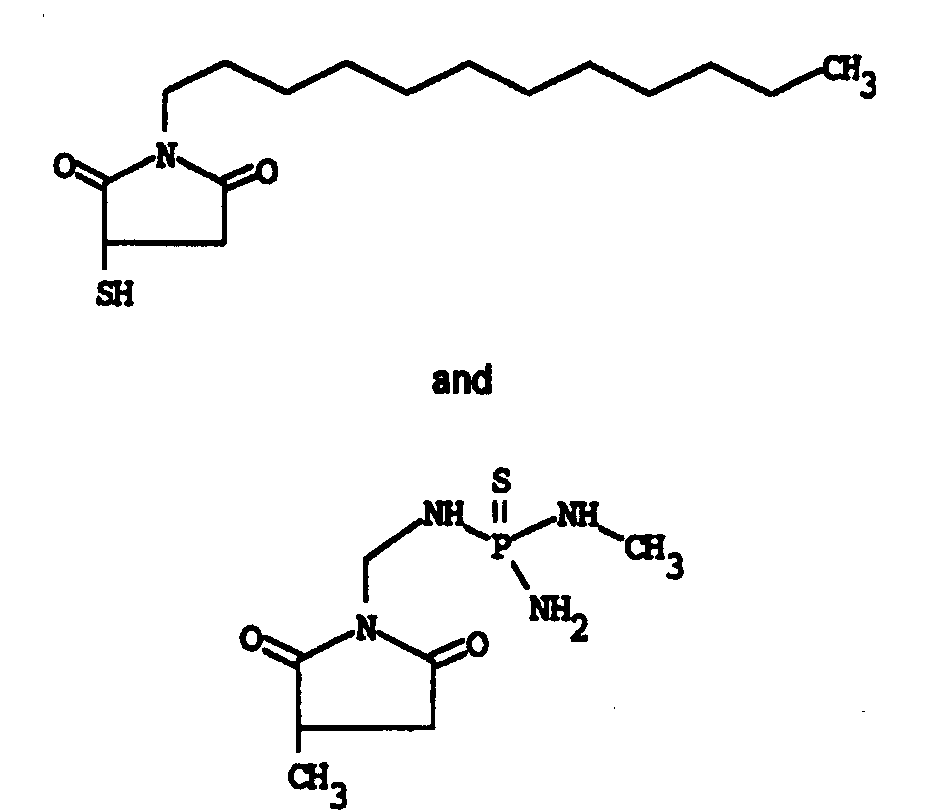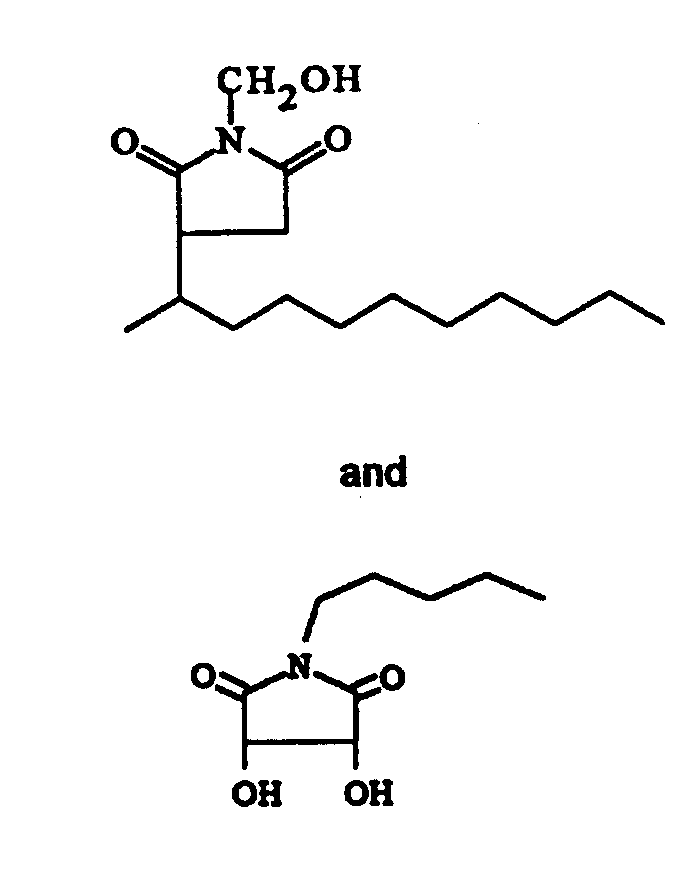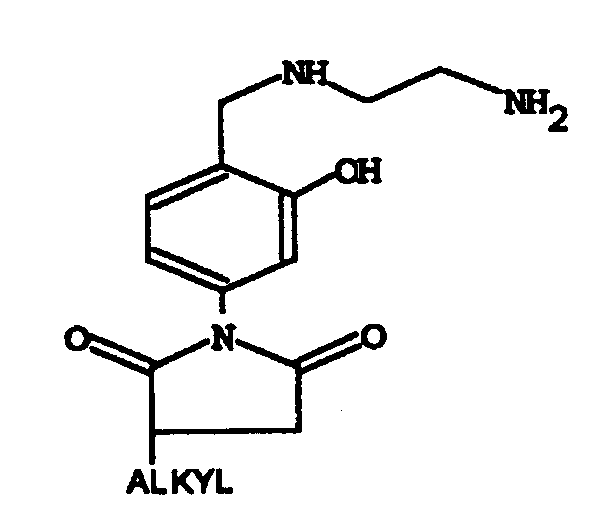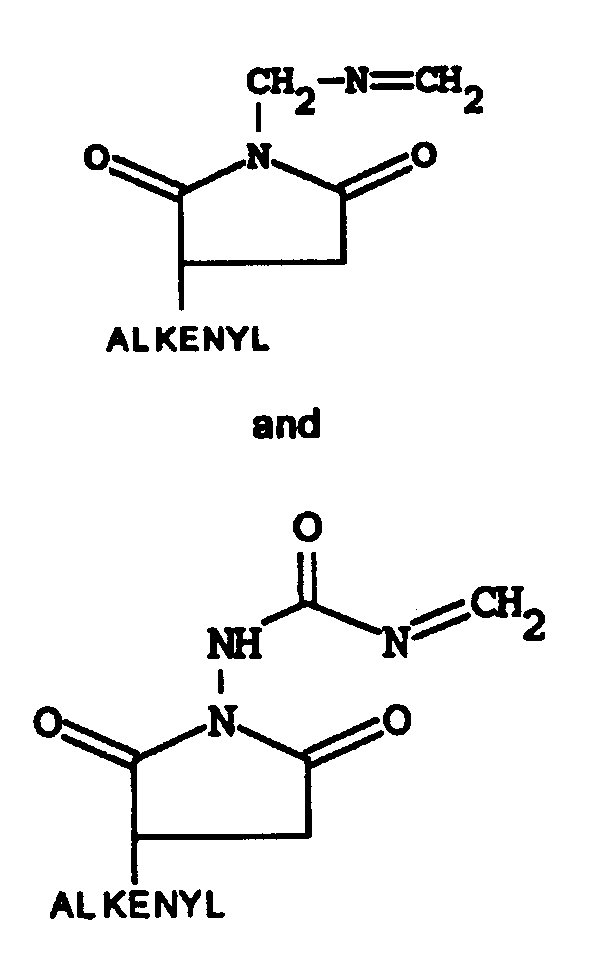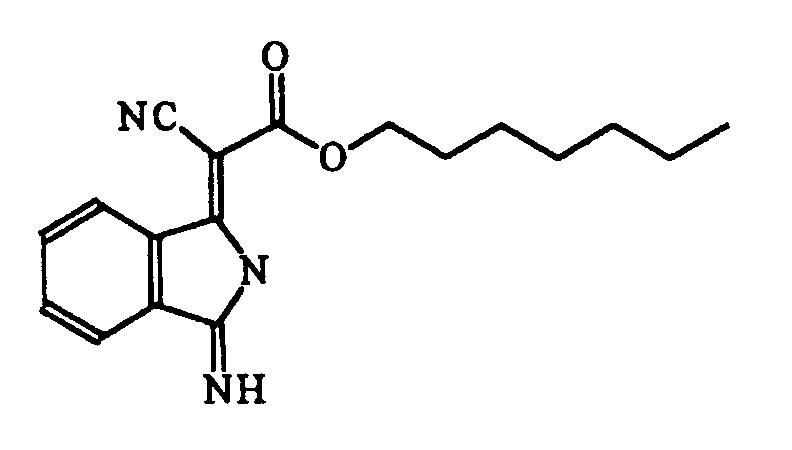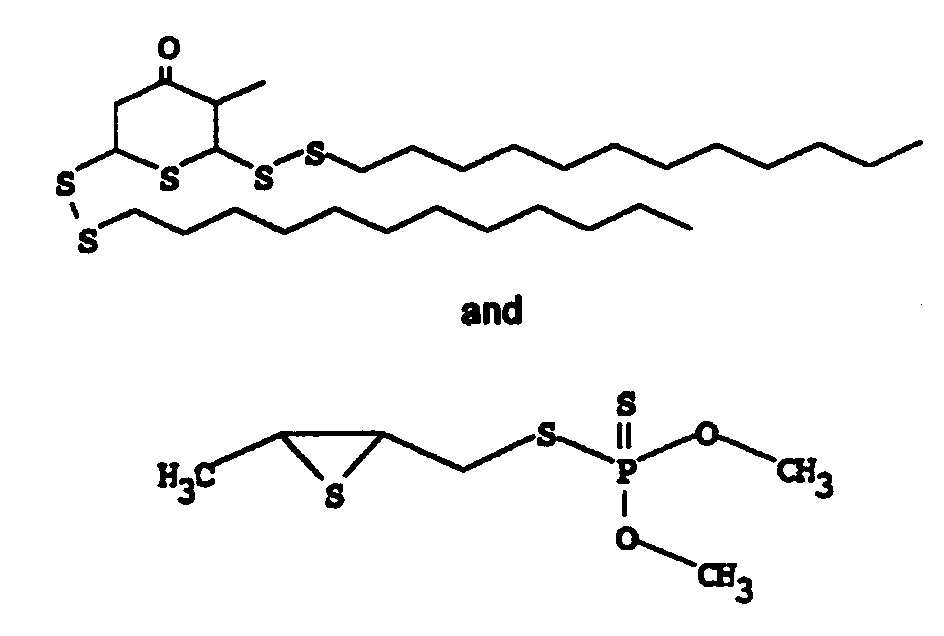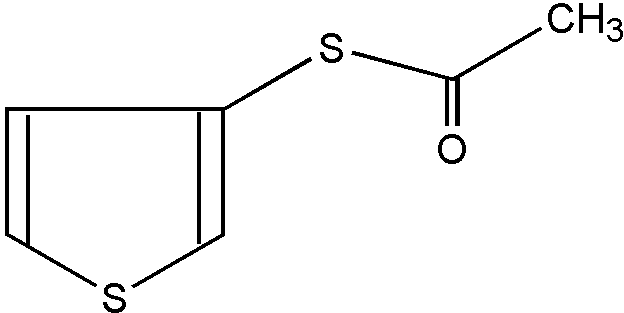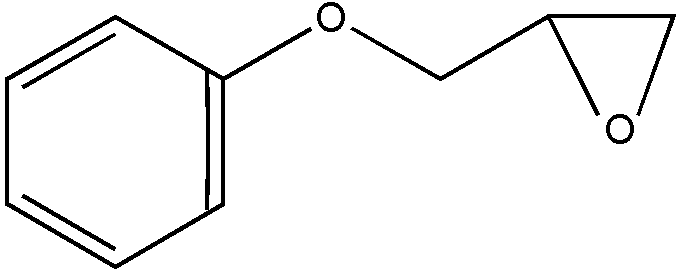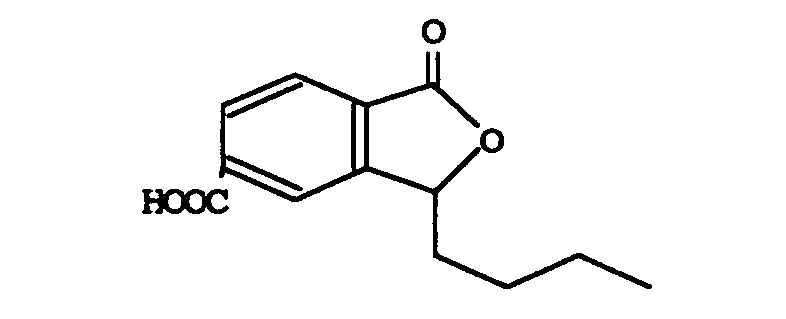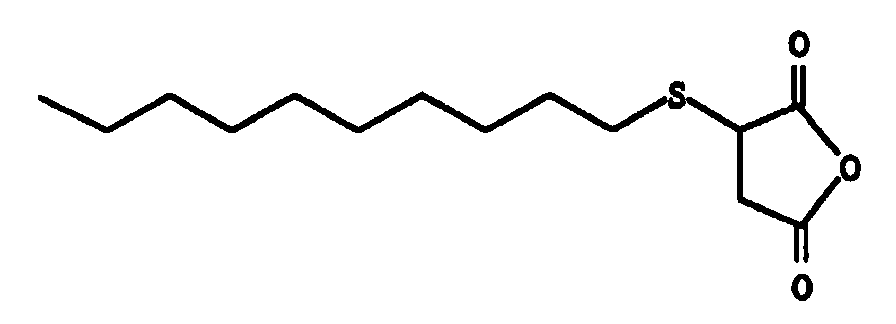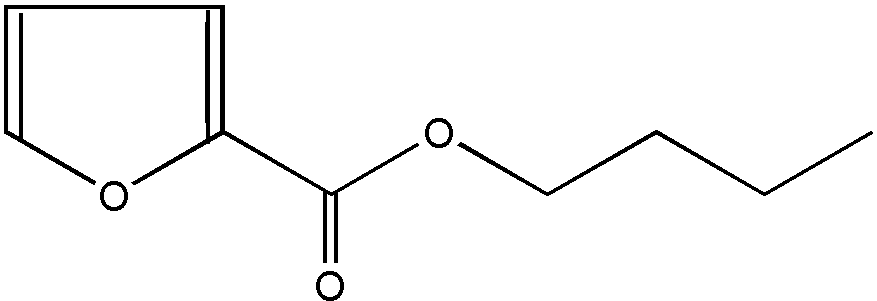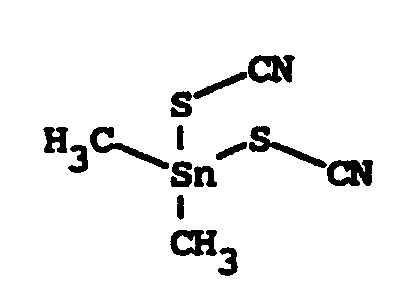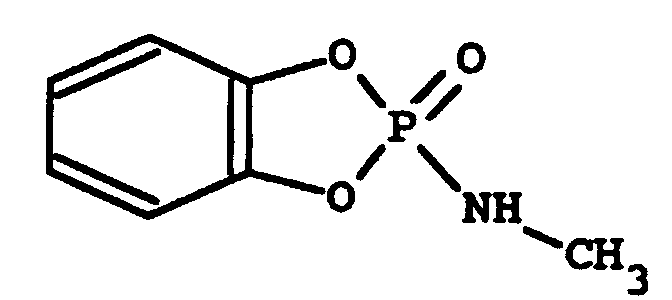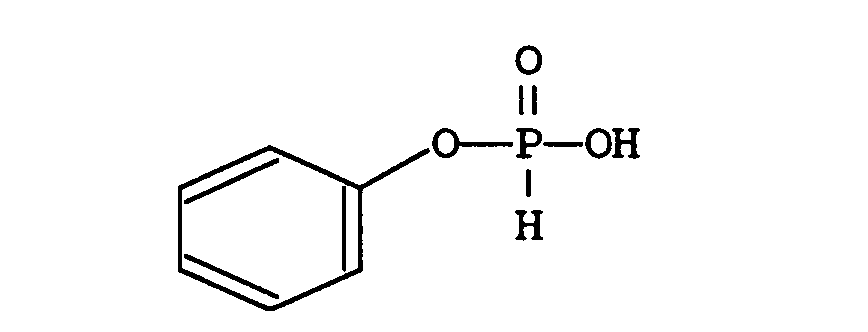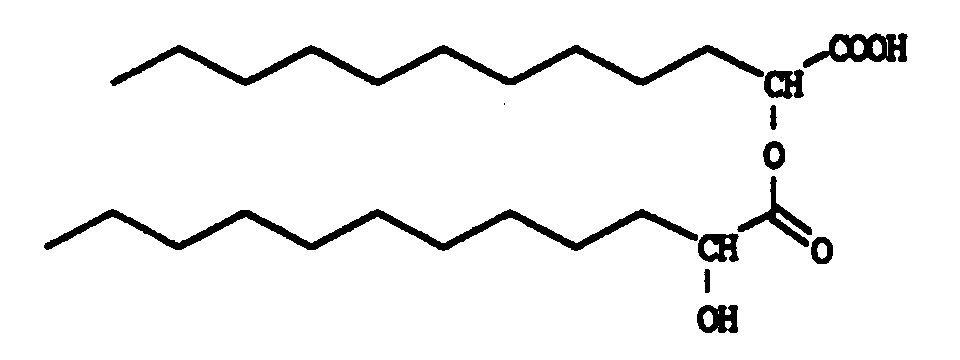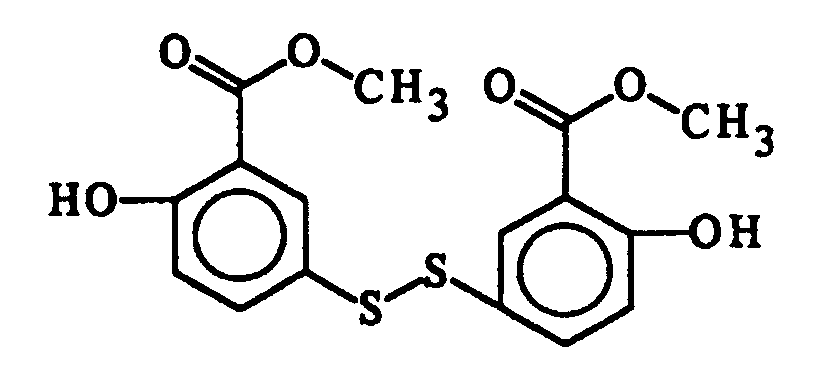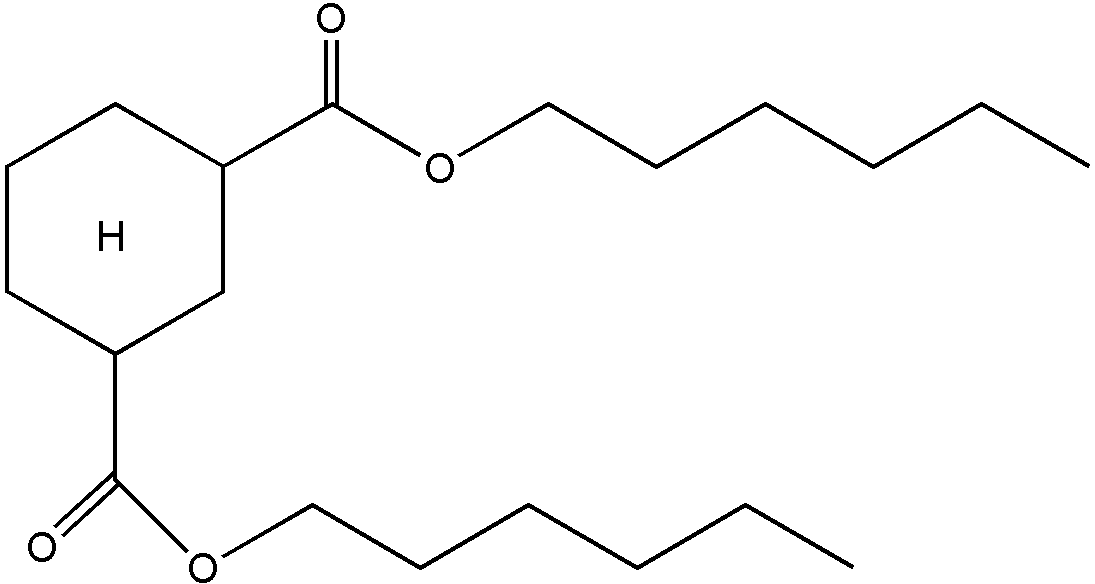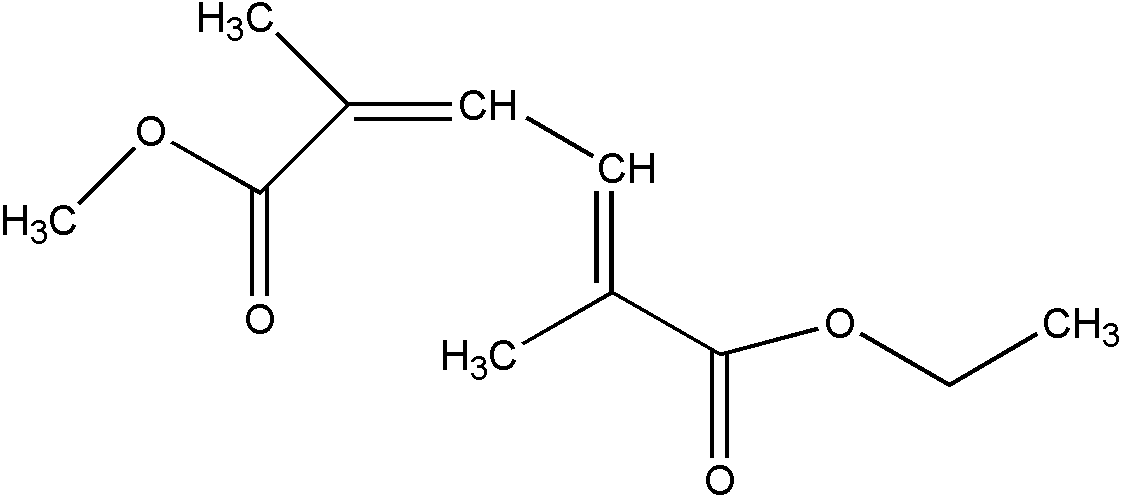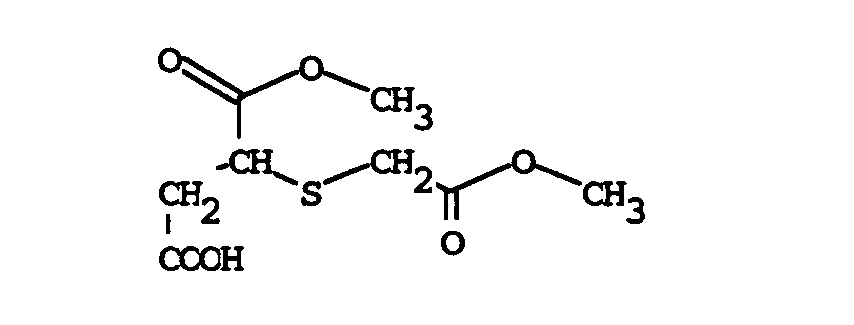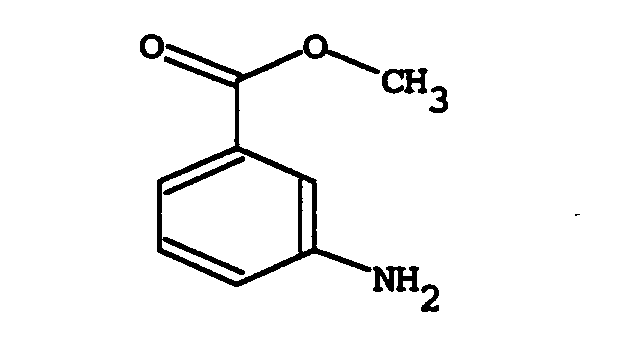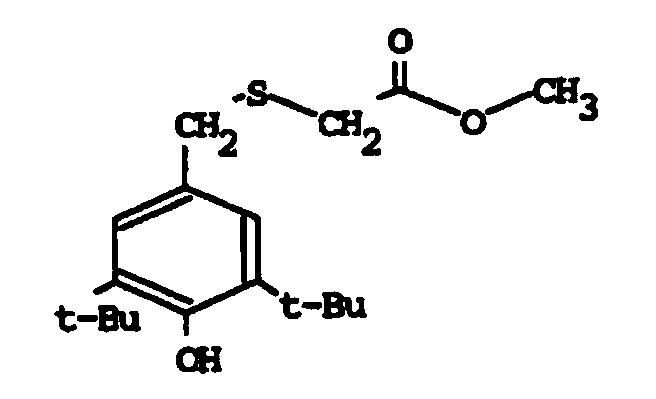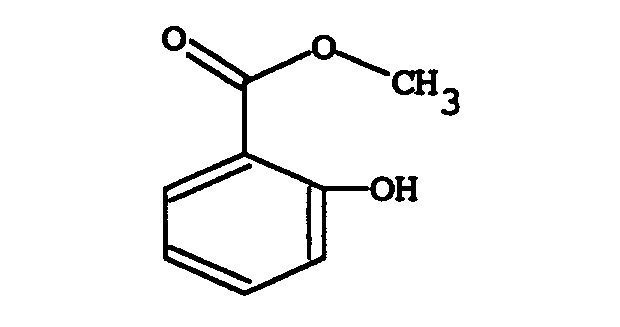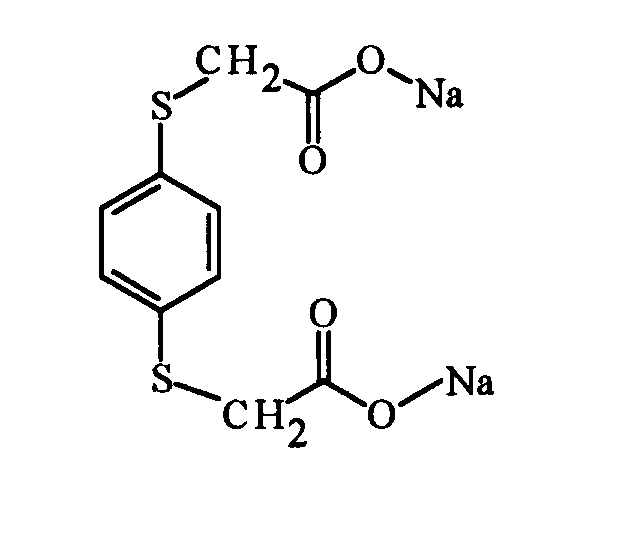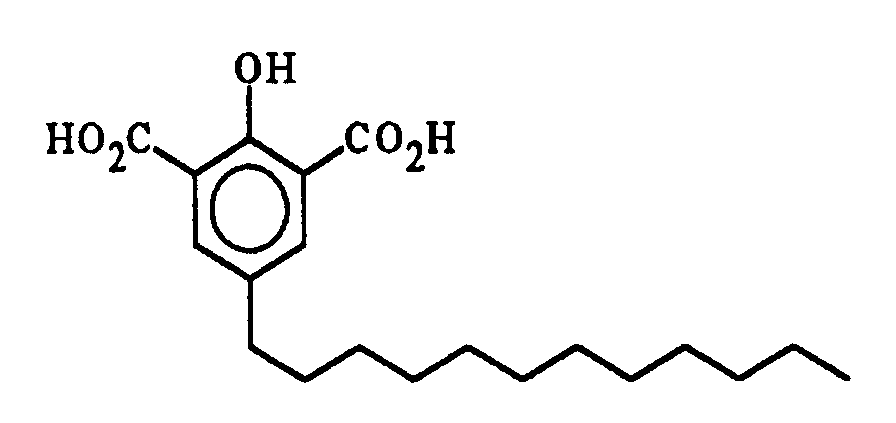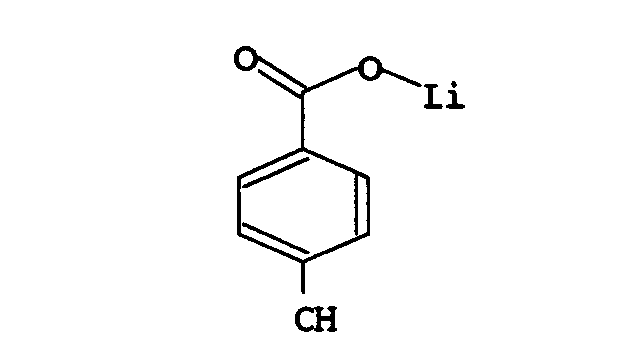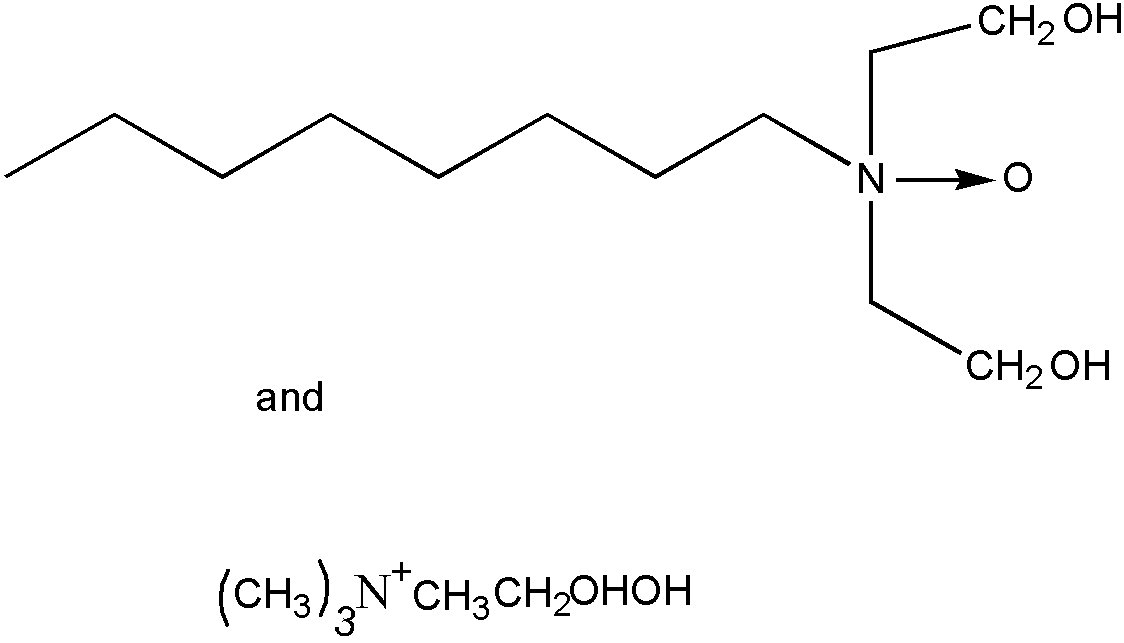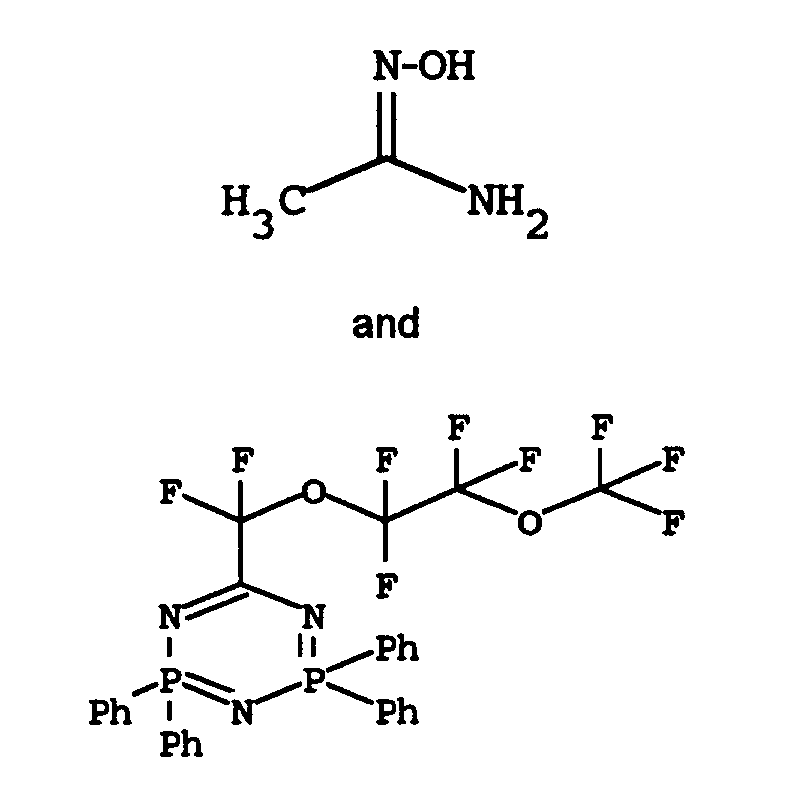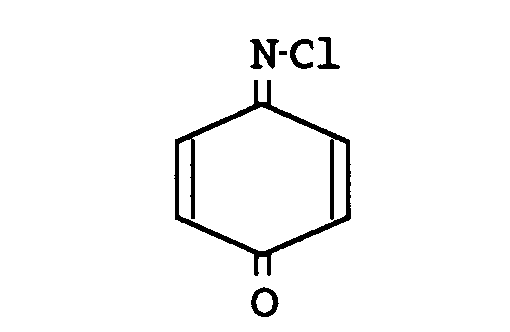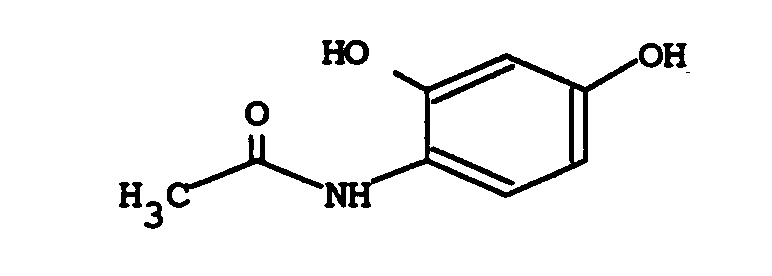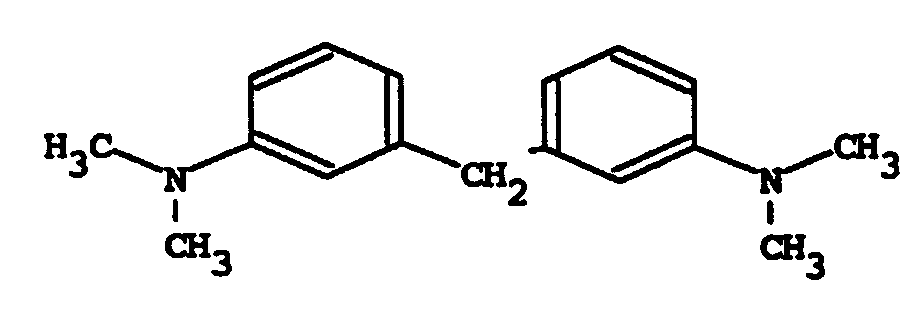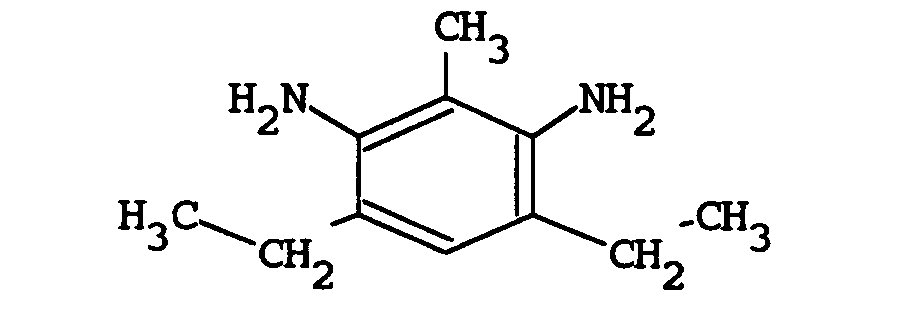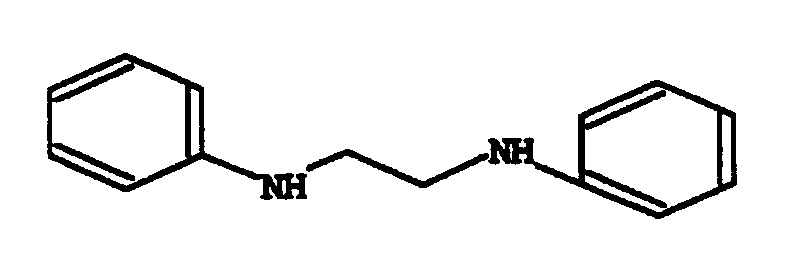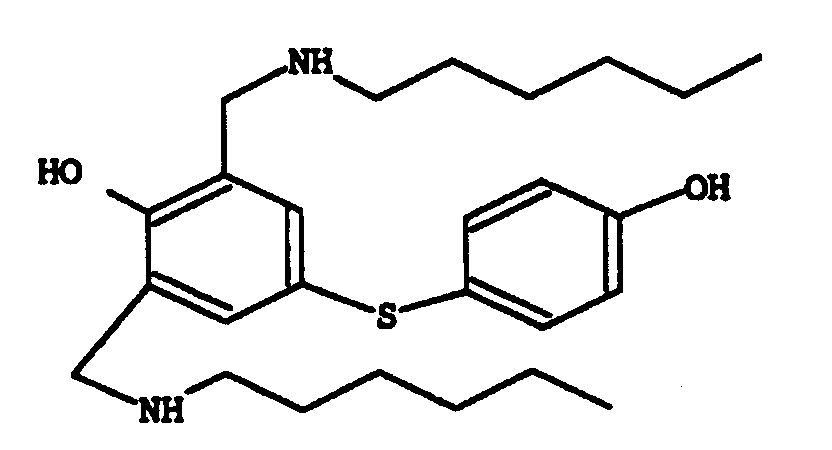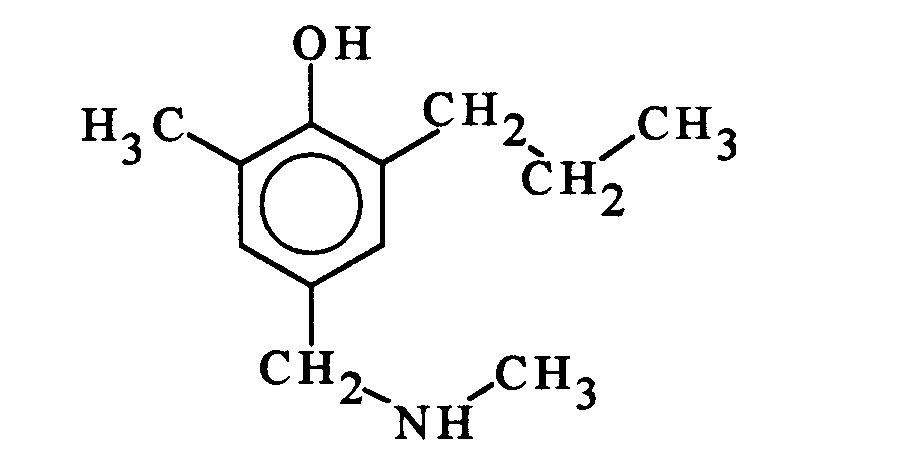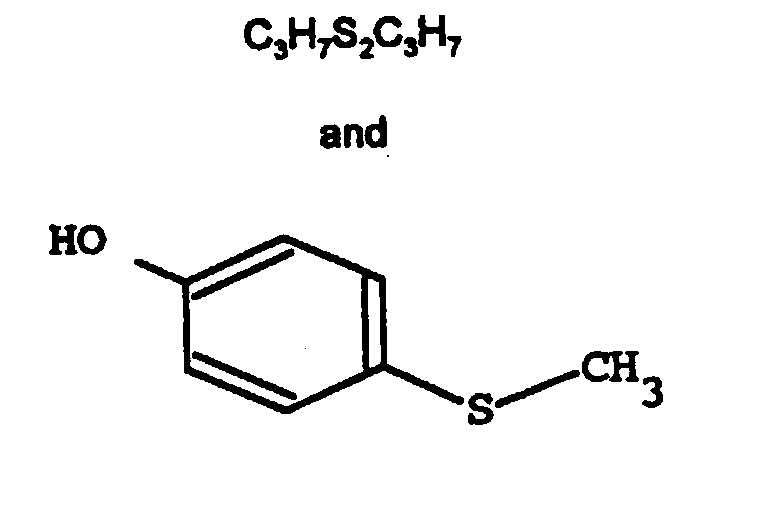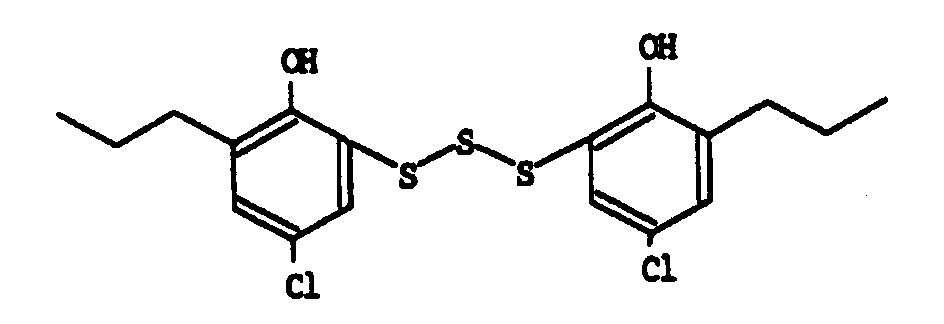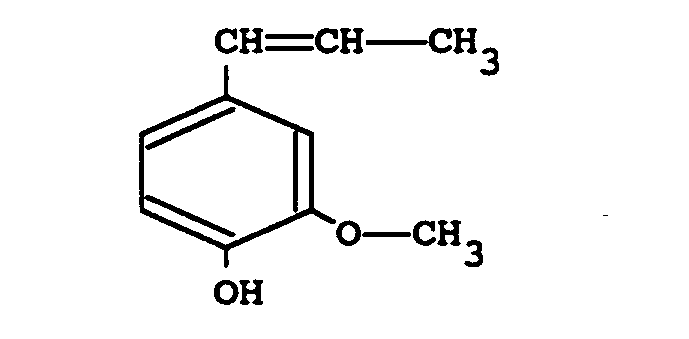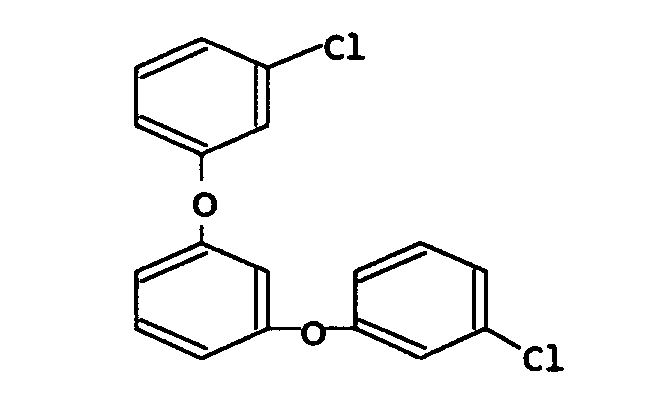SECTION I - CLASS DEFINITION
This class is an integral part of Class 252, as shown by the
position of the box identifying this class in the Class 252 schedule.
As such, this class is subject to the Class Definition and Notes
of Class 252.
A. GENERAL STATEMENT
Patents which contain a claim to a lubricant composition are
placed in this Class as original patents, and are cross-referenced
wherever necessary or desirable. Patents which disclose the use
of claimed compositions as lubricants, and recite no claims to a
use provided for elsewhere, are similarly classified in this Class.
If no composition claims limited to a specific use are recited, and
plural utilities are disclosed, or if composition claims to plural
utilities are recited, reference should be made to the superiority
listing in the (5) note of the Class 252 Definition to determine
the original classification of the patent.
This class provides for:
(1) compositions of matter which are solid antifriction devices
or articles described in terms of their chemical composition,
(2) materials from which said solid antifriction devices or
articles are fashioned,
(3) compositions which serve as lubricants or separants for
moving solid surfaces,
(4) compositions of mineral oils admixed with non-hydrocarbon
materials and not limited to a function or utility provided for
elsewhere in Class 252 or any other class.
B. DETAILED STATEMENT
(1) The solid antifriction devices or articles described in terms
of their chemical composition are characterized by having a lubricant
material as a permanent part of the article or device. This permanence
may be accomplished by permanent coating, impregnation into the interstices
of the article or device, or by being part of the composition of
matter from which the article or device is fashioned. The articles
and devices are further characterized by retention of their shape
during use.
The type of solid antifriction article or device provided for
herein is exemplified by: bearings, rings, seals, journal boxes,
bushings, brakes, clutches, gun wads, or liners for bearings, brakes
or clutches.
Any processes of making such solid antifriction articles or
devices, or peculiar to making such articles or devices, for which
there is no provision elsewhere are provided for herein.
Mere or nominal use of such solid antifriction articles or devices
as lubricating elements is provided for herein, if there is no provision
elsewhere.
(2) The discussion of solid antifriction articles and devices
in the Detailed Statement, paragraph 1, supra, is generally applicable
also to the materials from which these articles and devices are
fashioned.
The materials provided for herein from which said solid antifriction
articles or devices are made are the aggregate materials, not individual
components of the materials or anything less than the entirety of
the material suitable to be fashioned into said article or device.
(3) The lubricant or separant compositions for moving solid
surfaces provided for herein may be liquid, plastic, or fluent compositions
specialized and designed for use between two relatively moving surfaces
and in contact therewith for reducing friction therebetween or preventing
said surfaces from contacting each other. The compositions must
include at least one component that is not a hydrocarbon (except
if the hydrocarbon is a solid synthetic polymer).
Any process of making such compositions, or peculiar to making
such compositions, for which there is no provision elsewhere is
provided for herein.
(4) This class is the generic home for mineral oils admixed
with non-hydrocarbon materials and not limited to a function or
utility provided for elsewhere in Class 252 or any other class.
Examples of such compositions are mineral oils mixed with antioxidants,
corrosion inhibitors, gum inhibitors, stabilizers, etc.
SECTION II - NOTES TO THE CLASS DEFINITION
| | (1)
Note. Components of compositions, if described purely in functional
terms such as "antioxidant," "VI improver," etc.,
will not be considered as determinative of classification. In other
words, one should not classify a claim in a particular subclass
of this class by referring to the specification for the chemical
structure identity of a component described in the claims in purely
functional language. If the claims of a patent are devoid of chemical
structure for the components of a composition, the original classification
of the patent will be subclass 200 or subclass 220, assuming that
the patent claims are not provided for in another class or classes. |
| | (2)
Note. Mere or nominal methods of use of a chemical compound
as a lubricant or separant within the meaning of the class definition
are classified in this class. |
| | (3)
Note. When the term "hydrocarbon" is used in
this class, it means an organic compound which consists exclusively
of carbon and hydrogen. |
| | (4)
Note. When a component of a composition classified in this
Class (508) is of indeterminate chemical structure, the following principles
shall apply to the classification thereof:
| | (a)
a number of subclasses herein provide for components of a
composition described in terms of their being reaction products
of indeterminate structure derived from the reaction of a particular
type compound of known structure. |
| | (b)
a composition component of indeterminate structure that can
not be classified as described in (a), supra, shall be classified by
considering two additional possible methods for classifying it and
employing the one which results in the highest classification in
the class. The two methods are: (1) Classify according to a partial
structure known to be part of the component. (2) Classify based
on a reactant utilized to make the component, and place in the highest
reactant classification, with priority given to organic reactants.
If no organic reactants are used, classify based on the highest
inorganic reactant classification. | |
SECTION III - LINES WITH OTHER CLASSES AND WITHIN THIS CLASS
| | (1)
Note. When the expression "organic compound" is
used in this class, it means a compound which meets the requirements
of the Class 260 class definition, i.e., the molecule is characterized
by two carbons bonded together, one atom of carbon bonded to at
least one atom of hydrogen or halogen, or one atom of carbon bonded
to at least one atom of nitrogen by a single or double bond. Certain
compounds are exceptions to this rule, i.e., HCN, CN-CN, HNCO, HNCS,
cyanogen halides, cyanamide, fulminic acid and metal carbides. Said
exceptions and all other chemical compounds shall be regarded as
inorganic. |
| | (2)
Note. The organic chemical structure terminology used in this
class is consistent with that used in the Glossary for the Class
532 - Organic Compounds - part of the Class 532-570 Series (Published
May 22, 1984 in Addendum No. 1-Order No. 946) except as otherwise
noted. |
| | (3)
Note. The rules for determining Class placement of the Original
Reference (OR) for claimed chemical compositions are set forth in
the Class Definition of Class 252 in the section LINES WITH OTHER CLASSES
AND WITHIN THIS CLASS, subsection COMPOSITION CLASS SUPERIORITY,
which includes a hierarchical ORDER OF SUPERIORITY FOR COMPOSITION
CLASSES. |
SECTION IV - REFERENCES TO OTHER CLASSES
SEE OR SEARCH CLASS:
| 29, | Metal Working,
subclass 404 for a process of breaking in an engine using a
break-in lubricant. |
| 44, | Fuel and Related Compositions,
subclasses 300+ particularly (5) Note to subclass 300 for the line
between Class 44 and this class (252). |
| 75, | Specialized Metallurgical Processes, Compositions
for Use Therein, Consolidated Metal Powder Compositions, and Loose
Metal Particulate Mixtures, appropriate subclasses for a bearing containing a continuous
phase of metal made by consolidating metal particles, particularly
subclass 231 for such a bearing containing molybdenum disulfide
or other solid or other solid lubricant. |
| 102, | Ammunition and Explosives, particularly
subclass 511 for such devices embodying lubricants wherein there
is claimed the structure of the device which is more than a mere
recitation of the composition or of a carrier including a lubricant. |
| 106, | Compositions: coating or Plastic,
subclasses 38.2 through 38.9for compositions used in preparing molds and in
coating molds. These subclasses have not been exhaustively screened for
patents which meet the definition of this Class 508; a search of
these subclasses may thus be appropriate to ensure a complete search. |
| 148, | Metal Treatment,
subclasses 206 through 238for carburizing or nitriding metal substrates using
externally supplied carbon or nitrogen, subclasses 240-287 for processes
of reactive coating of a metal substrate, particularly subclass
246 wherein the reactive coating composition contains a lubricant,
and subclasses 316-319 for carburized or nitrided metal stock. These
subclassees have not been exhaustively screened for patents which
meet the definition of this Class 508; a search of these subclasses, in
particular subclasses 316-319, may thus be appropriate to ensure
a complete search. |
| 184, | Lubrication, for lubricating processes or apparatus. |
| 208, | Mineral Oils: Processes and Products,
subclasses 14+ for compositions consisting of mineral oils or
mixtures thereof, regardless of the use or function, as for example,
fuels, lubricating oils, etc. |
| 252, | Compositions,
subclasses 71+ for similar compositions which are heat exchange,
low freezing or pour point or high boiling. |
| 252, | Compositions,
subclasses 570+ , for fluent dielectric compositions ("insulating
oils") which contain a hydrocarbon and a nonhydrocarbon. |
| 384, | Bearings, appropriate subclasses for bearings that include
lubricants and significant structure of the bearing. Bearings that
include lubricants when claimed solely in terms of the composition
of which they are composed are classified in this class (Class 252). |
| 420, | Alloys or Metallic Compositions, appropriate subclasses for a bearing distinguished
solely by its alloy or metallic composition. |
| 516, | Colloid Systems and Wetting Agents; Subcombinations
Thereof; Processes of Making, Stabilizing, Breaking, or Inhibiting, appropriate subclasses for subject matter relating
to: colloid systems (such as sols*, emulsions, dispersions,
foams, aerosols, smokes, gels, or pastes) or wetting agents (such
as leveling, penetrating, or spreading); subcombination compositions
of colloid systems containing at least an agent specialized and
designed for or peculiar to use in making or stabilizing colloid
systems; compositions and subcombination compositions specialized
and designed for or peculiar to use in breaking (resolving) or inhibiting
colloid systems; processes of making the compositions or systems
of the class; processes of breaking (resolving) or inhibiting colloid
systems; in each instance, when generically claimed or when there
is no hierarchically superior provision in the USPC for the specifically
claimed art. |
| 520, | Synthetic Resins or Natural Rubbers, appropriate subclasses, particularly Class 523,
subclasses 149+ for a composition containing a synthetic resin
or natural rubbers having utility as a friction element or to processes
of preparing said composition. |
| 585, | Chemistry of Hydrocarbon Compounds,
subclasses 1+ for a composition consisting only of hydrocarbons,
regardless of the use or function, as for example, fuels, lubricating
oils, etc. Such hydrocarbons may not be solid synthetic polymers. |
SUBCLASSES
![[List of Patents for class 508 subclass 100]](../ps.gif) 100 100 | SOLID ANTIFRICTION DEVICE, ARTICLE OR MATERIAL THEREFOR
(i.e., SHAPED SOLID ARTICLES WHICH RETAIN THEIR SHAPE DURING USE, SUCH
AS BEARINGS, RINGS, SEALS, JOURNAL BOXES, BUSHINGS, BRAKES, CLUTCHES,
GUN WADS, JOURNAL BEARINGS, OR LINERS FOR BEARINGS, BRAKES OR CLUTCHES, OR
MATERIAL THEREFOR, WHEREIN A LUBRICANT IS A PERMANENT PART OF THE
SOLID ANTIFRICTION DEVICE, ARTICLE OR MATERIAL, WHETHER BY PERMANENT
COATING, IMPREGNATION INTO THE INTERSTICES THEREOF, OR BY BEING
PART OF THE COMPOSITION) (E.G., SYNTHETIC RESIN TYPE SOLID ANTIFRICTION
DEVICES, ETC.): |
| | This subclass is indented under the class definition. Antifriction devices, articles or materials therefor under
the ... which, in the case of the articles or devices, are: (1)
solid, (2) shaped, (3) shape-retaining during use and (4) characterized
by having a lubricant substance as a permanent part of the device
or article, which permanence may be accomplished by permanent coating,
impregnation into the interstices thereof, or by being part of the
composition from which the article or device is fashioned; the materials
therefor are the aggregate materials which differ from the articles
or devices only in that they have not been shaped.
| | (1)
Note. This subclass and its indents provide for a backing
which is coated with a layer of lubricating substance, provided that
not enough structure is recited to warrant classification elsewhere. |
| | (2)
Note. This subclass and its indents provide for a backing
which is coated with plural layers only if (a) each layer is a lubricant
layer, and (b) not enough structure is recited to warrant classification elsewhere. |
| | (3)
Note. This subclass and its indents provide for articles,
devices or materials therefor wherein a composition containing metal
powder is sintered, compacted or compressed, only if a lubricant
substance is (1) layered or (2) impregnated on or into the composition
after the composition is sintered, compacted or compressed. |
SEE OR SEARCH CLASS:
| 148, | Metal Treatment,
subclasses 206 through 238for carburizing or nitriding metal substrates using
externally supplied carbon or nitrogen, subclasses 240-287 for processes
of reactive coating of a metal substrate, particularly subclass
246 wherein the reactive coating composition contains a lubricant,
and subclasses 316-319 for carburized or nitrided metal stock. These
subclassees have not been exhaustively screened for patents which
meet the definition of this Class 508; a search of these subclasses,
in particular subclasses 316-319, may thus be appropriate to ensure
a complete search. |
|
| | |
![[List of Patents for class 508 subclass 101]](../ps.gif) 101 101 | Animal or plant matter (e.g., blood, hair, skin, wood,
hemp, cotton, paper, lard, castor oil, shellac, glue, beeswax, etc.): |
| | This subclass is indented under subclass 100. Devices, articles, or materials which contain animal or
plant matter. |
| | |
![[List of Patents for class 508 subclass 110]](../ps.gif) 110 110 | LUBRICANTS OR SEPARANTS FOR MOVING SOLID SURFACES AND MISCELLANEOUS
MINERAL OIL COMPOSITIONS (E.G., WATER CONTAINING, ETC.): |
| | This subclass is indented under the class definition. Compositions which are miscellaneous mineral oil compositions,
or are lubricants or separants for moving solid surfaces.
| | (1)
Note. Compositions classifiable in this subclass contain at
least one component that is not a hydrocarbon (except as a solid
synthetic polymer) or a mineral oil. |
| | (2)
Note. This subclass and its indents provide not only for compositions
of lubricants, per se, but also for compositions of additives intended
to enhance the lubricating properties of a lubricant base. An example
of such an additive composition is a viscosity improving additive composition. |
| | (3)
Note. Since additives to lubricant compositions may serve
more than a single purpose, the primary basis of classification
for this subclass and its indents is the chemical structure of the
nonhydrocarbon ingredients of the composition. |
| | (4)
Note. In classifying compositions in this and indented subclasses,
all ingredients intentionally present in the composition are given
equal weight for purposes of classification without regard to the amount
present or whether the component is a lubricant additive or lubricant base. |
| | (5)
Note. An example of a composition provided for herein is an
emulsion of a hydrocarbon oil and water. | |
| | |
![[List of Patents for class 508 subclass 111]](../ps.gif) 111 111 | Processes of purifying or recovering used lubricant compositions,
and purified or recovered products thereof: |
| | This subclass is indented under subclass 110. Processes which are directed to the chemical or physical
treatment of used lubricant compositions of this class for the purpose
of purification or recovery, or to lubricant compositions described
in terms of a method of purification or recovery thereof after use.
| | (1)
Note. To be classified herein, the process can not simply
be for the purification or recovery of a mineral oil or hydrocarbon lubricating
base. The composition whose purification or recovery is desired
must include at least one component that is not a hydrocarbon (except
if the hydrocarbon is a solid synthetic polymer). |
SEE OR SEARCH CLASS:
| 208, | Mineral Oils: Processes and Products, various subclasses, for the purification and recovery
of mineral oils, per se. |
| 585, | Chemistry of Hydrocarbon Compounds,
subclasses 800+ , for the purification and recovery of mixtures
of hydrocarbons that are neither mineral oils nor solid synthetic
polymers. |
|
| | |
![[List of Patents for class 508 subclass 113]](../ps.gif) 113 113 | Graphite, coal, or elemental carbon: |
| | This subclass is indented under subclass 110. Compositions which contain elemental carbon, coal or graphite.
SEE OR SEARCH CLASS:
| 516, | Colloid Systems and Wetting Agents; Subcombinations
Thereof; Processes of Making, Stabilizing, Breaking, or Inhibiting,
subclass 32 for colloid systems of colloid-sized carbon (e.g., diamond,
graphite) dispersed in primarily organic continuous liquid phase,
subclasses 38+ for colloid systems of colloid-sized bituminous, coal,
or Carbon phase dispersed in aqueous continuous liquid phase, cross-reference
901 for colloid systems of substantially pure elemental carbon (graphite,
lamp black, carbon black, fullerenes); or agents for such systems
or making or stabilizing such systems or agents; in each instance, when
generically claimed or when there is no hierarchically superior
provision in the USPC for the specifically claimed art. |
|
| | |
![[List of Patents for class 508 subclass 114]](../ps.gif) 114 114 | With silk, sponge, hair, skin, leather, meat, or fibrous
plant matter (e.g., cork, bamboo, bark, sawdust, cotton, etc.): |
| | This subclass is indented under subclass 113. Compositions which contain, in addition to the graphite,
coal, or elemental carbon, at least one of fibrous plant matter,
meat, leather, skin, hair, sponge or silk.
| | (1)
Note. Meat is intended to indicate the flesh of animals. |
| | (2)
Note. Sponge is intended to encompass natural sponge, or synthetic
sponge which is identified as sponge rather than as a particular
chemical substance. If a component is identified both as sponge and
in terms of its chemical structure, said component should be classified
as an original here and should be cross-referenced to the appropriate
chemical structure subclass. |
| | (3)
Note. Hair is intended to encompass the fine, threadlike outgrowths
from the skin of an animal; skin is intended to encompass the outer
covering or integument of an animal body. |
| | (4)
Note. Fibrous plant matter indicates plant matter in which
the plant fibers have not been destroyed. |
| | (5)
Note. Chemically modified cellulose (e.g. CMC, cellulose ethers,
etc.) is not considered as fibrous plant matter. | |
| | |
![[List of Patents for class 508 subclass 115]](../ps.gif) 115 115 | With naturally occurring resin, salt thereof, agar, natural
rubber, tar, pitch, animal glue, turpentine, or carbohydrate gum: |
| | This subclass is indented under subclass 113. Compositions which contain, in addition to the graphite,
coal or elemental carbon, at least one of carbohydrate gum, turpentine,
animal glue, pitch, tar, natural rubber, agar, naturally occurring
resins, or salts of naturally occurring resins.
| | (1)
Note. For the definition of naturally occurring resin, see
the definition of subclass 200 in Class 530, Chemistry: Natural
Resins or Derivatives; Peptides or Proteins: Lignins or Reaction
Products Thereof. |
| | (2)
Note. Animal glue is intended to encompass the normally impure
animal matter of proteinaceous nature which found early use as an
adhesive, etc. A substance identified as "glue",
without further elucidation, will be construed as animal glue. |
| | (3)
Note. Carbohydrate gum is intended to encompass the complex
carbohydrate mucilaginous plant stem excretions which normally yield
sugar on hydrolysis. Examples are gum arabic and gum tragacanth.
A substance identified as gum, without further elucidation, will
be construed as carbohydrate gum. |
| | (4)
Note. Tar and pitch are generally considered as mineral oils
for purposes of classification. |
SEE OR SEARCH CLASS:
| 208, | Mineral Oils: Processes and Products, especially
subclasses 18+ for lubricating compositions which are mixtures of
mineral oils only. |
|
| | |
![[List of Patents for class 508 subclass 116]](../ps.gif) 116 116 | With organic -C(=O)O- compound: |
| | This subclass is indented under subclass 113. Compositions which contain, in addition to the graphite,
coal, or elemental carbon, an organic -C(=O)O- compound.
| | (1)
Note. An organic -C(=O)O- compound is one in which
the carbon of the -C(=O)O- is, or is attached directly
or indirectly by nonionic bonding to, the carbon of an organic compound. |
| | (2)
Note. See Notes to the Class Definition for the definition
of an organic compound. |
| | (3)
Note. An example of a component provided for herein is castor
oil. | |
| | |
![[List of Patents for class 508 subclass 120]](../ps.gif) 120 120 | The organic -C(=O)O- compound is a naturally occurring
carboxylic acid ester wax, or a reaction product thereof of indeterminate structure
(e.g., beeswax, spermaceti, lanolin, degras, Japan wax, etc.): |
| | This subclass is indented under subclass 116. Compositions wherein the organic -C(=O)O- compound
is (1) a reaction product of a naturally occurring carboxylic acid
ester wax, which product is of indeterminate structure, or (2) a
naturally occurring carboxylic acid ester wax, per se. |
| | |
![[List of Patents for class 508 subclass 121]](../ps.gif) 121 121 | With boron or silicon compound: |
| | This subclass is indented under subclass 116. Compositions which contain, in addition to the organic -C(=O)O-
compound and the graphite, coal or elemental carbon, a compound
which contains boron or silicon.
| | (1)
Note. Example of components provided for herein are borax
and silica. | |
| | |
![[List of Patents for class 508 subclass 124]](../ps.gif) 124 124 | With silicon compound: |
| | This subclass is indented under subclass 123. Compositions which contain, in addition to the elemental
metal or metal alloy and the graphite, coal, or elemental carbon,
a compound that contains silicon. |
| | |
![[List of Patents for class 508 subclass 126]](../ps.gif) 126 126 | With silicon compound: |
| | This subclass is indented under subclass 113. Compositions which contain, in addition to the graphite,
coal, or elemental carbon, a compound that contains silicon. |
| | |
![[List of Patents for class 508 subclass 127]](../ps.gif) 127 127 | With non-silicon inorganic compound (except water): |
| | This subclass is indented under subclass 126. Compositions which contain, in addition to the silicon compound
and the graphite, coal, or elemental carbon, an inorganic compound (excluding
water) that does not contain silicon.
| | (1)
Note. See Notes to the Class Definition for the definition
of organic compound. Any chemical compound not regarded as organic
therein shall be considered inorganic. |
| | (2)
Note. Water may be present as a component herein, providing
that a further non-siliceous inorganic compound is present. | |
| | |
![[List of Patents for class 508 subclass 128]](../ps.gif) 128 128 | With organic sulfur, phosphorus, or nitrogen compound: |
| | This subclass is indented under subclass 113. Compositions which contain, in addition to the graphite,
coal, or elemental carbon, an organic nitrogen compound, an organic
phosphorus compound, or an organic sulfur compound.
| | (1)
Note. An organic nitrogen compound is one in which nitrogen
is attached directly or indirectly by nonionic bonding to carbon
of an organic compound. Organic phosphorus compounds and organic
sulfur compounds are similarly defined. |
| | (2)
Note. See Notes to the Class Definition for the definition
of an organic compound. | |
| | |
![[List of Patents for class 508 subclass 129]](../ps.gif) 129 129 | With inorganic compound (except water): |
| | This subclass is indented under subclass 113. Compositions which contain, in addition to the graphite,
coal or elemental carbon, an inorganic compound (except water).
| | (1)
Note. Water may be present as a component herein, provided
that an additional inorganic compound is present. |
| | (2)
Note. See Notes to the Class Definition for the definition
of an organic compound. Any chemical compound not regarded as organic
therein shall be considered inorganic. | |
| | |
![[List of Patents for class 508 subclass 130]](../ps.gif) 130 130 | With organic oxygen or halogen compound: |
| | This subclass is indented under subclass 113. Compositions which contain, in addition to the graphite,
coal, or elemental carbon, an organic oxygen compound or an organic
halogen compound.
| | (1)
Note. An organic oxygen compound is one in which oxygen is
attached directly or indirectly by nonionic bonding to carbon of
an organic compound. Organic halogen compounds are similarly defined. |
| | (2)
Note. See Notes to the Class Definition for the definition
of an organic compound. | |
| | |
![[List of Patents for class 508 subclass 132]](../ps.gif) 132 132 | Tar, tar distillate, or chemically reacted tar or tar distillate: |
| | This subclass is indented under subclass 110. Compositions which contain a chemically reacted tar, a chemically
reacted tar distillate, a tar distillate, or tar.
| | (1)
Note. Tar and tar distillate are generally considered as mineral
oils. |
| | (2)
Note. An example of chemically reacted tar provided for herein
is sulfurized tar. |
SEE OR SEARCH CLASS:
| 208, | Mineral Oils: Processes and Products, especially
subclasses 18+ for lubricant compositions which are mixtures of
mineral oils only. |
|
| | |
![[List of Patents for class 508 subclass 133]](../ps.gif) 133 133 | Asphalt, pitch, pitch distillate, or chemically reacted
asphalt or pitch (e.g., sulfurized, salified, reduced, blown, etc.): |
| | This subclass is indented under subclass 110. Compositions which contain chemically reacted asphalt, chemically
reacted pitch, pitch distillate, pitch, or asphalt.
| | (1)
Note. Pitch, pitch distillate, and asphalt are generally considered
as mineral oils. |
SEE OR SEARCH CLASS:
| 208, | Mineral Oils: Processes and Products, especially
subclasses 18+ for lubricant compositions which are mixtures of
mineral oils only. |
|
| | |
![[List of Patents for class 508 subclass 134]](../ps.gif) 134 134 | With carboxylic acid or salt thereof: |
| | This subclass is indented under subclass 133. Compositions which contain, in addition to the asphalt,
pitch, pitch distillate, or chemically reacted asphalt or pitch,
a carboxylic acid or salt thereof.
| | (1)
Note. An example of a component provided for herein is lead
naphthenate. | |
| | |
![[List of Patents for class 508 subclass 136]](../ps.gif) 136 136 | Silicon dioxide, silicic acid, orthosilicate, or metasilicate,
including surface-treated (e.g., clays, onium clays, estersils,
etc.): |
| | This subclass is indented under subclass 110. Compositions which contain silicon dioxide, silicic acid,
orthosilicate, or metasilicate; these materials may be present either
per se or in a surface-treated state.
| | (1)
Note. Surface-treated encompasses both physical and chemical
surface treatment. Silicon dioxide, e.g., may be simply coated,
or its outer layer may be made to chemically react with a surface
treating agent. |
| | (2)
Note. Silicon dioxide is also known as silica, SiO2. |
| | (3)
Note. Silicic acids encompass inorganic compounds wherein
silicon is bonded directly to a hydroxyl group. |
| | (4)
Note. An inorganic compound is any compound not specified
to be organic in (3) Note of the class definition. |
| | (5)
Note. Orthosilicates (M4SiO4)
and metasilicates (M2SiO3)
may combine to form polysilicates, M being metal or in some cases
ammonium. They are salts derived from silica or the silicic acids.
All the common clays are included under this umbrella. |
SEE OR SEARCH CLASS:
| 516, | Colloid Systems and Wetting Agents; Subcombinations
Thereof; Processes of Making, Stabilizing, Breaking, or Inhibiting,
subclasses 31+ for colloid systems of colloid-sized solid or semisolid
phase dispersed in primarily organic continuous liquid phase, subclasses
38+ for colloid systems of colloid-sized bituminous, coal,
or Carbon phase dispersed in aqueous continuous liquid phase, subclasses
77+ for colloid systems of colloid-sized solid phase dispersed
in aqueous continuous liquid phase; subclasses 98+ for colloid
systems of continuous or semicontinuous solid phase with discontinuous
liquid phase (gels, pastes, flocs, coagulates); or agents for such systems
or making or stabilizing such systems or agents; in each instance, when
generically claimed or when there is no hierarchically superior
provision in the USPC for the specifically claimed art. |
|
| | |
![[List of Patents for class 508 subclass 137]](../ps.gif) 137 137 | With non-siliceous boron compound as additional component
or surface-treating agent: |
| | This subclass is indented under subclass 136. Compositions which contain, in addition to the silicon dioxide,
silicic acid, metasilicate, or orthosilicate, a compound that contains
boron but does not contain silicon; the compound may be present
as an additional component or as a surface-treating agent for the
silicon dioxide, silicic acid, orthosilicate, or metasilicate.
| | (1)
Note. Examples of components provided for herein are boron
nitride, boric acid, and trialkyl borate. | |
| | |
![[List of Patents for class 508 subclass 138]](../ps.gif) 138 138 | With non-siliceous fluorine-containing polymer as additional
component or surface-treating agent (e.g., polytetrafluoroethylene,
etc.): |
| | This subclass is indented under subclass 136. Compositions which contain, in addition to the silicon dioxide,
silicic acid, orthosilicate, or metasilicate, a polymer that contains
fluorine but does not contain silicon; the polymer may be present
as an additional component or as a surface-treating agent for the
silicon dioxide, silicic acid, orthosilicate, or metasilicate.
| | (1)
Note. An example of a component provided for herein is polytetrafluoroethylene. | |
| | |
![[List of Patents for class 508 subclass 139]](../ps.gif) 139 139 | With elemental sulfur, elemental metal, or alloy as additional
component or surface-treating agent: |
| | This subclass is indented under subclass 136. Compositions which contain, in addition to the silicon dioxide,
silicic acid, orthosilicate or metasilicate, an alloy, elemental
metal, or elemental sulfur; the elemental sulfur, alloy, or elemental
metal may be present as an additional component or as a surface-treating
agent for the silicon dioxide, silicic acid, orthosilicate, or metasilicate. |
| | |
![[List of Patents for class 508 subclass 140]](../ps.gif) 140 140 | Asbestos: |
| | This subclass is indented under subclass 136. Compositions which contain asbestos, which may or may not
be surface-treated. |
| | |
![[List of Patents for class 508 subclass 141]](../ps.gif) 141 141 | With non-siliceous inorganic heavy metal or aluminum compound
as additional component or surface-treating agent (e.g., molybdenum
disulfide, alumina, etc.): |
| | This subclass is indented under subclass 136. Compositions which contain, in addition to the silicon dioxide,
silicic acid, orthosilicate, or metasilicate, a compound which contains heavy
metal or aluminum but does not contain silicon; the compound may
be present as an additional component or as a surface-treating agent
for the silicon dioxide, silicic acid, orthosilicate, or metasilicate.
| | (1)
Note. Examples of components provided for herein are molybdenum
sulfide and aluminum sulfate. |
| | (2)
Note. Arsenic is considered a heavy metal. |
| | (3)
Note. Heavy metals are those with a specific gravity greater
than 4.0. | |
| | |
![[List of Patents for class 508 subclass 142]](../ps.gif) 142 142 | With carbohydrate or fibrous plant matter as additional
component or surface-treating agent (e.g., starch, elm bark, cellulose
compounds, etc.): |
| | This subclass is indented under subclass 136. Compositions which contain, in addition to the silicon dioxide,
silicic acid, orthosilicate, or metasilicate, a carbohydrate or
fibrous plant matter; the fibrous plant matter or carbohydrate may
be present as an additional component or as a surface-treating agent
for the silicon dioxide, silicic acid, orthosilicate, or metasilicate.
| | (1)
Note. Examples of components provided for herein are dextrine
and elm bark. | |
| | |
![[List of Patents for class 508 subclass 143]](../ps.gif) 143 143 | With added water: |
| | This subclass is indented under subclass 136. Compositions which contain, in addition to the silicon dioxide,
silicic acid, orthosilicate, or metasilicate, water that has been
intentionally added. |
| | |
![[List of Patents for class 508 subclass 144]](../ps.gif) 144 144 | With carboxylic acid, salt thereof, sulfonic acid, or salt
thereof as additional component or surface-treating agent: |
| | This subclass is indented under subclass 136. Compositions which contain, in addition to the silicon dioxide,
silicic acid, orthosilicate, or metasilicate, a carboxylic acid,
a carboxylic acid salt, a sulfonic acid, or a sulfonic acid salt; the
carboxylic acid, sulfonic acid, or salts may be present as an additional
component or as a surface-treating agent for the silicon dioxide, silicic
acid, orthosilicate, or metasilicate. |
| | |
![[List of Patents for class 508 subclass 145]](../ps.gif) 145 145 | With triazine or triazole hetero ring compound as additional
component or surface-treating agent: |
| | This subclass is indented under subclass 136. Compositions which contain, in addition to the silicon dioxide,
silicic acid, orthosilicate or metasilicate, a compound that contains
a triazine hetero ring or a triazole hetero ring; the compound may
be present as an additional component or as a surface-treating agent
for the silicon dioxide, silicic acid, orthosilicate, or metasilicate.
| | (1)
Note. A triazine hetero ring consists of three ring carbons
and three ring nitrogens. A triazole hetero ring consists of two
ring carbons and three ring nitrogens. | |
| | |
![[List of Patents for class 508 subclass 146]](../ps.gif) 146 146 | With heterocyclic ring compound that has ring sulfur or
has chalcogen double bonded to heterocyclic ring carbon as additional component
or surface-treating agent; a heterocyclic ring is one having as
ring members only carbon and at least one hetero atom selected from
chalcogen (i.e., oxygen, sulfur, selenium, or tellurium) and nitrogen
(e.g., thiadiazoles, cyclic carbonates, etc.): |
| | This subclass is indented under subclass 136. Compositions which contain, in addition to the silicon dioxide,
silicic acid, orthosilicate, or metasilicate, a compound which has
a heterocyclic ring having ring sulfur or having chalcogen (i.e.,
oxygen, sulfur, selenium, or tellurium) double bonded to hetero
ring carbon; the compound may be present as an additional component
or as a surface-treating agent for the silicon dioxide, silicic
acid, orthosilicate, or metasilicate. |
| | |
![[List of Patents for class 508 subclass 147]](../ps.gif) 147 147 | With azo compound, inorganic phosphorus salt, or oxidate
of undetermined composition as additional component or surface-treating
agent: |
| | This subclass is indented under subclass 136. Compositions which contain, in addition to the silicon dioxide,
silicic acid, orthosilicate, or metasilicate, an azo compound, an
inorganic compound that is a phosphorus salt, or an oxidate of indeterminate
composition; the azo compound, inorganic compound, or oxidate may
be present as an additional component or as a surface-treating agent
for the silicon dioxide, silicic acid, orthosilicate, or metasilicate.
| | (1)
Note. An azo compound is an organic compound characterized
by the group -N=N- wherein both nitrogens are acyclic and
each is bonded directly to carbon. |
| | (2)
Note. See Notes to the Class Definition for the definition
of an organic compound. | |
| | |
![[List of Patents for class 508 subclass 148]](../ps.gif) 148 148 | Talc, mica, or ultramarine blue: |
| | This subclass is indented under subclass 136. Compositions which contain talc, mica, or ultramarine blue,
any of which may or may not be surface-treated.
| | (1)
Note. Talc is 3MgO-4SiO2-H2O.
It is also called soapstone, French chalk, steatite, etc. |
| | (2)
Note. Ultramarine blue is of the approximate formula
| |
| | |
![[List of Patents for class 508 subclass 152]](../ps.gif) 152 152 | Elemental sulfur, selenium, or tellurium: |
| | This subclass is indented under subclass 110. Compositions which contain elemental sulfur, elemental selenium,
or elemental tellurium.
| | (1)
Note. The elemental sulfur must be elemental sulfur that is
added to the composition. Mineral oils, etc. that naturally contain
a small amount of elemental sulfur do not meet the requirement of
this subclass. | |
| | |
![[List of Patents for class 508 subclass 153]](../ps.gif) 153 153 | With compound containing nitrogen, sulfur, phosphorus,
boron, or halogen: |
| | This subclass is indented under subclass 152. Compositions which contain, in addition to the elemental
sulfur, elemental selenium, or elemental tellurium, a compound that
contains nitrogen, sulfur, phosphorus, boron, or halogen. |
| | |
![[List of Patents for class 508 subclass 157]](../ps.gif) 157 157 | With triglyceride or naturally occurring ester wax (e.g.,
beeswax, palm oil, tallow, etc.): |
| | This subclass is indented under subclass 156. Compositions which contain, in addition to the inorganic
boron compound, a naturally occurring ester wax or a triglyceride.
| | (1)
Note. To be classified herein as a naturally occurring carboxylic
acid ester wax, a substance must either be characterized as a naturally
occurring carboxylic acid ester wax or be known to be a naturally
occurring carboxylic acid ester wax. |
| | (2)
Note. Examples of known naturally occurring carboxylic acid
ester waxes are lanolin, beeswax, carnauba oil, and spermaceti. |
| | (3)
Note. Triglycerides are compounds wherein glycerine has been
esterified with three molar proportions of the same or different
carboxylic acid, carboxylic acid halide, etc. | |
| | |
![[List of Patents for class 508 subclass 160]](../ps.gif) 160 160 | With acyclic organic compound consisting of carbon, hydrogen,
and oxygen (e.g., glycols, glycol ethers, alcohols, etc.): |
| | This subclass is indented under subclass 156. Compositions which contain, in addition to the inorganic
boron compound, an acyclic organic compound that consists of carbon,
hydrogen, and oxygen.
| | (1)
Note. See Notes to the Class Definition for the definition
of an organic compound. |
| | (2)
Note. Examples of components provided for herein are aldehydes,
ketones, ethers, and alcohols. | |
| | |
![[List of Patents for class 508 subclass 165]](../ps.gif) 165 165 | The inorganic compound contains heavy metal or aluminum: |
| | This subclass is indented under subclass 154. Compositions wherein heavy metal or aluminum is in the inorganic
compound.
| | (1)
Note. Arsenic is considered a heavy metal. |
| | (2)
Note. Heavy metals are those with a specific gravity greater
than 4.0. |
| | (3)
Note. Examples of components provided for herein are tungsten
carbonyl and titanium dioxide. | |
| | |
![[List of Patents for class 508 subclass 168]](../ps.gif) 168 168 | With organic nitrogen or halogen compound: |
| | This subclass is indented under subclass 167. Compositions which contain, in addition to the inorganic
molybdenum or tungsten compound, an organic nitrogen compound or
an organic halogen compound.
| | (1)
Note. An organic nitrogen compound is one wherein nitrogen
is attached directly or indirectly by nonionic bonding to carbon
of an organic compound. Organic halogen compound is similarly defined. |
| | (2)
Note. See Notes to the Class Definition for the definition
of an organic compound. | |
| | |
![[List of Patents for class 508 subclass 173]](../ps.gif) 173 173 | With organic compound containing silicon: |
| | This subclass is indented under subclass 154. Compositions which contain, in addition to the inorganic
compound, an organic compound that contains silicon.
| | (1)
Note. See Notes to the Class Definition for the definition
of an organic compound. |
| | (2)
Note. There are no restrictions on the type of bonding between
silicon and the remainder of the compound. | |
| | |
![[List of Patents for class 508 subclass 174]](../ps.gif) 174 174 | With organic phosphorus compound: |
| | This subclass is indented under subclass 154. Compositions which contain, in addition to the inorganic
compound, an organic phosphorus compound.
| | (1)
Note. An organic phosphorus compound is one wherein phosphorus
is attached directly or indirectly by nonionic bonding to carbon
of an organic compound. |
| | (2)
Note. See Notes to the Class Definition for the definition
of an organic compound. | |
| | |
![[List of Patents for class 508 subclass 175]](../ps.gif) 175 175 | With organic -C(=O)O- compound (e.g., ester waxes,
etc.): |
| | This subclass is indented under subclass 154. Compositions which contain, in addition to the inorganic
compound, an organic -C(=O)O- compound.
| | (1)
Note. An organic -C(=O)O- compound is one wherein
the carbon of the -C(=O)O- group is, or is attached directly or
indirectly by nonionic bonding to, the carbon of an organic compound. |
| | (2)
Note. See Notes to the Class Definition for the definition
of an organic compound. | |
| | |
![[List of Patents for class 508 subclass 177]](../ps.gif) 177 177 | With organic nitrogen compound: |
| | This subclass is indented under subclass 175. Compositions which contain, in addition to the inorganic
compound and the organic -C(=O)O- compound, an organic
nitrogen compound.
| | (1)
Note. An organic nitrogen compound is one wherein nitrogen
is attached directly or indirectly to carbon of an organic compound
by nonionic bonding. |
| | (2)
Note. See Notes to the Class Definition for the definition
of an organic compound. | |
| | |
![[List of Patents for class 508 subclass 178]](../ps.gif) 178 178 | The inorganic compound is a metal hydroxide or metal oxide: |
| | This subclass is indented under subclass 175. Compositions wherein the inorganic compound is present as
a metal hydroxide or as a metal oxide.
| | (1)
Note. To be provided for herein, the hydroxide or oxide must
be present by intention, rather than merely in a trace amount remaining
from, e.g., a saponification reaction. | |
| | |
![[List of Patents for class 508 subclass 179]](../ps.gif) 179 179 | With organic nitrogen or sulfur compound: |
| | This subclass is indented under subclass 154. Compositions which contain, in addition to the inorganic
compound, an organic nitrogen or an organic sulfur compound.
| | (1)
Note. An organic nitrogen compound is one wherein nitrogen
is attached directly or indirectly by nonionic bonding to carbon
of an organic compound. Organic sulfur compound is similarly defined. |
| | (2)
Note. See Notes to the Class Definition for the definition
of an organic compound. | |
| | |
![[List of Patents for class 508 subclass 181]](../ps.gif) 181 181 | PTFE (polytetrafluoroethylene): |
| | This subclass is indented under subclass 110. Compositions which contain an addition homopolymer of tetrafluoroethylene, CF2=CF2.
| | (1)
Note. The addition polymers provided for herein have the general
formula (-CF2-CF2-)n . | |
| | |
![[List of Patents for class 508 subclass 183]](../ps.gif) 183 183 | With silicon compound, or organic phosphorus or sulfur
compound: |
| | This subclass is indented under subclass 181. Compositions which contain, in addition to the polytetrafluoroethylene,
an organic phosphorus compound, an organic sulfur compound, or an organic
compound that contains silicon.
| | (1)
Note. An organic phosphorus compound is one wherein phosphorus
is attached directly or indirectly by nonionic bonding to carbon
of an organic compound. Organic sulfur compound is similarly defined. |
| | (2)
Note. See Notes to the Class Definition for the definition
of an organic compound. |
| | (3)
Note. The organic compound that contains silicon provided
for herein can contain the silicon attached directly or indirectly
to carbon of the organic compound by any type bonding. | |
| | |
![[List of Patents for class 508 subclass 185]](../ps.gif) 185 185 | Organic compound containing boron: |
| | This subclass is indented under subclass 110. Compositions which contain boron in an organic compound
component.
| | (1)
Note. An example of a component provided for herein is:
|
| | (2)
Note. This subclass and its indents provide for organic compound
components containing boron, regardless of the type bonding between
boron and the rest of the compound. |
SEE OR SEARCH THIS CLASS, SUBCLASS:
| 150+, | for compositions containing elemental boron. |
| 155+, | for compositions containing boron compounds that
are inorganic. |
|
| | |
![[List of Patents for class 508 subclass 186]](../ps.gif) 186 186 | Borated or boronated carbonated or overbased organic acid
salts (e.g., borated overbased carbonated sulfonates, etc.): |
| | This subclass is indented under subclass 185. Compositions wherein boron is present in the component as
a borated or boronated carbonated or overbased salt of an organic
acid.
| | (1)
Note. The organic acids most generally employed herein are
sulfonic acids and phenols. |
| | (2)
Note. An overbased compound herein is one which an amount
of metal (e.g., Mg, Ca, Ba, Sr) is present which is greater than
the stoichiometric amount of metal which would be present if the
organic acid were completely neutralized. |
| | (3)
Note. A carbonated compound herein is the complex resulting
from the reaction of carbon dioxide with a metal salt of an organic
acid. |
| | (4)
Note. The structure of the components provided for herein
is generally not clear. The components are generally described in
terms of their method of synthesis. | |
| | |
![[List of Patents for class 508 subclass 187]](../ps.gif) 187 187 | Phosphorus or silicon containing: |
| | This subclass is indented under subclass 185. Compositions wherein the boron component also contains silicon
or phosphorus.
| | (1)
Note. An example of a component provided for herein is: [(CH3O)2-P(S)S-CH2CH2-0]3B |
| | (2)
Note. The components provided for herein are not subject to
any restrictions relative to the bonding between the boron and the
phosphorus or silicon. | |
| | |
![[List of Patents for class 508 subclass 188]](../ps.gif) 188 188 | Nitrogen containing: |
| | This subclass is indented under subclass 187. Compositions wherein the boron component contains (1) phosphorus
and nitrogen or (2) silicon and nitrogen.
| | (1)
Note. The components provided for herein are not subject to
any restrictions relative to the bonding among the boron, phosphorus,
and nitrogen or the boron, silicon, and nitrogen. | |
| | |
![[List of Patents for class 508 subclass 189]](../ps.gif) 189 189 | Nitrogen containing (i.e., nitrogen and boron in the same
compound): |
| | This subclass is indented under subclass 185. Compositions wherein the boron component also contains nitrogen.
| | (1)
Note. The components provided for herein are not subject to
any restrictions relative to the bonding between the boron and the
nitrogen. |
| | (2)
Note. An example of a component provided for herein is dibutylammon ium tetrafluoroborate. | |
| | |
![[List of Patents for class 508 subclass 193]](../ps.gif) 193 193 | Sulfur containing: |
| | This subclass is indented under subclass 189. Compositions wherein the boron component contains nitrogen
and sulfur.
| | (1)
Note. The components provided for herein are not subject to
any restriction relative to the bonding among the boron, nitrogen,
and sulfur. |
| | (2)
Note. An example of a component provided for herein is

| |
| | |
![[List of Patents for class 508 subclass 194]](../ps.gif) 194 194 | Carbonyl containing: |
| | This subclass is indented under subclass 189. Compositions wherein the boron component contains nitrogen
and carbonyl, -C(=O)-.
| | (1)
Note. The components provided for herein are not subject to
any restriction relative to the bonding among the boron, nitrogen,
and carbonyl. | |
| | |
![[List of Patents for class 508 subclass 196]](../ps.gif) 196 196 | With nitrogen heterocycle compound (e.g., thiadiazoles,
etc.): |
| | This subclass is indented under subclass 195. Compositions which contain, in addition to the boron component,
a nitrogen heterocycle compound.
| | (1)
Note. A nitrogen heterocycle is a ring whose ring members
are carbon and at least one hetero atom selected from nitrogen and
chalcogen (i.e., oxygen, sulfur, selenium, or tellurium). In this subclass,
the heterocycle must contain ring nitrogen. | |
| | |
![[List of Patents for class 508 subclass 197]](../ps.gif) 197 197 | Sulfur or halogen bonded indirectly to boron: |
| | This subclass is indented under subclass 185. Compositions wherein the boron is bonded indirectly to sulfur
or to halogen.
| | (1)
Note. The components provided for herein are not subject to
any restrictions relative to the bonding by which the boron is indirectly
attached to sulfur or halogen. |
| | (2)
Note. An example of a component provided for herein is
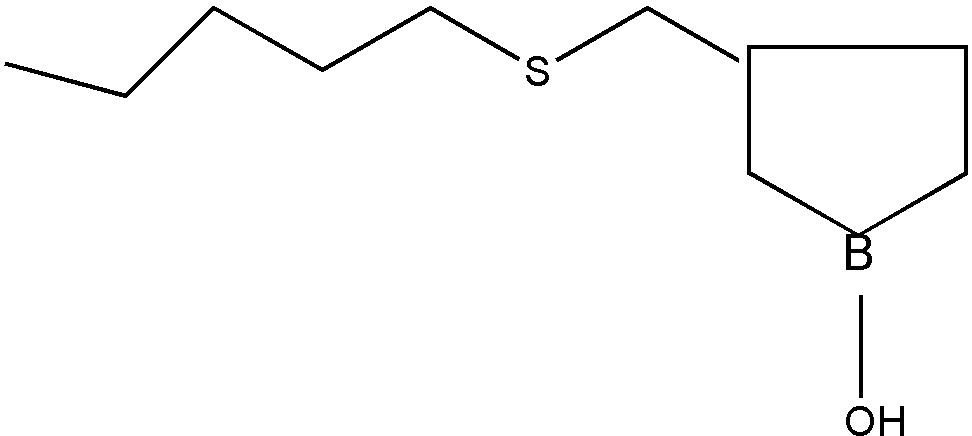
| |
| | |
![[List of Patents for class 508 subclass 198]](../ps.gif) 198 198 | Carbonyl containing: |
| | This subclass is indented under subclass 185. Compositions wherein the boron component also contains carbonyl,
-C(=O)-.
| | (1)
Note. An example of a component provided for herein is the
reaction product of calcium alkyl salicylate and orthoboric acid. | |
| | |
![[List of Patents for class 508 subclass 200]](../ps.gif) 200 200 | Benzene ring containing: |
| | This subclass is indented under subclass 185. Compositions wherein the boron component contains a benzene
ring.
| | (1)
Note. An example of a component provided for herein is
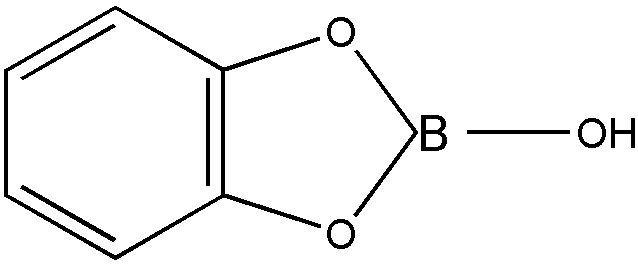
| |
| | |
![[List of Patents for class 508 subclass 201]](../ps.gif) 201 201 | Compound of indeterminate structure, prepared by reacting
a silicon compound of known structure: |
| | This subclass is indented under subclass 110. Compositions which contain a compound of indeterminate structure,
prepared by the reaction of a silicon compound of known structure.
| | (1)
Note. Examples of components provided for herein are the reaction
product of a poly (organo) silicone with an organic peroxide, and
the reaction product of silicon disulfide with heptaldehyde. |
SEE OR SEARCH THIS CLASS, SUBCLASS:
| 161, | for compositions containing silicon compounds which
are inorganic. |
|
| | |
![[List of Patents for class 508 subclass 202]](../ps.gif) 202 202 | Organic compound containing silicon (e.g., silicon esters): |
| | This subclass is indented under subclass 110. Compositions which contain silicon in an organic compound
component.
| | (1)
Note. An example of a component provided for herein is

|
| | (2)
Note. This subclass and its indents provide for organic compound
components containing silicon, regardless of the type bonding between
silicon and the remainder of the compound. |
SEE OR SEARCH THIS CLASS, SUBCLASS:
| 161, | for compositions containing silicon compounds that
are inorganic. |
|
| | |
![[List of Patents for class 508 subclass 203]](../ps.gif) 203 203 | The silicon is in a ring: |
| | This subclass is indented under subclass 202. Compositions wherein a ring has silicon as one of its members.
| | (1)
Note. Examples of components provided for herein are cyclosiloxanes
and

| |
| | |
![[List of Patents for class 508 subclass 209]](../ps.gif) 209 209 | With organic nitrogen compound: |
| | This subclass is indented under subclass 208. Compositions which contain, in addition to the silicon compound,
an organic nitrogen compound.
| | (1)
Note. An organic nitrogen compound is one wherein nitrogen
is attached directly or indirectly by nonionic bonding to carbon
of an organic compound. |
| | (2)
Note. See Notes to the Class Definition for the definition
of an organic compound. | |
| | |
![[List of Patents for class 508 subclass 210]](../ps.gif) 210 210 | The nitrogen is in a hetero ring: |
| | This subclass is indented under subclass 209. Compositions wherein the nitrogen is a ring member of a
hetero ring.
| | (1)
Note. A hetero ring is one whose ring members are carbon and
at least one hetero atom selected from nitrogen and chalcogen (i.e.,
oxygen, sulfur, selenium, or tellurium). In this subclass, the hetero ring
must contain ring nitrogen. | |
| | |
![[List of Patents for class 508 subclass 212]](../ps.gif) 212 212 | With organic -C(=O)O- compound (e.g., lithium
12-hydroxystearate, etc.): |
| | This subclass is indented under subclass 208. Compositions which contain, in addition to the silicon compound,
an organic -C(=O)O- compound.
| | (1)
Note. An organic -C(=O)O- compound is one wherein
the carbon of the -C(=O)O- is, or is attached directly
or indirectly by nonionic bonding to, the carbon of an organic compound. |
| | (2)
Note. See Notes to the Class Definition for the definition
of an organic compound. | |
| | |
![[List of Patents for class 508 subclass 215]](../ps.gif) 215 215 | With organic phosphorus, sulfur, or halogen compound: |
| | This subclass is indented under subclass 208. Compositions which contain, in addition to the silicon compound,
an organic phosphorus compound, an organic sulfur compound or an organic
halogen compound.
| | (1)
Note. An organic phosphorus compound is one wherein phosphorus
is attached directly or indirectly by nonionic bonding to carbon
of an organic compound. Organic sulfur compound and organic halogen
compound are similarly defined. |
| | (2)
Note. See Notes to the Class Definition for the definition
of an organic compound. | |
| | |
![[List of Patents for class 508 subclass 216]](../ps.gif) 216 216 | Protein, carbohydrate, lignin, plant matter of indeterminate
structure, or their reaction product of indeterminate structure: |
| | This subclass is indented under subclass 110. Compositions which contain (1) carbohydrate, (2) protein,
(3) lignin, (4) plant matter of indeterminate structure, or (5)
a product of indeterminate structure prepared by reacting any of (1),
(2), (3) or (4).
| | (1)
Note. Plant matter of indeterminate structure embraces both
crude, unprocessed plant material and substances of indeterminate
structure derived from processed or refined plant material. |
SEE OR SEARCH CLASS:
| 530, | Chemistry: Natural Resins or Derivatives,
subclass 350 definition and notes for the definition of a protein; subclass
500 for the definition of a lignin. |
| 536, | Organic Compound, class definition for the definition of a carbohydrate. |
|
| | |
![[List of Patents for class 508 subclass 217]](../ps.gif) 217 217 | Animal protein (e.g., fish scales, etc.): |
| | This subclass is indented under subclass 216. Compositions which contain animal protein.
| | (1)
Note. Included herein is animal protein in its raw and unprocessed
forms (as in body parts or segments thereof), as well as in the
form of partially or completely processed, refined, or isolated
chemicals. | |
| | |
![[List of Patents for class 508 subclass 220]](../ps.gif) 220 220 | With carboxylic acid or salt thereof: |
| | This subclass is indented under subclass 216. Compositions which contain, in addition to the protein,
carbohydrate, lignin, plant matter of indeterminate structure, or
their reaction product of indeterminate structure, either a carboxylic
acid or a salt of a carboxylic acid. |
| | |
![[List of Patents for class 508 subclass 222]](../ps.gif) 222 222 | The heterocyclic compound reactant contains a lactone or
cyclic carbonate ring: |
| | This subclass is indented under subclass 221. Compositions wherein a lactone or a cyclic carbonate ring
is present in the heterocyclic compound reactant.
| | (1)
Note. A lactone, for purposes of this subclass, is characterized
by a hetero ring consisting of carbons and the -C(=O)O- group,
e.g.,

|
| | (2)
Note. A cyclic carbonate, for purposes of this subclass, is
characterized by a hetero ring consisting of carbons and the -O-C(=O)O-
group, e.g.,
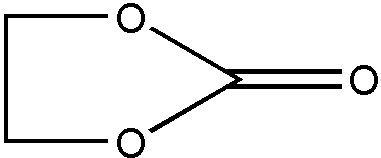
| |
| | |
![[List of Patents for class 508 subclass 232]](../ps.gif) 232 232 | The heterocyclic compound reactant contains a carboxylic
acid anhydride ring: |
| | This subclass is indented under subclass 221. Compositions wherein a carboxylic acid anhydride ring is
present in the heterocyclic compound reactant.
| | (1)
Note. A carboxylic acid anhydride ring, for purposes of this
subclass, is characterized by the presence of a -C(=O)-O-C(=O)-
group as part of the ring structure. |
| | (2)
Note. Maleic anhydride and succinic anhydride are the two
most common carboxylic acid anhydride reactants provided for herein. | |
| | |
![[List of Patents for class 508 subclass 237]](../ps.gif) 237 237 | With organic phosphorus compound: |
| | This subclass is indented under subclass 232. Compositions which contain, in addition to the compound
of indeterminate structure prepared by the reaction of the carboxylic
acid anhydride reactant, an organic phosphorus compound.
| | (1)
Note. An organic phosphorus compound is one wherein phosphorus
is attached directly or indirectly by nonionic bonding to carbon
of an organic compound. |
| | (2)
Note. See Notes to the Class Definition for the definition
of an organic compound. | |
| | |
![[List of Patents for class 508 subclass 245]](../ps.gif) 245 245 | Chalcogen in the hetero ring: |
| | This subclass is indented under subclass 244. Compositions wherein the hetero ring with carbon and nitrogen
ring members also has chalcogen (i.e., oxygen, sulfur, selenium,
or tellurium) as a ring member.
| | (1)
Note. Examples of components provided for herein are
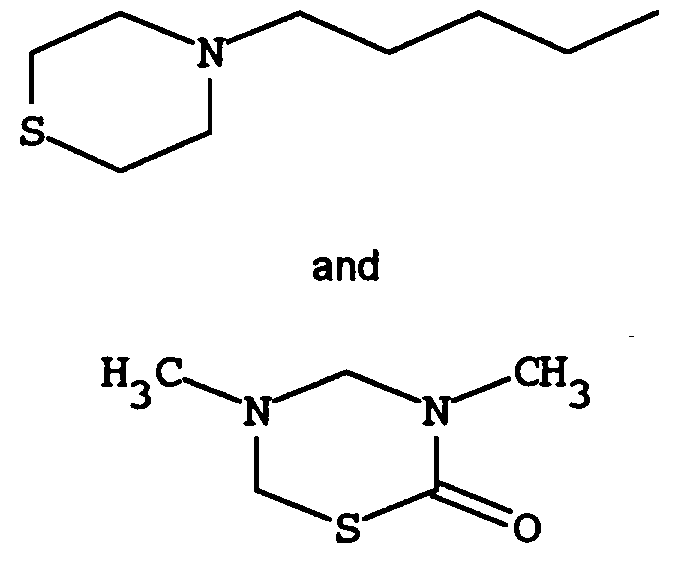
| |
| | |
![[List of Patents for class 508 subclass 252]](../ps.gif) 252 252 | With compound having saturated or unsaturated triazine,
azole, or pyridine ring: |
| | This subclass is indented under subclass 251. Compositions which contain, in addition to the polycyclo
ring system having the hetero ring as one of the cyclos, a compound
having a pyridine, triazine, or azole ring which may be saturated
or unsaturated.
| | (1)
Note. The pyridine ring is six-membered consisting of five
carbons and one nitrogen. The triazine ring is six-membered consisting
of three carbons and three nitrogens. The azole ring is five-membered
and has at least two ring hetero atoms, of which at least one must
be nitrogen. | |
| | |
![[List of Patents for class 508 subclass 253]](../ps.gif) 253 253 | With organic phosphorus compound: |
| | This subclass is indented under subclass 251. Compositions which contain, in addition to the polycyclo
ring system having the hetero ring as one of the cyclos, an organic
phosphorus compound.
| | (1)
Note. An organic phosphorus compound is one wherein phosphorus
is attached directly or indirectly by nonionic bonding to carbon
of an organic compound. |
| | (2)
Note. See Notes to the Class Definition for the definition
of an organic compound. | |
| | |
![[List of Patents for class 508 subclass 254]](../ps.gif) 254 254 | With organic non-heterocyclic nitrogen compound: |
| | This subclass is indented under subclass 251. Compositions which contain, in addition to the polycyclo
ring system having the hetero ring as one of the cyclos, an organic
nitrogen compound which does not contain a heterocyclic ring.
| | (1)
Note. An organic nitrogen compound is one wherein nitrogen
is attached directly or indirectly by nonionic bonding to carbon
of an organic compound. |
| | (2)
Note. See Notes to the Class Definition for the definition
of an organic compound. | |
| | |
![[List of Patents for class 508 subclass 255]](../ps.gif) 255 255 | Plural nitrogens in the hetero ring: |
| | This subclass is indented under subclass 244. Compositions wherein the six-membered hetero ring has plural
nitrogen ring members.
| | (1)
Note. An example of the type component provided for herein
is monocyclic pyrimidine (1,3-diazine) compounds. | |
| | |
![[List of Patents for class 508 subclass 256]](../ps.gif) 256 256 | Polycyclo ring system which contains the hetero ring as
one of the cyclos: |
| | This subclass is indented under subclass 255. Compositions wherein the hetero ring is one of the cyclos
of a polycyclo ring system.
| | (1)
Note. Fused and bridged ring systems are considered to be
polycyclo ring systems. Two rings joined solely by a spiro linkage
are not considered to form a polycyclo ring system. |
| | (2)
Note. An example of a component provided for herein is

| |
| | |
![[List of Patents for class 508 subclass 257]](../ps.gif) 257 257 | Triazines: |
| | This subclass is indented under subclass 255. Compositions wherein the hetero ring consists of three carbons
and three nitrogens.
| | (1)
Note. An example of a component provided for herein is

| |
| | |
![[List of Patents for class 508 subclass 259]](../ps.gif) 259 259 | 1,4-Diazines: |
| | This subclass is indented under subclass 255. Compositions wherein the hetero ring consists of four carbons
and two nitrogens, the nitrogens being in the 1- and 4-positions
of the ring.
| | (1)
Note. An example of a component provided for herein is:

| |
| | |
![[List of Patents for class 508 subclass 261]](../ps.gif) 261 261 | Polycyclo ring system which contains the hetero ring as
one of the cyclos: |
| | This subclass is indented under subclass 244. Compositions wherein the hetero ring is one of the cyclos
of a polycyclo ring system.
| | (1)
Note. Fused and bridged ring systems are considered to be
polycyclo ring systems. Two rings joined solely by a spiro linkage
are not considered to form a polycyclo ring system. |
| | (2)
Note. An example of a component provided for herein is

| |
| | |
![[List of Patents for class 508 subclass 262]](../ps.gif) 262 262 | Piperidines: |
| | This subclass is indented under subclass 244. Compositions wherein the hetero ring is a completely saturated
ring consisting of one nitrogen and five carbons.
| | (1)
Note. An example of a component provided for herein is

| |
| | |
![[List of Patents for class 508 subclass 265]](../ps.gif) 265 265 | Non-pyridine organic nitrogen salt of the polymer, or a
non-pyridine organic nitrogen compound is present: |
| | This subclass is indented under subclass 264. Compositions which (1) contain, in addition to the vinyl
pyridine polymer, a non-pyridine organic nitrogen compound, or (2)
contain the vinyl pyridine polymer in the form of its salt with
a non-pyridine organic nitrogen compound.
| | (1)
Note. Examples of components provided for herein are (a) the
N, N-dibutylcarbamic acid salt of lauryl methacrylate/2-methyl-5-vinyl
pyridine copolymer, and (b) the combination of a vinyl pyridine/alkyl
acrylate copolymer and an alkaline earth petroleum sulfonate-trialkylamine complex. |
| | (2)
Note. An organic nitrogen compound is one wherein nitrogen
is attached directly or indirectly by nonionic bonding to carbon
of an organic compound. |
| | (3)
Note. See Notes to the Class Definition for the definition
of organic compound. | |
| | |
![[List of Patents for class 508 subclass 279]](../ps.gif) 279 279 | Three or four nitrogens in the hetero ring (e.g., 1,2,4-triazole,
tetrazole, etc.): |
| | This subclass is indented under subclass 269. Compositions wherein the hetero ring has three nitrogen
ring members or four nitrogen ring members.
| | (1)
Note. The components provided for herein are monocyclic tetrazoles,
monocyclic 1,2,3-triazoles, and monocyclic 1,2,4-triazoles. | |
| | |
![[List of Patents for class 508 subclass 282]](../ps.gif) 282 282 | With organic phosphorus compound: |
| | This subclass is indented under subclass 280. Compositions which contain, in addition to the hetero ring
containing component, an organic phosphorus compound.
| | (1)
Note. An organic phosphorus compound is one wherein phosphorus
is attached directly or indirectly by nonionic bonding to carbon
of an organic compound. |
| | (2)
Note. See Notes to the Class Definition for the definition
of an organic compound. | |
| | |
![[List of Patents for class 508 subclass 294]](../ps.gif) 294 294 | With organic phosphorus compound: |
| | This subclass is indented under subclass 293. Compositions which contain, in addition to the hetero ring
containing component, an organic phosphorus compound.
| | (1)
Note. An organic phosphorus compound is one wherein phosphorus
is attached directly or indirectly by nonionic bonding to carbon
of an organic compound. |
| | (2)
Note. See Notes to the Class Definition for the definition
of an organic compound. | |
| | |
![[List of Patents for class 508 subclass 295]](../ps.gif) 295 295 | With organic chalcogen or halogen compound: |
| | This subclass is indented under subclass 293. Compositions which contain, in addition to the hetero ring
containing component, an organic halogen compound or an organic
chalcogen (i.e., oxygen, sulfur, selenium, or tellurium) compound.
| | (1)
Note. An organic halogen compound is one wherein halogen is
attached directly or indirectly by nonionic bonding to carbon of
an organic compound. Organic chalcogen compound is similarly defined. |
| | (2)
Note. See Notes to the Class Definition for the definition
of organic compound. | |
| | |
![[List of Patents for class 508 subclass 297]](../ps.gif) 297 297 | Having a -C(=X)X- group, wherein the X"s are
the same or diverse chalcogens, attached directly or indirectly
to the hetero ring by acyclic nonionic bonding (e.g., vinylpyrrolidone-acrylate
copolymers, etc.): |
| | This subclass is indented under subclass 268. Compositions wherein the hetero ring is attached directly
or indirectly by acyclic nonionic bonding to a -C(=X)X-
group, wherein the X"s are the same or diverse chalcogens
(i.e., oxygen, sulfur, selenium, or tellurium).
| | (1)
Note. Examples of components provided for herein are: a copolymer
of N-vinyl pyrrolidone and lauryl methacrylate, and
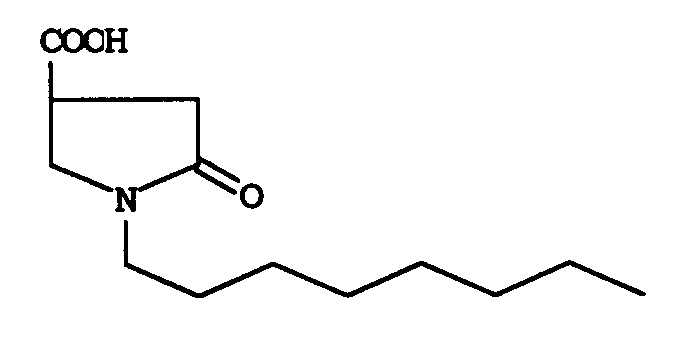
| |
| | |
![[List of Patents for class 508 subclass 298]](../ps.gif) 298 298 | With metal compound, or organic phosphorus or sulfur compound: |
| | This subclass is indented under subclass 297. Compositions which contain, in addition to the hetero ring
containing component, an organic sulfur compound, an organic phosphorus
compound, or an organic compound that contains metal.
| | (1)
Note. An organic sulfur compound is one wherein sulfur is
attached directly or indirectly by nonionic bonding to carbon of
an organic compound. Organic phosphorus compound is similarly defined. |
| | (2)
Note. See Notes to the Class Definition for the definition
of an organic compound. | |
| | |
![[List of Patents for class 508 subclass 300]](../ps.gif) 300 300 | Plural hetero atoms in the hetero ring (e.g., 1,3-dithiane,
etc.): |
| | This subclass is indented under subclass 299. Compositions wherein the hetero ring has more than one ring
hetero atom.
| | (1)
Note. Examples of components provided for herein are
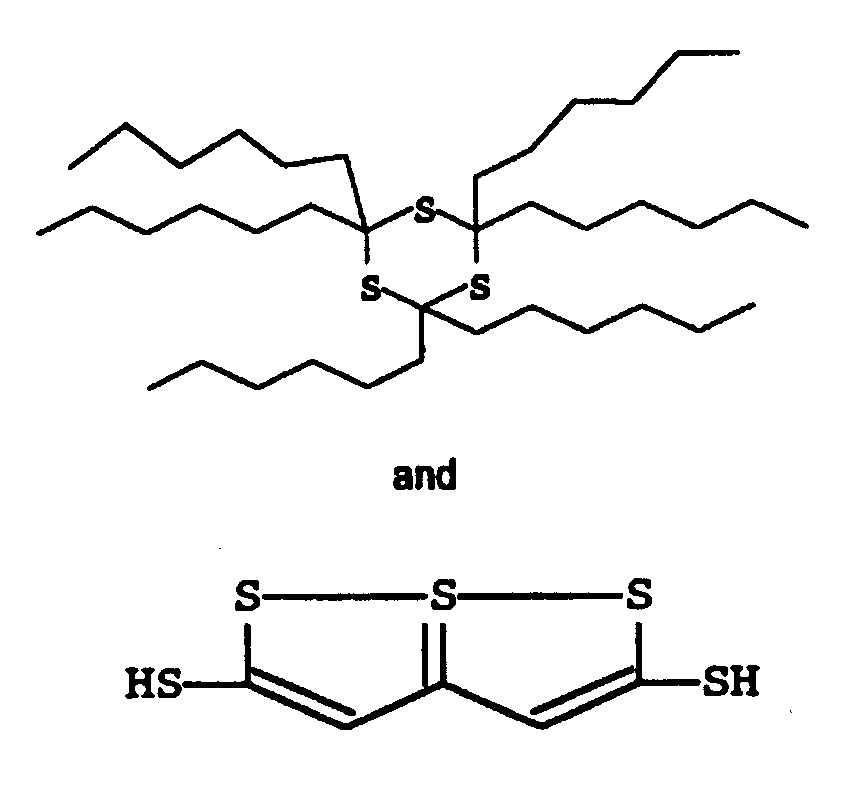
|
| | (2)
Note. This subclass also provides for components having a
hetero ring with more than six members, ring sulfur and ring nitrogen,
e.g., thiadiazepines, etc. | |
| | |
![[List of Patents for class 508 subclass 310]](../ps.gif) 310 310 | With organic nitrogen compound: |
| | This subclass is indented under subclass 308. Compositions which contain, in addition to the hetero ring
containing component, an organic nitrogen compound.
| | (1)
Note. An organic nitrogen compound is one wherein nitrogen
is attached directly or indirectly by nonionic bonding to carbon
of an organic compound. |
| | (2)
Note. See Notes to the Class Definition for the definition
of an organic compound. | |
| | |
![[List of Patents for class 508 subclass 312]](../ps.gif) 312 312 | Organic oxidate of indeterminate composition: |
| | This subclass is indented under subclass 110. Compositions which contain a compound of indeterminate structure
prepared by oxidation of an organic compound or of a mixture of organic
compounds.
| | (1)
Note. The oxidates of this subclass and its indents are generally
complex mixtures. An indication that the oxidate contains carboxylic
acids is not sufficient to remove it from this subclass or its indents. |
| | (2)
Note. See Notes to the Class Definition for the definition
of organic compound. | |
| | |
![[List of Patents for class 508 subclass 313]](../ps.gif) 313 313 | Substance oxidized contains nitrogen, chalcogen, halogen
or phosphorus (e.g., oxidized sulfonate, phenol, ozonide, soap,
etc.): |
| | This subclass is indented under subclass 312. Compositions wherein nitrogen, halogen, phosphorus, or chalcogen
(i.e., oxygen, sulfur, selenium, or tellurium) is present in the
substance oxidized. |
| | |
![[List of Patents for class 508 subclass 315]](../ps.gif) 315 315 | Carboxylic acid ester subsequently formed from alcohol
or acid of the organic oxidate: |
| | This subclass is indented under subclass 312. Compositions which contain a carboxylic acid ester subsequently
formed from an alcohol or acid that is part of the organic oxidate
of indeterminate composition.
| | (1)
Note. This subclass does not provide for carboxylic acid esters
of known structure, per se; such are classified as components in
subclass 459 and its indents. |
| | (2)
Note. This subclass provides for components wherein an organic
oxidate of indeterminate composition is made to undergo esterification
(of either alcohol or carboxylic acid) to yield (1) a mixture, still
of indeterminate composition, containing a carboxylic acid ester,
or (2) a carboxylic acid ester of indeterminate composition. | |
| | |
![[List of Patents for class 508 subclass 319]](../ps.gif) 319 319 | With organic sulfur, phosphorus, or halogen compound: |
| | This subclass is indented under subclass 312. Compositions which contain, in addition to the organic oxidate
of indeterminate structure, an organic sulfur compound, an organic
phosphorus compound, or an organic halogen compound.
| | (1)
Note. An organic sulfur compound is one wherein sulfur is
attached directly or indirectly by nonionic bonding to carbon of
an organic compound. Organic phosphorus compound and organic halogen compound
are similarly defined. |
| | (2)
Note. See Notes to the Class Definition for the definition
of an organic compound. | |
| | |
![[List of Patents for class 508 subclass 327]](../ps.gif) 327 327 | With organic halogen compound: |
| | This subclass is indented under subclass 326. Compositions which contain, in addition to the organic -C(=O)O-
compound which is sulfurized and reacted with phoaphorus, an inorganic phosphorus
compound, or an organic halogen compound.
| | (1)
Note. An organic halogen compound is one wherein halogen is
attached directly or indirectly by nonionic bonding to carbon of
an organic compound. |
| | (2)
Note. See Notes to the Class Definition for the definition
of an organic compound. | |
| | |
![[List of Patents for class 508 subclass 334]](../ps.gif) 334 334 | With an organic nitrogen compound, which may or may not
be reacted with the sulfurized compound: |
| | This subclass is indented under subclass 322. Compositions (1) which contain, in addition to the sulfurized
organic compound, an organic nitrogen compound or (2) wherein the
sulfurized organic compound is reacted with an organic nitrogen
compound.
| | (1)
Note. An organic nitrogen compound is one wherein nitrogen
is attached directly or indirectly by nonionic bonding to carbon
of an organic compound. |
| | (2)
Note. See Notes to the Class Definition for the definition
of an organic compound. | |
| | |
![[List of Patents for class 508 subclass 335]](../ps.gif) 335 335 | The nitrogen is attached directly or indirectly to -C(=X)-,
wherein X is chalcogen, by nonionic bonding (e.g., phosphatides, amides,
zinc diamyl dithiocarbamate, etc.): |
| | This subclass is indented under subclass 334. Compositions wherein-C(=X)-, wherein X is chalcogen
(i.e., oxygen, sulfur, selenium, or tellurium), is attached directly
or indirectly to the nitrogen by nonionic bonding. |
| | |
![[List of Patents for class 508 subclass 337]](../ps.gif) 337 337 | With an organic phosphorus compound, which may or may not
be reacted with the sulfurized compound: |
| | This subclass is indented under subclass 322. Compositions (1) which contain, in addition to the sulfurized
organic compound, an organic phosphorus compound, or (2) wherein
the sulfurized organic compound is reacted with an organic phosphorus
compound.
| | (1)
Note. An organic phosphorus compound is one wherein phosphorus
is attached directly or indirectly by nonionic bonding to carbon
of an organic compound. |
| | (2)
Note. See Notes to the Class Definition for the definition
of an organic compound. | |
| | |
![[List of Patents for class 508 subclass 339]](../ps.gif) 339 339 | With an organic -C(=O)O- compound, which may or
may not be reacted with the sulfurized compound: |
| | This subclass is indented under subclass 322. Compositions (1) which contain, in addition to the sulfurized
organic compound, an organic -C(=O)O- compound, or (2)
wherein the sulfurized organic compound is reacted with an organic-C(=O)O-
compound.
| | (1)
Note. An organic -C(=O)O- compound is one in which
the carbon of the -C(=O)O- group is, or is attached directly or
indirectly by nonionic bonding to, the carbon of an organic compound. |
| | (2)
Note. See Notes to the Class Definition for the definition
of an organic compound. | |
| | |
![[List of Patents for class 508 subclass 341]](../ps.gif) 341 341 | With organic halogen compound: |
| | This subclass is indented under subclass 322. Compositions (1) which contain, in addition to the sulfurized
organic compound, an organic halogen compound, or (2) wherein the
sulfurized organic compound is reacted with an organic halogen compound.
| | (1)
Note. An organic halogen compound is one wherein halogen is
attached directly or indirectly by nonionic bonding to carbon of
an organic compound. |
| | (2)
Note. See Notes to the Class Definition for the definition
of an organic compound. | |
| | |
![[List of Patents for class 508 subclass 342]](../ps.gif) 342 342 | With an organic oxygen compound, which may or may not be
reacted with the sulfurized compound: |
| | This subclass is indented under subclass 322. Compositions which (1) contain, in addition to the sulfurized
organic compound, an organic oxygen compound, or (2) wherein the
sulfurized organic compound is reacted with an organic oxygen compound.
| | (1)
Note. An organic oxygen compound is one in which oxygen is
attached directly or indirectly by nonionic bonding to carbon of
an organic compound. |
| | (2)
Note. See Notes to the Class Definition for the definition
of an organic compound. | |
| | |
![[List of Patents for class 508 subclass 345]](../ps.gif) 345 345 | The carboxylic acid ester is a naturally occurring triglyceride
or a naturally occurring wax ester (e.g., sulfurized lard oil, degras,
etc.): |
| | This subclass is indented under subclass 344. Compositions wherein the carboxylic acid ester is a naturally
occurring wax ester or a naturally occurring triglyceride.
| | (1)
Note. Examples of naturally occurring ester waxes are lanolin,
beeswax, degras, carnauba wax, etc. |
| | (2)
Note. Examples of naturally occurring triglycerides are corn
oil, lard, soybean oil, palm oil, etc. | |
| | |
![[List of Patents for class 508 subclass 349]](../ps.gif) 349 349 | The organic compound is a phosphorus ester or an organic
-S(=O)(=O)O- compound (e.g., phosphosulfurized
petroleum mahogany sulfonates, etc.): |
| | This subclass is indented under subclass 346. Compositions wherein the organic compound that is phosphosulfurized
or phosphooxidized is a phosphorus ester or an organic -S(=O)(=O)O-
compound.
| | (1)
Note. A phosphorus ester is characterized by divalent chalcogen
bonded to both phosphorus and carbon, wherein the carbon may be
single bonded to any atom but may be multiple bonded only to additional
carbon. |
| | (2)
Note. An organic -S(=O)(=O)O- compound is
one wherein the-S(=O)(=O)O- group is attached
directly or indirectly by nonionic bonding to carbon of an organic
compound. |
| | (3)
Note. See Notes to the Class Definition for the definition
of an organic compound. | |
| | |
![[List of Patents for class 508 subclass 350]](../ps.gif) 350 350 | Phosphosulfurized or phosphooxidized mixture of hydrocarbon
and organic oxygen compound: |
| | This subclass is indented under subclass 346. Compositions wherein the organic compound is a component
of a mixture of hydrocarbon and an organic oxygen compound, which
mixture is phosphosulfurized or phosphooxidized, resulting in a
mixture of phosphosulfurized or phosphooxidized hydrocarbon and
phosphosulfurized or phosphooxidized organic oxygen compound.
| | (1)
Note. An organic oxygen compound is one wherein oxygen is
attached directly or indirectly by nonionic bonding to carbon of
an organic compound. |
| | (2)
Note. See Notes to the Class Definition of the definition
of an organic compound. | |
| | |
![[List of Patents for class 508 subclass 352]](../ps.gif) 352 352 | The organic compound is a naturally occurring triglyceride
or a naturally occurring wax ester (e.g., phosphosulfurized degras, etc.): |
| | This subclass is indented under subclass 351. Compositions wherein the organic compound that is phosphosulfurized
or phosphooxidized is a naturally occurring wax ester or naturally occurring
triglyceride.
| | (1)
Note. Examples of naturally occurring wax esters are lanolin,
beeswax, spermaceti, carnauba wax, etc. |
| | (2)
Note. Examples of naturally occurring triglycerides are corn
oil, lard, soybean oil, palm oil, etc. | |
| | |
![[List of Patents for class 508 subclass 353]](../ps.gif) 353 353 | The organic compound contains -XH, wherein X is chalcogen,
bonded directly to carbon and H of -XH may be replaced by metal
(e.g., phosphosulfurized alkyl phenol sulfides, etc.): |
| | This subclass is indented under subclass 346. Compositions wherein the organic compound that is phosphosulfurized
or phosphooxidized contains carbon bonded directly to -XH, wherein
H of -XH may be replaced by metal and X is chalcogen (i.e., oxygen,
sulfur, selenium, or tellurium).
| | (1)
Note. Examples of components provided for herein are phosphosulfurized
or phosphooxidized phenols, thiophenols, alcohols, and their salts,
etc. | |
| | |
![[List of Patents for class 508 subclass 356]](../ps.gif) 356 356 | The nitrogen is attached directly or indirectly to -C(=X)-,
wherein X is chalcogen, by nonionic bonding (e.g., amides, aminocarboxylic
acids, etc.): |
| | This subclass is indented under subclass 355. Compositions wherein-C(=X)-, wherein X is chalcogen
(i.e., oxygen, sulfur, selenium or tellurium), is attached directly
or indirectly to the nitrogen of the organic nitrogen compound by nonionic
bonding. |
| | |
![[List of Patents for class 508 subclass 359]](../ps.gif) 359 359 | With an organic -C(=X)X- compound, wherein the
X"s may be same or diverse chalcogens, which compound may
or may not be reacted with the phosphosulfurized or phosphooxidized
hydrocarbon: |
| | This subclass is indented under subclass 354. Compositions (1) which contain, in addition to the phosphosulfurized
or phosphooxidized hydrocarbon, an organic-C(=X)X- compound, wherein
the X"s may be the same or diverse chalcogens (i.e., oxygen,
sulfur, selenium, or tellurium) or (2) wherein the phosphosulfurized
or phosphooxidized hydrocarbon is reacted with such an organic -C(=X)X-
compound.
| | (1)
Note. An organic -C(=X)X- compound is one wherein
the carbon of the -C(=X)X- group is, or is attached directly or
indirectly by nonionic bonding to, the carbon of an organic compound. |
| | (2)
Note. See Notes to the Class Definition for the definition
of an organic compound. | |
| | |
![[List of Patents for class 508 subclass 360]](../ps.gif) 360 360 | With an organic chalcogen compound, which may or may not
be reacted with the phosphosulfurized or phosphooxidized hydrocarbon
(e.g., phenols, alcohols, quinones, etc.): |
| | This subclass is indented under subclass 354. Compositions (1) which contain, in addition to the phosphosulfurized
or phosphooxidized hydrocarbon, an organic chalcogen (i.e., oxygen,
sulfur, selenium, or tellurium) compound or (2) wherein the phosphosulfurized
or phosphooxidized hydrocarbon is reacted with an organic chalcogen
compound.
| | (1)
Note. An organic chalcogen compound is one in which chalcogen
is attached directly or indirectly by nonionic bonding to carbon
of an organic compound. |
| | (2)
Note. See Notes to the Class Definition for the definition
of an organic compound. | |
| | |
![[List of Patents for class 508 subclass 362]](../ps.gif) 362 362 | Nitrogen and heavy metal, or nitrogen and aluminum, in
the same compound: |
| | This subclass is indented under subclass 110. Compositions which contain a compound containing heavy metal
and nitrogen, or a compound containing aluminum and nitrogen.
| | (1)
Note. Arsenic is considered a heavy metal. |
| | (2)
Note. Heavy metals are considered to be those having a specific
gravity greater than 4.0. |
| | (3)
Note. Examples of components provided for herein are trioctylmethylammonium thiomolybdate
and C6H5NHAsCl2
. | |
| | |
![[List of Patents for class 508 subclass 364]](../ps.gif) 364 364 | With organic nitrogen, phosphorus, or chalcogen compound: |
| | This subclass is indented under subclass 363. Compositions which contain, in addition to the nitrogen-heavy
metal or nitrogen-aluminum compound, an organic phosphorus compound, an
organic nitrogen compound, or an organic chalcogen (i.e., oxygen,
sulfur, selenium, or tellurium) compound.
| | (1)
Note. An organic phosphorus compound is one wherein phosphorus
is attached directly or indirectly by nonionic bonding to carbon
of an organic compound. Organic nitrogen compound and organic chalcogen
compound are similarly defined. |
| | (2)
Note. See Notes to the Class Definition for the definition
of an organic compound. | |
| | |
![[List of Patents for class 508 subclass 365]](../ps.gif) 365 365 | With metal compound: |
| | This subclass is indented under subclass 364. Compositions which contain, further, an organic compound
that contains metal.
| | (1)
Note. See Notes to the Class Definition for the definition
of an organic compound. | |
| | |
![[List of Patents for class 508 subclass 367]](../ps.gif) 367 367 | Containing -C(=X)-, wherein X is chalcogen: |
| | This subclass is indented under subclass 362. Compositions wherein the compound that contains nitrogen
and heavy metal or nitrogen and aluminum also contains -C(=X)-,
wherein X is chalcogen (i.e, oxygen, sulfur, selenium, or tellurium).
| | (1)
Note. An example of a component provided for herein is [(C8H17)2N-CH2CH2COO]2Pb | |
| | |
![[List of Patents for class 508 subclass 368]](../ps.gif) 368 368 | Heavy metal or aluminum in an organic phosphorus compound
having four chalcogens bonded directly to the phosphorus: |
| | This subclass is indented under subclass 110. Compositions which contain an organic phosphorus compound
which (1) contains heavy metal or aluminum and (2) has four chalcogens (i.e.,
oxygen, sulfur, selenium, or tellurium) bonded directly to the phosphorus.
| | (1)
Note. An organic phosphorus compound is one wherein phosphorus
is attached directly or indirectly by nonionic bonding to carbon
of an organic compound. |
| | (2)
Note. See Notes to the Class Definition for the definition
of an organic compound. |
| | (3)
Note. An example of a component provided for herein is (CH3O)2-P(S)S-Ti(OCH3)3 | |
| | |
![[List of Patents for class 508 subclass 371]](../ps.gif) 371 371 | The heavy metal is zinc: |
| | This subclass is indented under subclass 368. Compositions wherein zinc is the heavy metal.
| | (1)
Note. An example of a component provided for herein is zinc
dihexyl dithiophosphate. | |
| | |
![[List of Patents for class 508 subclass 372]](../ps.gif) 372 372 | With organic sulfonate compound: |
| | This subclass is indented under subclass 371. Compositions which contain, in addition to the zincorganic
phosphorus compound, an organic sulfonate compound.
| | (1)
Note. An organic sulfonate compound is one wherein an -S(=O)(O)O-
group is attached directly or indirectly by nonionic bonding to
carbon of an organic compound. |
| | (2)
Note. See Notes to the Class Definition for the definition
of an organic compound. | |
| | |
![[List of Patents for class 508 subclass 373]](../ps.gif) 373 373 | With organic nitrogen compound: |
| | This subclass is indented under subclass 372. Compositions which contain, in addition to the zincorganic
phosphorus compound and the organic sulfonate compound, an organic
nitrogen compound.
| | (1)
Note. An organic nitrogen compound is one wherein nitrogen
is attached directly or indirectly by nonionic bonding to carbon
of an organic compound. |
| | (2)
Note. See Notes to the Class Definition for the definition
of an organic compound. | |
| | |
![[List of Patents for class 508 subclass 374]](../ps.gif) 374 374 | With organic -C(=X)X- compound, wherein the X"s
may be the same or diverse chalcogens: |
| | This subclass is indented under subclass 372. Compositions which contain, in addition to the zincorganic
phosphorus compound and the organic sulfonate compound, an organic
-C(=X)X- compound, wherein the X"s may be the
same or diverse chalcogens (i.e., oxygen, sulfur, selenium, or tellurium).
| | (1)
Note. An organic -C(=X)X- compound is one wherein
the carbon of the -C(=X)X- group is, or is attached directly or
indirectly by nonionic bonding to, the carbon of an organic compound. |
| | (2)
Note. See Notes to the Class Definition for the definition
of an organic compound. | |
| | |
![[List of Patents for class 508 subclass 375]](../ps.gif) 375 375 | With organic nitrogen compound: |
| | This subclass is indented under subclass 371. Compositions which contain, in addition to the zincorganic
phosphorus compound, an organic nitrogen compound.
| | (1)
Note. An organic nitrogen compound is one wherein nitrogen
is attached directly or indirectly by nonionic bonding to carbon
of an organic compound. |
| | (2)
Note. See Notes to the Class Definition for the definition
of an organic compound. | |
| | |
![[List of Patents for class 508 subclass 378]](../ps.gif) 378 378 | With organic chalcogen compound that does not contain phosphorus: |
| | This subclass is indented under subclass 371. Compositions which contain, in addition to the zincorganic
phosphorus compound, an organic chalcogen (i.e., oxygen, sulfur,
selenium, or tellurium) compound that does not contain phosphorus.
| | (1)
Note. An organic chalcogen compound is one wherein chalcogen
is attached directly or indirectly by nonionic bonding to carbon
of an organic compound. |
| | (2)
Note. See Notes to the Class Definition for the definition
of an organic compound. | |
| | |
![[List of Patents for class 508 subclass 380]](../ps.gif) 380 380 | With organic chalcogen compound that does not contain phosphorus: |
| | This subclass is indented under subclass 368. Compositions which contain, in addition to the organic phosphorus
compound, an organic chalcogen (i.e., oxygen, sulfur, selenium,
or tellurium) compound that does not contain phosphorus.
| | (1)
Note. An organic chalcogen compound is one wherein chalcogen
is attached directly or indirectly by nonionic bonding to carbon
of an organic compound. |
| | (2)
Note. See Notes to the Class Definition for the definition
of an organic compound. | |
| | |
![[List of Patents for class 508 subclass 382]](../ps.gif) 382 382 | Heavy metal or aluminum bonded directly to carbon: |
| | This subclass is indented under subclass 110. Compositions wherein carbon is bonded directly to heavy
metal or to aluminum.
| | (1)
Note. Arsenic is considered a heavy metal. |
| | (2)
Note. Heavy metals are those whose specific gravity is greater
than 4.0. |
| | (3)
Note. An example of a component provided for herein is (CH3)3Sn-Sn(C6H5)3 | |
| | |
![[List of Patents for class 508 subclass 385]](../ps.gif) 385 385 | Heavy metal or aluminum naphthenate, in combination with
an organic nitrogen, sulfur, or phosphorus compound: |
| | This subclass is indented under subclass 110. Compositions which contain an organic nitrogen compound,
an organic sulfur compound, or an organic phosphorus compound, in
combination with a heavy metal or aluminum salt of naphthenic acid.
| | (1)
Note. Arsenic is considered a heavy metal. |
| | (2)
Note. Heavy metals are those whose specific gravity is greater
than 4.0. |
| | (3)
Note. An organic nitrogen compound is one wherein nitrogen
is attached directly or indirectly by nonionic bonding to carbon
of an organic compound. Organic sulfur compound and organic phosphorus
compound are similarly defined. |
| | (4)
Note. See Notes to the Class Definition for the definition
of an organic compound. | |
| | |
![[List of Patents for class 508 subclass 386]](../ps.gif) 386 386 | Organic -XCN or -N=C=X compound, wherein
X is chalcogen: |
| | This subclass is indented under subclass 110. Compositions wherein-XCN or -N=C=X, wherein
X in each instance is chalcogen (i.e., oxygen, sulfur, selenium,
or tellurium), is attached directly or indirectly by nonionic bonding
to carbon of an organic compound.
| | (1)
Note. See Notes to the Class Definition for the definition
of an organic compound. |
| | (2)
Note. Examples of components provided for herein are C6H5-N=C=S
and C6H5CH2SCN
. | |
| | |
![[List of Patents for class 508 subclass 387]](../ps.gif) 387 387 | Compound of indeterminate structure, prepared by reacting
an organic sulfonate compound of known structure: |
| | This subclass is indented under subclass 110. Compositions which contain a compound of indeterminate structure,
prepared by the reaction of a compound of known structure having carbon
of an organic compound attached directly or indirectly by nonionic
bonding to a sulfonate, -S(=O)(=O)O-, group.
| | (1)
Note. Components of indeterminate structure prepared by the
reaction of organic sulfate compounds of known structure are provided
for herein, because the sulfate group, -O-S(=O)(=O)O-,
contains-S(=O)(=O)O-. |
| | (2)
Note. See Notes to the Class Definition for the definition
of an organic compound. | |
| | |
![[List of Patents for class 508 subclass 391]](../ps.gif) 391 391 | Overbased or carbonated sulfonates: |
| | This subclass is indented under subclass 390. Compositions wherein the organic -S(=O)(=O)O-
compound is an overbased or carbonated sulfonic acid.
| | (1)
Note. An overbased compound herein is one in which an amount
of metal (e.g., Mg, Ca, Ba, Sr) is present which is greater than
the stoichiometric amount of metal which would be present if the sulfonic
acid were completely neutralized. |
| | (2)
Note. A carbonated compound herein is the complex resulting
from the reaction of carbon dioxide with metal sulfonates. | |
| | |
![[List of Patents for class 508 subclass 401]](../ps.gif) 401 401 | Prepared by addition of carbon dioxide, carbonic acid,
or salt thereof: |
| | This subclass is indented under subclass 391. Compositions wherein the overbased or carbonated sulfonate
is prepared by addition of carbon dioxide, carbonic acid, or a salt
thereof to a reaction mixture containing a sulfonic acid or salt
thereof, or by simultaneous addition of (1) carbon dioxide, carbonic
acid, or a salt thereof and (2) sulfonic acid or salt thereof to
a reaction mixture.
| | (1)
Note. The reaction mixture may not contain alkylphenol, substituted
alkylphenol, or a salt thereof. Such processes are provided for
in subclass 392, supra. | |
| | |
![[List of Patents for class 508 subclass 402]](../ps.gif) 402 402 | Multiple additions thereof: |
| | This subclass is indented under subclass 401. Compositions wherein the overbased or carbonated sulfonate
is prepared by a process utilizing multiple, separate additions
of carbon dioxide, carbonic acid, or a salt thereof. |
| | |
![[List of Patents for class 508 subclass 407]](../ps.gif) 407 407 | With rosin, tall oil, or derivatives thereof of indeterminate
structure: |
| | This subclass is indented under subclass 390. Compositions which contain, in addition to the sulfonate
group containing compound, rosin, tall oil, or derivatives of indeterminate
structure thereof.
| | (1)
Note. If an additional component is identified as fatty acid(s)
or abietic acid(s) of known structure derived from rosin or tall
oil, such acids are classified on the basis of their structure.
If the acids are identified solely by reference to their source,
they are classified here. | |
| | |
![[List of Patents for class 508 subclass 408]](../ps.gif) 408 408 | With organic phosphorus compound (e.g., phosphate esters,
etc.): |
| | This subclass is indented under subclass 390. Compositions which contain, in addition to the sulfonate
group containing compound, an organic phosphorus compound.
| | (1)
Note. An organic phosphorus compound is one wherein phosphorus
is attached directly or indirectly by nonionic bonding to carbon
of an organic compound. |
| | (2)
Note. See Notes to the Class Definition for the definition
of an organic compound. | |
| | |
![[List of Patents for class 508 subclass 410]](../ps.gif) 410 410 | Organic nitrogen compound salt of a sulfonic acid, or an
organic nitrogen compound is present: |
| | This subclass is indented under subclass 390. Compositions which (1) contain, in addition to the sulfonate
group containing compound, an organic nitrogen compound or (2) which
contain an organic nitrogen compound salt of a sulfonic acid.
| | (1)
Note. An organic nitrogen compound is one wherein nitrogen
is attached directly or indirectly by nonionic bonding to carbon
of an organic compound. |
| | (2)
Note. See Notes to the Class Definition for the definition
of an organic compound. | |
| | |
![[List of Patents for class 508 subclass 413]](../ps.gif) 413 413 | With organic -C(=O)O- compound: |
| | This subclass is indented under subclass 390. Compositions which contain, in addition to the sulfonate
containing compound, an organic -C(=O)O- compound.
| | (1)
Note. An organic -C(=O)O- compound is one wherein
the carbon of the -C(=O)O- group is, or is attached directly or
indirectly by nonionic bonding to, carbon of an organic compound. |
| | (2)
Note. See Notes to the Class Definition for the definition
of an organic compound. | |
| | |
![[List of Patents for class 508 subclass 416]](../ps.gif) 416 416 | With organic halogen or non-sulfonate chalcogen compound
(e.g., haloparaffins, ethers, ketones, polyols, etc.): |
| | This subclass is indented under subclass 390. Compositions which contain, in addition to the sulfonate
containing compound, an organic halogen compound or an organic chalcogen (i.e.,
oxygen, sulfur, selenium, or tellurium) compound that does not contain
a sulfonate group.
| | (1)
Note. An organic halogen compound is one wherein halogen is
attached directly or indirectly by nonionic bonding to carbon of
an organic compound. Organic chalcogen compound is similarly defined. |
| | (2)
Note. See Notes to the Class Definition for the definition
of an organic compound. | |
| | |
![[List of Patents for class 508 subclass 418]](../ps.gif) 418 418 | Aluminum or heavy metal sulfonate salt: |
| | This subclass is indented under subclass 390. Compositions which contain a heavy metal or an aluminum
salt of a sulfonic acid.
| | (1)
Note. Arsenic is considered a heavy metal. |
| | (2)
Note. Heavy metals are those whose specific gravity is greater
than 4.0. | |
| | |
![[List of Patents for class 508 subclass 436]](../ps.gif) 436 436 | Organic nitrogen compound salt of phosphorus acid, or organic
nitrogen compound is present with phosphorus acid: |
| | This subclass is indented under subclass 433. Compositions which (1) contain, in addition to the organic
phosphorus compound present as a phosphorus acid, an organic nitrogen
compound or (2) wherein the organic phosphorus compound is in the
form of an organic nitrogen compound salt of an organic phosphorus
acid.
| | (1)
Note. An organic nitrogen compound is one wherein nitrogen
is attached directly or indirectly by nonionic bonding to carbon
of an organic compound. |
| | (2)
Note. See Notes to the Class Definition for the definition
of an organic compound. | |
| | |
![[List of Patents for class 508 subclass 437]](../ps.gif) 437 437 | With organic -C(=O)O- compound: |
| | This subclass is indented under subclass 436. Compositions which contain, in addition to the component
of subclass 436, an organic -C(=O)O- compound.
| | (1)
Note. An organic -C(=O)O- compound is one wherein
the carbon of the -C(O)O- group is, or is attached directly or indirectly
by nonionic bonding to, the carbon of an organic compound. |
| | (1)
Note. See Notes to the Class Definition for the definition
of an organic compound. | |
| | |
![[List of Patents for class 508 subclass 438]](../ps.gif) 438 438 | With organic nitrogen, sulfur, or halogen compound: |
| | This subclass is indented under subclass 433. Compositions which contain, in addition to the organic phosphorus
compound, an organic nitrogen compound, an organic sulfur compound,
or an organic halogen compound.
| | (1)
Note. An organic nitrogen compound is one wherein nitrogen
is attached directly or indirectly by nonionic bonding to carbon
of an organic compound. Organic sulfur compound and organic halogen compound
are similarly defined. |
| | (2)
Note. See Notes to the Class Definition for the definition
of an organic compound. | |
| | |
![[List of Patents for class 508 subclass 439]](../ps.gif) 439 439 | With organic -C(=O)O- compound: |
| | This subclass is indented under subclass 438. Compositions which contain, in addition to the organic phosphorus
compound and the organic nitrogen compound, organic sulfur compound or
organic halogen compound, an organic -C(=O)O- compound.
| | (1)
Note. An organic -C(=O)O- compound is one wherein
the carbon of the -C(=O)O- group is, or is attached directly or
indirectly by nonionic bonding to, the carbon of an organic compound. |
| | (2)
Note. See Notes to the Class Definition for the definition
of an organic compound. | |
| | |
![[List of Patents for class 508 subclass 440]](../ps.gif) 440 440 | With organic -C(=O)O- compound: |
| | This subclass is indented under subclass 433. Compositions which contain, in addition to the organic phosphorus
compound, an organic -C(=O)O- compound.
| | (1)
Note. An organic -C(=O)O- compound is one wherein
the carbon of the -C(=O)O- group is, or is attached directly or
indirectly by nonionic bonding to, the carbon of an organic compound. |
| | (2)
Note. See Notes to the Class Definition for the definition
of an organic compound. | |
| | |
![[List of Patents for class 508 subclass 442]](../ps.gif) 442 442 | With organic chalcogen or nitrogen compound: |
| | This subclass is indented under subclass 441. Compositions which contain, in addition to the organic phosphorus
compound, an organic chalcogen compound or an organic nitrogen compound.
| | (1)
Note. An organic chalcogen compound is one wherein chalcogen
is attached directly or indirectly by nonionic bonding to carbon
of an organic compound. Organic nitrogen compound is similarly defined. |
| | (2)
Note. See Notes to the Class Definition for the definition
of an organic compound. | |
| | |
![[List of Patents for class 508 subclass 443]](../ps.gif) 443 443 | Organic -C(=X)X- compound, wherein the X"s
are the same or diverse chalcogens, with at least one X being sulfur: |
| | This subclass is indented under subclass 110. Compositions which contain a compound wherein the carbon
of a -C(=X)X- group is, or is attached directly or indirectly
by nonionic bonding to, the carbon of an organic compound, and wherein
the X"s may be the same or diverse chalcogens (i.e., oxygen,
sulfur, selenium, or tellurium), with at least one X being sulfur.
| | (1)
Note. See Notes to the Class Definition for the definition
of an organic compound. |
| | (2)
Note. Examples of components provided for herein are: C5H11-C(O)S-SC(O)C5H11 ;
and (C6H5CSS)2Ca | |
| | |
![[List of Patents for class 508 subclass 447]](../ps.gif) 447 447 | Organic cyano or isocyano compound: |
| | This subclass is indented under subclass 110. Compositions which contain a compound wherein a cyano group
(-CN) or an isocyano group (-N=C) is attached directly
or indirectly to carbon of an organic compound by nonionic bonding.
| | (1)
Note. See Notes to the Class Definition for the of an organic
compound. |
| | (2)
Note. An example of a component provided for herein is benzonitrile. | |
| | |
![[List of Patents for class 508 subclass 449]](../ps.gif) 449 449 | Rosin, tall oil, or derivatives of indeterminate structure
thereof: |
| | This subclass is indented under subclass 110. Compositions which contain rosin, tall oil, or derivatives
of indeterminate structure thereof.
| | (1)
Note. If a component is identified as fatty acid(s) or abietic
acid(s) of known structure derived from rosin or tall oil, such
acids are classified on the basis of their structure. If the acids
are identified solely by reference to their source, they are classified
here. | |
| | |
![[List of Patents for class 508 subclass 451]](../ps.gif) 451 451 | Naturally occurring carboxylic acid ester wax (e.g., carnauba
wax, lanolin, beeswax, etc.): |
| | This subclass is indented under subclass 110. Compositions which contain a naturally occurring carboxylic
acid ester wax.
| | (1)
Note. To be classified herein, a component must be characterized
as a naturally occurring carboxylic acid ester wax, or must be a
substance known to be a naturally occurring carboxylic acid ester wax. |
| | (2)
Note. Examples of known naturally occurring carboxylic acid
ester waxes are lanolin, beeswax, carnauba oil, and spermaceti. | |
| | |
![[List of Patents for class 508 subclass 459]](../ps.gif) 459 459 | Organic -C(=O)O- compound: |
| | This subclass is indented under subclass 110. Compositions which contain a compound wherein the carbon
of a -C(=O)O- group is, or is attached directly or indirectly
by nonionic bonding to, the carbon of an organic compound.
| | (1)
Note. See Notes to the Class Definition for the definition
of an organic compound. |
| | (2)
Note. Examples of components provided for herein are oleic
acid and stearic acid. | |
| | |
![[List of Patents for class 508 subclass 460]](../ps.gif) 460 460 | Overbased or carbonated carboxylates: |
| | This subclass is indented under subclass 459. Compositions wherein the organic -C(=O)O- compound
is an overbased or carbonated carboxylic acid.
| | (1)
Note. An overbased compound herein is one in which an amount
of metal (e.g., Mg, Ca, Ba, Sr) is present which is greater than
the stoichiometric amount of metal which would be present if the carboxylic
acid were completely neutralized. |
| | (2)
Note. A carbonated compound herein is the complex resulting
from the reaction of carbon dioxide with metal carboxylates. | |
| | |
![[List of Patents for class 508 subclass 463]](../ps.gif) 463 463 | Specified compound wherein the single bonded oxygen is
bonded directly to an additional carbon, which carbon may be single
bonded to any atom but may be multiple bonded only to carbon (i.e.,
specified carboxylic acid ester): |
| | This subclass is indented under subclass 459. Compositions which contain a specified compound wherein
an additional carbon is bonded directly to the single bonded oxygen,
which carbon may be single bonded to any atom but may be multiple
bonded only to carbon.
| | (1)
Note. This subclass encompasses carboxylic acid esters. |
| | (2)
Note. The expression "specified compound" means
that a carboxylic acid ester lubricant base component, in order to
be classified in this subclass or its indents, must be structurally
identified to the point where the component can be placed in this
subclass or a specific indent on the basis of a complete structure.
This structure may be expressed generically or specifically, but
it must be expressed in the claims. Such descriptions as "ester," "carboxylic
acid ester," "aryl ester," "aliphatic
ester," "substituted carboxylic acid ester," etc.
will not be deemed sufficient to warrant classification in this
subclass or its indents. A generically expressed structure which would
be properly classifiable herein may be exemplified by "an
alkyl benzoate, substituted in the alkyl portion by halogen, amino
or alkoxy." Such a generic expression allows identification of exact substances within its scope. |
| |
When a carboxylic acid ester is present as a lubricant additive
rather than as a lubricant base, placement of such an additive will
be effected in the normal manner. | |
| | |
![[List of Patents for class 508 subclass 466]](../ps.gif) 466 466 | Polymer of alpha, beta-olefinically unsaturated dicarboxylic
acid ester monomer, or of esterified alpha, beta-olefinically unsaturated
dicarboxylic acid or anhydride monomer (e.g., copolymer of maleic
acid ester and vinyl alkyl ether, etc.): |
| | This subclass is indented under subclass 465. Compositions wherein the compound having plural -C(=O)O-
groups is a polymer prepared from an alpha,beta-olefinically unsaturated dicarboxylic
acid ester monomer, or from an alpha, beta-olefinically unsaturated
dicarboxylic acid or anhydride monomer which is esterified before,
during, or after polymerization.
| | (1)
Note. The monomers are normally addition polymerized through
the olefinic double bond. |
| | (2)
Note. The polymers encompassed herein may be homopolymers
or copolymers. |
| | (3)
Note. Typical alpha, beta-olefinically unsaturated dicarboxylic
ester monomers are maleates and fumarates. | |
| | |
![[List of Patents for class 508 subclass 474]](../ps.gif) 474 474 | With non-acrylate organic chalcogen compound: |
| | This subclass is indented under subclass 469. Compositions which contain, in addition to the polymer of
the alpha, beta-olefinically unsaturated carboxylate monomer, an
organic chalcogen (i.e., oxygen, sulfur, selenium, or tellurium)
compound that is not an acrylate.
| | (1)
Note. An organic chalcogen compound is one wherein chalcogen
is attached directly or indirectly by nonionic bonding to carbon
of an organic compound. |
| | (2)
Note. See Notes to the Class Definition for the definition
of an organic compound. |
| | (3)
Note. An acrylate has the basic structure H2C=CH-C(=O)O-,
wherein substitution may be made for hydrogen only. | |
| | |
![[List of Patents for class 508 subclass 477]](../ps.gif) 477 477 | Benzene ring, chalcogen, or -C(=X)-, wherein X
is chalcogen, attached directly to the nitrogen by nonionic bonding: |
| | This subclass is indented under subclass 476. Compositions wherein the nitrogen is attached directly to
a benzene ring, chalcogen (i.e., oxygen, sulfur, selenium, or tellurium)
or -C(=X)-, wherein X is chalcogen, by nonionic bonding.
| | (1)
Note. An example of a component provided for herein is
| |
HO-N-[CH2-S-CH2-C(=O)OCH3]2 | | |
| | |
![[List of Patents for class 508 subclass 487]](../ps.gif) 487 487 | With organic nitrogen or phosphorus compound: |
| | This subclass is indented under subclass 486. Compositions which contain, in addition to the specified
carboxylic acid ester, an organic nitrogen compound or an organic
phosphorus compound.
| | (1)
Note. An organic nitrogen compound is one wherein nitrogen
is attached directly or indirectly by nonionic bonding to carbon
of an organic compound. Similar considerations apply to an organic
phosphorus compound. |
| | (2)
Note. See Notes to the Class Definition for the definition
of an organic compound. | |
| | |
![[List of Patents for class 508 subclass 489]](../ps.gif) 489 489 | With organic non-carboxylic acid ester oxygen compound
or halogen compound: |
| | This subclass is indented under subclass 486. Compositions which contain, in addition to the specified
carboxylic acid ester, an organic halogen compound or an organic
oxygen compound that is not a carboxylic acid ester.
| | (1)
Note. An additional carboxylic acid ester may be present that
is not the specified carboxylic acid ester of subclass 486, provided
there is also present an organic halogen compound or an organic
oxygen compound that is not a carboxylic acid ester. |
| | (2)
Note. An organic oxygen compound is one wherein oxygen is
attached directly or indirectly by nonionic bonding to carbon of
an organic compound. An organic halogen compound is similarly defined. |
| | (3)
Note. See Notes to the Class Definition for the definition
of an organic compound. | |
| | |
![[List of Patents for class 508 subclass 492]](../ps.gif) 492 492 | Polycarboxylic acid esterifies polyhydroxy alcohol: |
| | This subclass is indented under subclass 485. Compositions wherein the specified carboxylic acid ester
is formed by the esterification of a polyhydroxy alcohol with a
polycarboxylic acid.
| | (1)
Note. An example of a component provided for herein is:
| |
C18H35OOCC2H4COOC2H4OOCC2H4COOH | | |
| | |
![[List of Patents for class 508 subclass 493]](../ps.gif) 493 493 | With organic non-carboxylic acid ester chalcogen compound,
nitrogen compound, or halogen compound: |
| | This subclass is indented under subclass 492. Compositions which contain, in addition to the specified
carboxylic acid ester, an organic nitrogen compound, an organic
halogen compound, or an organic chalcogen (i.e., oxygen, sulfur,
selenium, or tellurium) compound that is not a carboxylic acid ester.
| | (1)
Note. An additional carboxylic acid ester may be present that
is not the specified carboxylic acid ester of subclass 492, provided
there is also present one of an organic nitrogen compound, an organic halogen
compound, or an organic chalcogen compound that is not a carboxylic acid
ester. |
| | (2)
Note. An organic nitrogen compound is one wherein nitrogen
is attached directly or indirectly by nonionic bonding to carbon
of an organic compound. Organic halogen compounds and organic chalcogen
compounds are similarly defined. |
| | (3)
Note. See Notes to the Class Definition for the definition
of an organic compound. | |
| | |
![[List of Patents for class 508 subclass 495]](../ps.gif) 495 495 | With organic non-carboxylic acid ester chalcogen compound
or nitrogen compound: |
| | This subclass is indented under subclass 485. Compositions which contain, in addition to the specified
carboxylic acid ester, an organic nitrogen compound or an organic
chalcogen (i.e., oxygen, sulfur, selenium, or tellurium) compound
that is not a carboxylic acid ester.
| | (1)
Note. An additional carboxylic acid ester may be present that
is not the specified carboxylic acid ester of subclass 485, provided
there is also present one of an organic nitrogen compound or an organic
chalcogen compound that is not a carboxylic acid ester. |
| | (2)
Note. An organic nitrogen compound is one wherein nitrogen
is attached directly or indirectly by nonionic bonding to carbon
of an organic compound. An organic chalcogen compound is similarly defined. |
| | (3)
Note. See Notes to the Class Definition for the definition
of an organic compound. | |
| | |
![[List of Patents for class 508 subclass 499]](../ps.gif) 499 499 | With hydrocarbon polymer, organic halogen compound, or
organic non-carboxylic acid ester chalcogen compound: |
| | This subclass is indented under subclass 496. Compositions which contain, in addition to the specified
carboxylic acid ester, an organic halogen compound, a polymeric
hydrocarbon or an organic chalcogen (i.e., oxygen, sulfur, selenium,
or tellurium) compound that is not a carboxylic acid ester.
| | (1)
Note. An additional carboxylic acid ester may be present that
is not the specified carboxylic acid ester of subclass 496, provided
there is also present one of an organic halogen compound, a hydrocarbon
polymer, or an organic chalcogen compound that is not a carboxylic
acid ester. |
| | (2)
Note. An organic halogen compound is one wherein halogen is
attached directly or indirectly by nonionic bonding to carbon of
an organic compound. An organic chalcogen compound is similarly defined. |
| | (3)
Note. See Notes to the Class Definition for the definition
of an organic compound. | |
| | |
![[List of Patents for class 508 subclass 503]](../ps.gif) 503 503 | With carboxylic acid, carboxylic acid salt, or organic
nitrogen compound: |
| | This subclass is indented under subclass 501. Compositions which contain, in addition to the specified
carboxylic acid ester, a carboxylic acid, a carboxylic acid salt,
or an organic nitrogen compound.
| | (1)
Note. An organic nitrogen compound is one wherein nitrogen
is attached directly or indirectly by nonionic bonding to carbon
of an organic compound. |
| | (2)
Note. See Notes to the Class Definition for the definition
of an organic compound. | |
| | |
![[List of Patents for class 508 subclass 505]](../ps.gif) 505 505 | With hydrocarbon polymer or organic non-carboxylic acid
ester oxygen compound (e.g., polybutene, dimer carboxylic acids, alcohols,
etc.): |
| | This subclass is indented under subclass 463. Compositions which contain, in addition to the specified
carboxylic acid ester, a polymeric hydrocarbon or an organic oxygen
compound that is not a carboxylic acid ester.
| | (1)
Note. An additional carboxylic acid ester may be present that
is not the specified carboxylic acid ester of subclass 463, provided
that there is also present one of a polymeric hydrocarbon or an
organic oxygen compound that is not a carboxylic acid ester. |
| | (2)
Note. An organic oxygen compound is one wherein oxygen is
attached directly or indirectly by nonionic bonding to carbon of
an organic compound. |
| | (3)
Note. See Notes to the Class Definition for the definition
of an organic compound. | |
| | |
![[List of Patents for class 508 subclass 511]](../ps.gif) 511 511 | Organic nitrogen salt of a polycarboxylic acid, or with
organic nitrogen compound: |
| | This subclass is indented under subclass 506. Compositions (1) which contain, in addition to the component
having the additional -C(=O)O- group, an organic nitrogen
compound, or (2) which contain an organic nitrogen compound salt
of a polycarboxylic acid.
| | (1)
Note. An organic nitrogen compound is one wherein nitrogen
is attached directly or indirectly by nonionic bonding to carbon
of an organic compound. |
| | (2)
Note. See Notes to the Class Definition for the definition
of an organic compound. | |
| | |
![[List of Patents for class 508 subclass 520]](../ps.gif) 520 520 | With ether or alcohol (except glycerin): |
| | This subclass is indented under subclass 519. Compositions which contain, in addition to the -C(=O)O-
compound, an alcohol (except glycerin) or an ether.
| | (1)
Note. Glycerin may be present in compositions of this subclass,
provided that there is also present an ether or an alcohol that
is not glycerin. | |
| | |
![[List of Patents for class 508 subclass 527]](../ps.gif) 527 527 | Organic nitrogen salt of a carboxylic acid, or an organic
nitrogen compound is present: |
| | This subclass is indented under subclass 459. Compositions which (1) contain, in addition to the -C(=O)O-
compound, an organic nitrogen compound, or (2) wherein the -C(=O)O-
compound is in the form of an organic nitrogen compound salt of
a carboxylic acid.
| | (1)
Note. An organic nitrogen compound is one wherein nitrogen
is attached directly or indirectly by nonionic bonding to carbon
of an organic compound. |
| | (2)
Note. See Notes to the Class Definition for the definition
of an organic compound. | |
| | |
![[List of Patents for class 508 subclass 528]](../ps.gif) 528 528 | Having -C(=X)-, wherein X is chalcogen, attached
directly to the nitrogen (e.g., amides, polyureas, etc.): |
| | This subclass is indented under subclass 527. Compositions wherein the nitrogen is attached directly to
-C(=X)-, wherein X is chalcogen (i.e., oxygen, sulfur,
selenium, or tellurium). |
| | |
![[List of Patents for class 508 subclass 530]](../ps.gif) 530 530 | The nitrogen is part of an alkanolamine: |
| | This subclass is indented under subclass 527. Compositions wherein the organic nitrogen compound is an
alkanolamine.
| | (1)
Note. An example of a component provided for herein is:
| |
which may be present as the cationic portion of a carboxylic
acid salt. | | |
| | |
![[List of Patents for class 508 subclass 532]](../ps.gif) 532 532 | With ether or alcohol (except glycerin): |
| | This subclass is indented under subclass 459. Compositions which contain, in addition to the -C(=O)O-
compound, an alcohol (except glycerin) or an ether.
| | (1)
Note. Glycerin may be present in compositions of this subclass,
provided that there is also present an ether or an alcohol that
is not glycerin. | |
| | |
![[List of Patents for class 508 subclass 533]](../ps.gif) 533 533 | With organic halogen or sulfur compound: |
| | This subclass is indented under subclass 459. Compositions which contain, in addition to the -C(=O)O-
compound, an organic halogen or an organic sulfur compound.
| | (1)
Note. See Notes to the Class Definition for the definition
of an organic compound. |
| | (2)
Note. An organic sulfur compound is one wherein sulfur is
attached directly or indirectly by nonionic bonding to carbon of
an organic compound. Similar considerations apply to an organic
halogen compound. | |
| | |
![[List of Patents for class 508 subclass 534]](../ps.gif) 534 534 | With rubber, hydrocarbon polymer, petroleum resin, or hydrocarbon
wax (e.g., polyisobutylene, etc.): |
| | This subclass is indented under subclass 459. Compositions which contain, in addition to the -C(=O)O-
compound, hydrocarbon wax, petroleum resin, polymeric hydrocarbon,
or rubber. |
| | |
![[List of Patents for class 508 subclass 541]](../ps.gif) 541 541 | Organic selenium or tellurium compound: |
| | This subclass is indented under subclass 110. Compositions which contain a compound wherein selenium or
tellurium is attached directly or indirectly by nonionic bonding
to carbon of an organic compound.
| | (1)
Note. See Notes to the Class Definition for the definition
of an organic compound. |
| | (2)
Note. Examples of components provided for herein are C2H5-Se-C2H5 and C12H25-Te-C12H25
. | |
| | |
![[List of Patents for class 508 subclass 542]](../ps.gif) 542 542 | Compound of indeterminate structure, prepared by reacting
an aldehyde, a phenol or phenol salt, and ammonia or substituted ammonia
(e.g., reaction of formaldehyde, phenol, and amine, etc.): |
| | This subclass is indented under subclass 110. Compositions which contain a compound of indeterminate structure
which is prepared by reacting (1) ammonia or substituted ammonia, (2)
a phenol or a phenol salt, and (3) an aldehyde.
| | (1)
Note. Many of the compounds of indeterminate structure provided
for as components herein are the class of compounds known as Mannich
bases. Many compounds which result from this type reaction, however,
are of known structure. In this class, subclasses 556+ provide
for many compounds of this type. | |
| | |
![[List of Patents for class 508 subclass 543]](../ps.gif) 543 543 | Compound of indeterminate structure, prepared by reacting
an organic nitrogen compound of known structure: |
| | This subclass is indented under subclass 110. Compositions which contain a compound of indeterminate structure
prepared by the reaction of an organic nitrogen compound of known
structure.
| | (1)
Note. An organic nitrogen compound is one wherein nitrogen
is attached directly or indirectly by nonionic bonding to carbon
of an organic compound. |
| | (2)
Note. See Notes to the Class Definition for the definition
of an organic compound. |
| | (3)
Note. An example of a component provided for herein is the
product of indeterminate structure resulting from the reaction of
a nitrosophenol with an alkylene polyamine. | |
| | |
![[List of Patents for class 508 subclass 545]](../ps.gif) 545 545 | Organic nitrogen compound: |
| | This subclass is indented under subclass 110. Compositions which contain a compound wherein nitrogen is
attached directly or indirectly by nonionic bonding to carbon of
an organic compound.
| | (1)
Note. See Notes to the Class Definition for the definition
of an organic compound. |
| | (2)
Note. An example of a component provided for herein is dicyclohexyl
amine. | |
| | |
![[List of Patents for class 508 subclass 564]](../ps.gif) 564 564 | Organic phosphorus compound: |
| | This subclass is indented under subclass 110. Compositions which contain a compound wherein phosphorus
is attached directly or indirectly by nonionic bonding to carbon
of an organic compound.
| | (1)
Note. See Notes to the Class Definition for the definition
of an organic compound. |
| | (2)
Note. An example of a component provided for herein is

| |
| | |
![[List of Patents for class 508 subclass 567]](../ps.gif) 567 567 | Organic sulfur compound (e.g., mercaptans, etc.): |
| | This subclass is indented under subclass 110. Compositions which contain a compound wherein sulfur is
attached directly or indirectly by nonionic bonding to carbon of
an organic compound.
| | (1)
Note. See Notes to the Class Definition for the definition
of an organic compound. |
| | (2)
Note. An example of a component provided for herein is
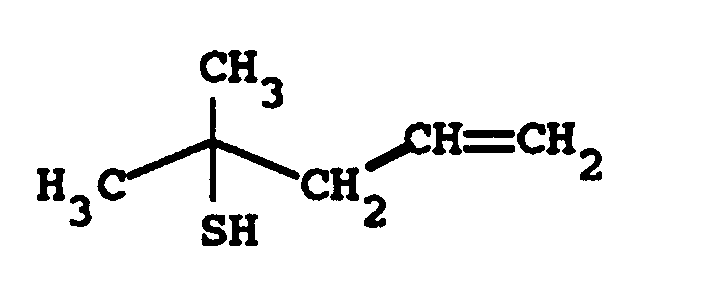
| |
| | |
![[List of Patents for class 508 subclass 574]](../ps.gif) 574 574 | Overbased or carbonated (e.g., overbased sulfurized phenates,
etc.): |
| | This subclass is indented under subclass 572. Compositions wherein the organic sulfur compound is overbased
or carbonated.
| | (1)
Note. An overbased compound herein is one in which an amount
of metal (e.g., Mg, Ca, Ba, Sr) is present which is greater than
the stoichiometric amount of metal which would be present if the phenolic
sulfur compound were completely neutralized. |
| | (2)
Note. A carbonated compound herein is the complex resulting
from the reaction of carbon dioxide with metal phenate. | |
| | |
![[List of Patents for class 508 subclass 575]](../ps.gif) 575 575 | Compound of indeterminate structure, prepared by reacting
an organic oxygen compound of known structure: |
| | This subclass is indented under subclass 110. Compositions which contain a compound of indeterminate structure,
prepared by the reaction of an organic oxygen compound of known structure.
| | (1)
Note. An example of a component provided for herein is the
product of indeterminate structure prepared by the reaction of acetylacetone
with stannic halide. |
| | (2)
Note. An organic oxygen compound is one wherein oxygen is
attached directly or indirectly by nonionic bonding to carbon of
an organic compound. |
| | (3)
Note. See Notes to the Class Definition for the definition
of an organic compound. | |
| | |
![[List of Patents for class 508 subclass 577]](../ps.gif) 577 577 | Organic oxygen compound: |
| | This subclass is indented under subclass 110. Compositions which contain a compound wherein oxygen is
attached directly or indirectly by nonionic bonding to carbon of
an organic compound.
| | (1)
Note. See Notes to the Class Definition for the definition
of an organic compound. |
| | (2)
Note. An example of a component provided for herein is
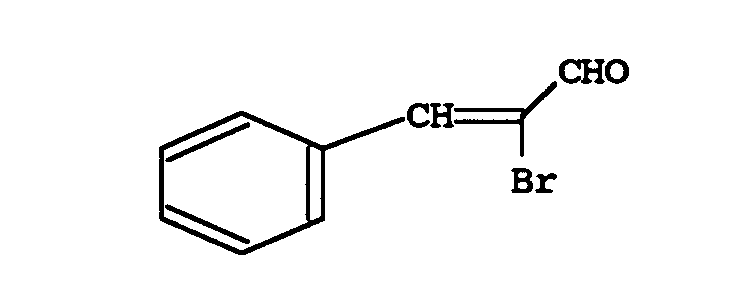
| |
| | |
![[List of Patents for class 508 subclass 579]](../ps.gif) 579 579 | Ethers: |
| | This subclass is indented under subclass 577. Compositions wherein an oxygen atom is bonded directly to
two carbon atoms, i.e., is an ether oxygen.
| | (1)
Note. An example of a component provided for herein are polyoxyalkylene glycol. | |
| | |
![[List of Patents for class 508 subclass 588]](../ps.gif) 588 588 | Organic halogen compound: |
| | This subclass is indented under subclass 110. Compositions which contain a compound wherein halogen is
attached directly or indirectly by nonionic bonding to carbon of
an organic compound.
| | (1)
Note. See Notes to the Class Definition for the definition
of an organic compound. |
| | (2)
Note. An example of a component provided for herein is tetrachlorobenzene. | |
| | |
![[List of Patents for class 508 subclass 591]](../ps.gif) 591 591 | Solid hydrocarbon polymer: |
| | This subclass is indented under subclass 110. Compositions which contain a polymeric component which is
both solid and hydrocarbonaceous.
| | (1)
Note. The polymers provided for herein can be homopolymeric
or copolymeric. |
| | (2)
Note. An example of a component provided for herein is: polycyclopentadiene. |
| | (3)
Note. Hydrocarbon polymers prepared by addition polymerization
of olefinic hydrocarbon monomers will be presumed to be solid unless
otherwise stated. | |
| | |
![[Search a list of Patent Appplications for class 508]](../as.gif) CLASS 508,
CLASS 508,![[List of Patents for class 508 subclass 100]](../ps.gif) 100
100![[List of Patents for class 508 subclass 101]](../ps.gif) 101
101![[List of Patents for class 508 subclass 102]](../ps.gif) 102
102![[List of Patents for class 508 subclass 103]](../ps.gif) 103
103![[List of Patents for class 508 subclass 104]](../ps.gif) 104
104![[List of Patents for class 508 subclass 105]](../ps.gif) 105
105![[List of Patents for class 508 subclass 106]](../ps.gif) 106
106![[List of Patents for class 508 subclass 107]](../ps.gif) 107
107![[List of Patents for class 508 subclass 108]](../ps.gif) 108
108![[List of Patents for class 508 subclass 109]](../ps.gif) 109
109![[List of Patents for class 508 subclass 110]](../ps.gif) 110
110![[List of Patents for class 508 subclass 111]](../ps.gif) 111
111![[List of Patents for class 508 subclass 112]](../ps.gif) 112
112![[List of Patents for class 508 subclass 113]](../ps.gif) 113
113![[List of Patents for class 508 subclass 114]](../ps.gif) 114
114![[List of Patents for class 508 subclass 115]](../ps.gif) 115
115![[List of Patents for class 508 subclass 116]](../ps.gif) 116
116![[List of Patents for class 508 subclass 117]](../ps.gif) 117
117![[List of Patents for class 508 subclass 118]](../ps.gif) 118
118![[List of Patents for class 508 subclass 119]](../ps.gif) 119
119![[List of Patents for class 508 subclass 120]](../ps.gif) 120
120![[List of Patents for class 508 subclass 121]](../ps.gif) 121
121![[List of Patents for class 508 subclass 122]](../ps.gif) 122
122![[List of Patents for class 508 subclass 123]](../ps.gif) 123
123![[List of Patents for class 508 subclass 124]](../ps.gif) 124
124![[List of Patents for class 508 subclass 125]](../ps.gif) 125
125![[List of Patents for class 508 subclass 126]](../ps.gif) 126
126![[List of Patents for class 508 subclass 127]](../ps.gif) 127
127![[List of Patents for class 508 subclass 128]](../ps.gif) 128
128![[List of Patents for class 508 subclass 129]](../ps.gif) 129
129![[List of Patents for class 508 subclass 130]](../ps.gif) 130
130![[List of Patents for class 508 subclass 131]](../ps.gif) 131
131![[List of Patents for class 508 subclass 132]](../ps.gif) 132
132![[List of Patents for class 508 subclass 133]](../ps.gif) 133
133![[List of Patents for class 508 subclass 134]](../ps.gif) 134
134![[List of Patents for class 508 subclass 135]](../ps.gif) 135
135![[List of Patents for class 508 subclass 136]](../ps.gif) 136
136![[List of Patents for class 508 subclass 137]](../ps.gif) 137
137![[List of Patents for class 508 subclass 138]](../ps.gif) 138
138![[List of Patents for class 508 subclass 139]](../ps.gif) 139
139![[List of Patents for class 508 subclass 140]](../ps.gif) 140
140![[List of Patents for class 508 subclass 141]](../ps.gif) 141
141![[List of Patents for class 508 subclass 142]](../ps.gif) 142
142![[List of Patents for class 508 subclass 143]](../ps.gif) 143
143![[List of Patents for class 508 subclass 144]](../ps.gif) 144
144![[List of Patents for class 508 subclass 145]](../ps.gif) 145
145![[List of Patents for class 508 subclass 146]](../ps.gif) 146
146![[List of Patents for class 508 subclass 147]](../ps.gif) 147
147![[List of Patents for class 508 subclass 148]](../ps.gif) 148
148![[List of Patents for class 508 subclass 149]](../ps.gif) 149
149![[List of Patents for class 508 subclass 150]](../ps.gif) 150
150![[List of Patents for class 508 subclass 151]](../ps.gif) 151
151![[List of Patents for class 508 subclass 152]](../ps.gif) 152
152![[List of Patents for class 508 subclass 153]](../ps.gif) 153
153![[List of Patents for class 508 subclass 154]](../ps.gif) 154
154![[List of Patents for class 508 subclass 155]](../ps.gif) 155
155![[List of Patents for class 508 subclass 156]](../ps.gif) 156
156![[List of Patents for class 508 subclass 157]](../ps.gif) 157
157![[List of Patents for class 508 subclass 158]](../ps.gif) 158
158![[List of Patents for class 508 subclass 159]](../ps.gif) 159
159![[List of Patents for class 508 subclass 160]](../ps.gif) 160
160![[List of Patents for class 508 subclass 161]](../ps.gif) 161
161![[List of Patents for class 508 subclass 162]](../ps.gif) 162
162![[List of Patents for class 508 subclass 163]](../ps.gif) 163
163![[List of Patents for class 508 subclass 164]](../ps.gif) 164
164![[List of Patents for class 508 subclass 165]](../ps.gif) 165
165![[List of Patents for class 508 subclass 166]](../ps.gif) 166
166![[List of Patents for class 508 subclass 167]](../ps.gif) 167
167![[List of Patents for class 508 subclass 168]](../ps.gif) 168
168![[List of Patents for class 508 subclass 169]](../ps.gif) 169
169![[List of Patents for class 508 subclass 170]](../ps.gif) 170
170![[List of Patents for class 508 subclass 171]](../ps.gif) 171
171![[List of Patents for class 508 subclass 172]](../ps.gif) 172
172![[List of Patents for class 508 subclass 173]](../ps.gif) 173
173![[List of Patents for class 508 subclass 174]](../ps.gif) 174
174![[List of Patents for class 508 subclass 175]](../ps.gif) 175
175![[List of Patents for class 508 subclass 176]](../ps.gif) 176
176![[List of Patents for class 508 subclass 177]](../ps.gif) 177
177![[List of Patents for class 508 subclass 178]](../ps.gif) 178
178![[List of Patents for class 508 subclass 179]](../ps.gif) 179
179![[List of Patents for class 508 subclass 180]](../ps.gif) 180
180![[List of Patents for class 508 subclass 181]](../ps.gif) 181
181![[List of Patents for class 508 subclass 182]](../ps.gif) 182
182![[List of Patents for class 508 subclass 183]](../ps.gif) 183
183![[List of Patents for class 508 subclass 184]](../ps.gif) 184
184![[List of Patents for class 508 subclass 185]](../ps.gif) 185
185![[List of Patents for class 508 subclass 186]](../ps.gif) 186
186![[List of Patents for class 508 subclass 187]](../ps.gif) 187
187![[List of Patents for class 508 subclass 188]](../ps.gif) 188
188![[List of Patents for class 508 subclass 189]](../ps.gif) 189
189![[List of Patents for class 508 subclass 190]](../ps.gif) 190
190![[List of Patents for class 508 subclass 191]](../ps.gif) 191
191![[List of Patents for class 508 subclass 192]](../ps.gif) 192
192![[List of Patents for class 508 subclass 193]](../ps.gif) 193
193![[List of Patents for class 508 subclass 194]](../ps.gif) 194
194![[List of Patents for class 508 subclass 195]](../ps.gif) 195
195![[List of Patents for class 508 subclass 196]](../ps.gif) 196
196![[List of Patents for class 508 subclass 197]](../ps.gif) 197
197![[List of Patents for class 508 subclass 198]](../ps.gif) 198
198![[List of Patents for class 508 subclass 199]](../ps.gif) 199
199![[List of Patents for class 508 subclass 200]](../ps.gif) 200
200![[List of Patents for class 508 subclass 201]](../ps.gif) 201
201![[List of Patents for class 508 subclass 202]](../ps.gif) 202
202![[List of Patents for class 508 subclass 203]](../ps.gif) 203
203![[List of Patents for class 508 subclass 204]](../ps.gif) 204
204![[List of Patents for class 508 subclass 205]](../ps.gif) 205
205![[List of Patents for class 508 subclass 206]](../ps.gif) 206
206![[List of Patents for class 508 subclass 207]](../ps.gif) 207
207![[List of Patents for class 508 subclass 208]](../ps.gif) 208
208![[List of Patents for class 508 subclass 209]](../ps.gif) 209
209![[List of Patents for class 508 subclass 210]](../ps.gif) 210
210![[List of Patents for class 508 subclass 211]](../ps.gif) 211
211![[List of Patents for class 508 subclass 212]](../ps.gif) 212
212![[List of Patents for class 508 subclass 213]](../ps.gif) 213
213![[List of Patents for class 508 subclass 214]](../ps.gif) 214
214![[List of Patents for class 508 subclass 215]](../ps.gif) 215
215![[List of Patents for class 508 subclass 216]](../ps.gif) 216
216![[List of Patents for class 508 subclass 217]](../ps.gif) 217
217![[List of Patents for class 508 subclass 218]](../ps.gif) 218
218![[List of Patents for class 508 subclass 219]](../ps.gif) 219
219![[List of Patents for class 508 subclass 220]](../ps.gif) 220
220![[List of Patents for class 508 subclass 221]](../ps.gif) 221
221![[List of Patents for class 508 subclass 222]](../ps.gif) 222
222![[List of Patents for class 508 subclass 223]](../ps.gif) 223
223![[List of Patents for class 508 subclass 224]](../ps.gif) 224
224![[List of Patents for class 508 subclass 225]](../ps.gif) 225
225![[List of Patents for class 508 subclass 226]](../ps.gif) 226
226![[List of Patents for class 508 subclass 227]](../ps.gif) 227
227![[List of Patents for class 508 subclass 228]](../ps.gif) 228
228![[List of Patents for class 508 subclass 229]](../ps.gif) 229
229![[List of Patents for class 508 subclass 230]](../ps.gif) 230
230![[List of Patents for class 508 subclass 231]](../ps.gif) 231
231![[List of Patents for class 508 subclass 232]](../ps.gif) 232
232![[List of Patents for class 508 subclass 233]](../ps.gif) 233
233![[List of Patents for class 508 subclass 234]](../ps.gif) 234
234![[List of Patents for class 508 subclass 235]](../ps.gif) 235
235![[List of Patents for class 508 subclass 236]](../ps.gif) 236
236![[List of Patents for class 508 subclass 237]](../ps.gif) 237
237![[List of Patents for class 508 subclass 238]](../ps.gif) 238
238![[List of Patents for class 508 subclass 239]](../ps.gif) 239
239![[List of Patents for class 508 subclass 240]](../ps.gif) 240
240![[List of Patents for class 508 subclass 241]](../ps.gif) 241
241![[List of Patents for class 508 subclass 242]](../ps.gif) 242
242![[List of Patents for class 508 subclass 243]](../ps.gif) 243
243![[List of Patents for class 508 subclass 244]](../ps.gif) 244
244![[List of Patents for class 508 subclass 245]](../ps.gif) 245
245![[List of Patents for class 508 subclass 246]](../ps.gif) 246
246![[List of Patents for class 508 subclass 247]](../ps.gif) 247
247![[List of Patents for class 508 subclass 248]](../ps.gif) 248
248![[List of Patents for class 508 subclass 249]](../ps.gif) 249
249![[List of Patents for class 508 subclass 250]](../ps.gif) 250
250![[List of Patents for class 508 subclass 251]](../ps.gif) 251
251![[List of Patents for class 508 subclass 252]](../ps.gif) 252
252![[List of Patents for class 508 subclass 253]](../ps.gif) 253
253![[List of Patents for class 508 subclass 254]](../ps.gif) 254
254![[List of Patents for class 508 subclass 255]](../ps.gif) 255
255![[List of Patents for class 508 subclass 256]](../ps.gif) 256
256![[List of Patents for class 508 subclass 257]](../ps.gif) 257
257![[List of Patents for class 508 subclass 258]](../ps.gif) 258
258![[List of Patents for class 508 subclass 259]](../ps.gif) 259
259![[List of Patents for class 508 subclass 260]](../ps.gif) 260
260![[List of Patents for class 508 subclass 261]](../ps.gif) 261
261![[List of Patents for class 508 subclass 262]](../ps.gif) 262
262![[List of Patents for class 508 subclass 263]](../ps.gif) 263
263![[List of Patents for class 508 subclass 264]](../ps.gif) 264
264![[List of Patents for class 508 subclass 265]](../ps.gif) 265
265![[List of Patents for class 508 subclass 266]](../ps.gif) 266
266![[List of Patents for class 508 subclass 267]](../ps.gif) 267
267![[List of Patents for class 508 subclass 268]](../ps.gif) 268
268![[List of Patents for class 508 subclass 269]](../ps.gif) 269
269![[List of Patents for class 508 subclass 270]](../ps.gif) 270
270![[List of Patents for class 508 subclass 271]](../ps.gif) 271
271![[List of Patents for class 508 subclass 272]](../ps.gif) 272
272![[List of Patents for class 508 subclass 273]](../ps.gif) 273
273![[List of Patents for class 508 subclass 274]](../ps.gif) 274
274![[List of Patents for class 508 subclass 275]](../ps.gif) 275
275![[List of Patents for class 508 subclass 276]](../ps.gif) 276
276![[List of Patents for class 508 subclass 277]](../ps.gif) 277
277![[List of Patents for class 508 subclass 278]](../ps.gif) 278
278![[List of Patents for class 508 subclass 279]](../ps.gif) 279
279![[List of Patents for class 508 subclass 280]](../ps.gif) 280
280![[List of Patents for class 508 subclass 281]](../ps.gif) 281
281![[List of Patents for class 508 subclass 282]](../ps.gif) 282
282![[List of Patents for class 508 subclass 283]](../ps.gif) 283
283![[List of Patents for class 508 subclass 284]](../ps.gif) 284
284![[List of Patents for class 508 subclass 285]](../ps.gif) 285
285![[List of Patents for class 508 subclass 286]](../ps.gif) 286
286![[List of Patents for class 508 subclass 287]](../ps.gif) 287
287![[List of Patents for class 508 subclass 288]](../ps.gif) 288
288![[List of Patents for class 508 subclass 289]](../ps.gif) 289
289![[List of Patents for class 508 subclass 290]](../ps.gif) 290
290![[List of Patents for class 508 subclass 291]](../ps.gif) 291
291![[List of Patents for class 508 subclass 292]](../ps.gif) 292
292![[List of Patents for class 508 subclass 293]](../ps.gif) 293
293![[List of Patents for class 508 subclass 294]](../ps.gif) 294
294![[List of Patents for class 508 subclass 295]](../ps.gif) 295
295![[List of Patents for class 508 subclass 296]](../ps.gif) 296
296![[List of Patents for class 508 subclass 297]](../ps.gif) 297
297![[List of Patents for class 508 subclass 298]](../ps.gif) 298
298![[List of Patents for class 508 subclass 299]](../ps.gif) 299
299![[List of Patents for class 508 subclass 300]](../ps.gif) 300
300![[List of Patents for class 508 subclass 301]](../ps.gif) 301
301![[List of Patents for class 508 subclass 302]](../ps.gif) 302
302![[List of Patents for class 508 subclass 303]](../ps.gif) 303
303![[List of Patents for class 508 subclass 304]](../ps.gif) 304
304![[List of Patents for class 508 subclass 305]](../ps.gif) 305
305![[List of Patents for class 508 subclass 306]](../ps.gif) 306
306![[List of Patents for class 508 subclass 307]](../ps.gif) 307
307![[List of Patents for class 508 subclass 308]](../ps.gif) 308
308![[List of Patents for class 508 subclass 309]](../ps.gif) 309
309![[List of Patents for class 508 subclass 310]](../ps.gif) 310
310![[List of Patents for class 508 subclass 311]](../ps.gif) 311
311![[List of Patents for class 508 subclass 312]](../ps.gif) 312
312![[List of Patents for class 508 subclass 313]](../ps.gif) 313
313![[List of Patents for class 508 subclass 314]](../ps.gif) 314
314![[List of Patents for class 508 subclass 315]](../ps.gif) 315
315![[List of Patents for class 508 subclass 316]](../ps.gif) 316
316![[List of Patents for class 508 subclass 317]](../ps.gif) 317
317![[List of Patents for class 508 subclass 318]](../ps.gif) 318
318![[List of Patents for class 508 subclass 319]](../ps.gif) 319
319![[List of Patents for class 508 subclass 320]](../ps.gif) 320
320![[List of Patents for class 508 subclass 321]](../ps.gif) 321
321![[List of Patents for class 508 subclass 322]](../ps.gif) 322
322![[List of Patents for class 508 subclass 323]](../ps.gif) 323
323![[List of Patents for class 508 subclass 324]](../ps.gif) 324
324![[List of Patents for class 508 subclass 325]](../ps.gif) 325
325![[List of Patents for class 508 subclass 326]](../ps.gif) 326
326![[List of Patents for class 508 subclass 327]](../ps.gif) 327
327![[List of Patents for class 508 subclass 328]](../ps.gif) 328
328![[List of Patents for class 508 subclass 329]](../ps.gif) 329
329![[List of Patents for class 508 subclass 330]](../ps.gif) 330
330![[List of Patents for class 508 subclass 331]](../ps.gif) 331
331![[List of Patents for class 508 subclass 332]](../ps.gif) 332
332![[List of Patents for class 508 subclass 333]](../ps.gif) 333
333![[List of Patents for class 508 subclass 334]](../ps.gif) 334
334![[List of Patents for class 508 subclass 335]](../ps.gif) 335
335![[List of Patents for class 508 subclass 336]](../ps.gif) 336
336![[List of Patents for class 508 subclass 337]](../ps.gif) 337
337![[List of Patents for class 508 subclass 338]](../ps.gif) 338
338![[List of Patents for class 508 subclass 339]](../ps.gif) 339
339![[List of Patents for class 508 subclass 340]](../ps.gif) 340
340![[List of Patents for class 508 subclass 341]](../ps.gif) 341
341![[List of Patents for class 508 subclass 342]](../ps.gif) 342
342![[List of Patents for class 508 subclass 343]](../ps.gif) 343
343![[List of Patents for class 508 subclass 344]](../ps.gif) 344
344![[List of Patents for class 508 subclass 345]](../ps.gif) 345
345![[List of Patents for class 508 subclass 346]](../ps.gif) 346
346![[List of Patents for class 508 subclass 347]](../ps.gif) 347
347![[List of Patents for class 508 subclass 348]](../ps.gif) 348
348![[List of Patents for class 508 subclass 349]](../ps.gif) 349
349![[List of Patents for class 508 subclass 350]](../ps.gif) 350
350![[List of Patents for class 508 subclass 351]](../ps.gif) 351
351![[List of Patents for class 508 subclass 352]](../ps.gif) 352
352![[List of Patents for class 508 subclass 353]](../ps.gif) 353
353![[List of Patents for class 508 subclass 354]](../ps.gif) 354
354![[List of Patents for class 508 subclass 355]](../ps.gif) 355
355![[List of Patents for class 508 subclass 356]](../ps.gif) 356
356![[List of Patents for class 508 subclass 357]](../ps.gif) 357
357![[List of Patents for class 508 subclass 358]](../ps.gif) 358
358![[List of Patents for class 508 subclass 359]](../ps.gif) 359
359![[List of Patents for class 508 subclass 360]](../ps.gif) 360
360![[List of Patents for class 508 subclass 361]](../ps.gif) 361
361![[List of Patents for class 508 subclass 362]](../ps.gif) 362
362![[List of Patents for class 508 subclass 363]](../ps.gif) 363
363![[List of Patents for class 508 subclass 364]](../ps.gif) 364
364![[List of Patents for class 508 subclass 365]](../ps.gif) 365
365![[List of Patents for class 508 subclass 366]](../ps.gif) 366
366![[List of Patents for class 508 subclass 367]](../ps.gif) 367
367![[List of Patents for class 508 subclass 368]](../ps.gif) 368
368![[List of Patents for class 508 subclass 369]](../ps.gif) 369
369![[List of Patents for class 508 subclass 370]](../ps.gif) 370
370![[List of Patents for class 508 subclass 371]](../ps.gif) 371
371![[List of Patents for class 508 subclass 372]](../ps.gif) 372
372![[List of Patents for class 508 subclass 373]](../ps.gif) 373
373![[List of Patents for class 508 subclass 374]](../ps.gif) 374
374![[List of Patents for class 508 subclass 375]](../ps.gif) 375
375![[List of Patents for class 508 subclass 376]](../ps.gif) 376
376![[List of Patents for class 508 subclass 377]](../ps.gif) 377
377![[List of Patents for class 508 subclass 378]](../ps.gif) 378
378![[List of Patents for class 508 subclass 379]](../ps.gif) 379
379![[List of Patents for class 508 subclass 380]](../ps.gif) 380
380![[List of Patents for class 508 subclass 381]](../ps.gif) 381
381![[List of Patents for class 508 subclass 382]](../ps.gif) 382
382![[List of Patents for class 508 subclass 383]](../ps.gif) 383
383![[List of Patents for class 508 subclass 384]](../ps.gif) 384
384![[List of Patents for class 508 subclass 385]](../ps.gif) 385
385![[List of Patents for class 508 subclass 386]](../ps.gif) 386
386![[List of Patents for class 508 subclass 387]](../ps.gif) 387
387![[List of Patents for class 508 subclass 388]](../ps.gif) 388
388![[List of Patents for class 508 subclass 389]](../ps.gif) 389
389![[List of Patents for class 508 subclass 390]](../ps.gif) 390
390![[List of Patents for class 508 subclass 391]](../ps.gif) 391
391![[List of Patents for class 508 subclass 392]](../ps.gif) 392
392![[List of Patents for class 508 subclass 393]](../ps.gif) 393
393![[List of Patents for class 508 subclass 394]](../ps.gif) 394
394![[List of Patents for class 508 subclass 395]](../ps.gif) 395
395![[List of Patents for class 508 subclass 396]](../ps.gif) 396
396![[List of Patents for class 508 subclass 397]](../ps.gif) 397
397![[List of Patents for class 508 subclass 398]](../ps.gif) 398
398![[List of Patents for class 508 subclass 399]](../ps.gif) 399
399![[List of Patents for class 508 subclass 400]](../ps.gif) 400
400![[List of Patents for class 508 subclass 401]](../ps.gif) 401
401![[List of Patents for class 508 subclass 402]](../ps.gif) 402
402![[List of Patents for class 508 subclass 403]](../ps.gif) 403
403![[List of Patents for class 508 subclass 404]](../ps.gif) 404
404![[List of Patents for class 508 subclass 405]](../ps.gif) 405
405![[List of Patents for class 508 subclass 406]](../ps.gif) 406
406![[List of Patents for class 508 subclass 407]](../ps.gif) 407
407![[List of Patents for class 508 subclass 408]](../ps.gif) 408
408![[List of Patents for class 508 subclass 409]](../ps.gif) 409
409![[List of Patents for class 508 subclass 410]](../ps.gif) 410
410![[List of Patents for class 508 subclass 411]](../ps.gif) 411
411![[List of Patents for class 508 subclass 412]](../ps.gif) 412
412![[List of Patents for class 508 subclass 413]](../ps.gif) 413
413![[List of Patents for class 508 subclass 414]](../ps.gif) 414
414![[List of Patents for class 508 subclass 415]](../ps.gif) 415
415![[List of Patents for class 508 subclass 416]](../ps.gif) 416
416![[List of Patents for class 508 subclass 417]](../ps.gif) 417
417![[List of Patents for class 508 subclass 418]](../ps.gif) 418
418![[List of Patents for class 508 subclass 419]](../ps.gif) 419
419![[List of Patents for class 508 subclass 420]](../ps.gif) 420
420![[List of Patents for class 508 subclass 421]](../ps.gif) 421
421![[List of Patents for class 508 subclass 422]](../ps.gif) 422
422![[List of Patents for class 508 subclass 423]](../ps.gif) 423
423![[List of Patents for class 508 subclass 424]](../ps.gif) 424
424![[List of Patents for class 508 subclass 425]](../ps.gif) 425
425![[List of Patents for class 508 subclass 426]](../ps.gif) 426
426![[List of Patents for class 508 subclass 427]](../ps.gif) 427
427![[List of Patents for class 508 subclass 428]](../ps.gif) 428
428![[List of Patents for class 508 subclass 429]](../ps.gif) 429
429![[List of Patents for class 508 subclass 430]](../ps.gif) 430
430![[List of Patents for class 508 subclass 431]](../ps.gif) 431
431![[List of Patents for class 508 subclass 432]](../ps.gif) 432
432![[List of Patents for class 508 subclass 433]](../ps.gif) 433
433![[List of Patents for class 508 subclass 434]](../ps.gif) 434
434![[List of Patents for class 508 subclass 435]](../ps.gif) 435
435![[List of Patents for class 508 subclass 436]](../ps.gif) 436
436![[List of Patents for class 508 subclass 437]](../ps.gif) 437
437![[List of Patents for class 508 subclass 438]](../ps.gif) 438
438![[List of Patents for class 508 subclass 439]](../ps.gif) 439
439![[List of Patents for class 508 subclass 440]](../ps.gif) 440
440![[List of Patents for class 508 subclass 441]](../ps.gif) 441
441![[List of Patents for class 508 subclass 442]](../ps.gif) 442
442![[List of Patents for class 508 subclass 443]](../ps.gif) 443
443![[List of Patents for class 508 subclass 444]](../ps.gif) 444
444![[List of Patents for class 508 subclass 445]](../ps.gif) 445
445![[List of Patents for class 508 subclass 446]](../ps.gif) 446
446![[List of Patents for class 508 subclass 447]](../ps.gif) 447
447![[List of Patents for class 508 subclass 448]](../ps.gif) 448
448![[List of Patents for class 508 subclass 449]](../ps.gif) 449
449![[List of Patents for class 508 subclass 450]](../ps.gif) 450
450![[List of Patents for class 508 subclass 451]](../ps.gif) 451
451![[List of Patents for class 508 subclass 452]](../ps.gif) 452
452![[List of Patents for class 508 subclass 453]](../ps.gif) 453
453![[List of Patents for class 508 subclass 454]](../ps.gif) 454
454![[List of Patents for class 508 subclass 455]](../ps.gif) 455
455![[List of Patents for class 508 subclass 456]](../ps.gif) 456
456![[List of Patents for class 508 subclass 457]](../ps.gif) 457
457![[List of Patents for class 508 subclass 458]](../ps.gif) 458
458![[List of Patents for class 508 subclass 459]](../ps.gif) 459
459![[List of Patents for class 508 subclass 460]](../ps.gif) 460
460![[List of Patents for class 508 subclass 461]](../ps.gif) 461
461![[List of Patents for class 508 subclass 462]](../ps.gif) 462
462![[List of Patents for class 508 subclass 463]](../ps.gif) 463
463![[List of Patents for class 508 subclass 464]](../ps.gif) 464
464![[List of Patents for class 508 subclass 465]](../ps.gif) 465
465![[List of Patents for class 508 subclass 466]](../ps.gif) 466
466![[List of Patents for class 508 subclass 467]](../ps.gif) 467
467![[List of Patents for class 508 subclass 468]](../ps.gif) 468
468![[List of Patents for class 508 subclass 469]](../ps.gif) 469
469![[List of Patents for class 508 subclass 470]](../ps.gif) 470
470![[List of Patents for class 508 subclass 471]](../ps.gif) 471
471![[List of Patents for class 508 subclass 472]](../ps.gif) 472
472![[List of Patents for class 508 subclass 473]](../ps.gif) 473
473![[List of Patents for class 508 subclass 474]](../ps.gif) 474
474![[List of Patents for class 508 subclass 475]](../ps.gif) 475
475![[List of Patents for class 508 subclass 476]](../ps.gif) 476
476![[List of Patents for class 508 subclass 477]](../ps.gif) 477
477![[List of Patents for class 508 subclass 478]](../ps.gif) 478
478![[List of Patents for class 508 subclass 479]](../ps.gif) 479
479![[List of Patents for class 508 subclass 480]](../ps.gif) 480
480![[List of Patents for class 508 subclass 481]](../ps.gif) 481
481![[List of Patents for class 508 subclass 482]](../ps.gif) 482
482![[List of Patents for class 508 subclass 483]](../ps.gif) 483
483![[List of Patents for class 508 subclass 484]](../ps.gif) 484
484![[List of Patents for class 508 subclass 485]](../ps.gif) 485
485![[List of Patents for class 508 subclass 486]](../ps.gif) 486
486![[List of Patents for class 508 subclass 487]](../ps.gif) 487
487![[List of Patents for class 508 subclass 488]](../ps.gif) 488
488![[List of Patents for class 508 subclass 489]](../ps.gif) 489
489![[List of Patents for class 508 subclass 490]](../ps.gif) 490
490![[List of Patents for class 508 subclass 491]](../ps.gif) 491
491![[List of Patents for class 508 subclass 492]](../ps.gif) 492
492![[List of Patents for class 508 subclass 493]](../ps.gif) 493
493![[List of Patents for class 508 subclass 494]](../ps.gif) 494
494![[List of Patents for class 508 subclass 495]](../ps.gif) 495
495![[List of Patents for class 508 subclass 496]](../ps.gif) 496
496![[List of Patents for class 508 subclass 497]](../ps.gif) 497
497![[List of Patents for class 508 subclass 498]](../ps.gif) 498
498![[List of Patents for class 508 subclass 499]](../ps.gif) 499
499![[List of Patents for class 508 subclass 500]](../ps.gif) 500
500![[List of Patents for class 508 subclass 501]](../ps.gif) 501
501![[List of Patents for class 508 subclass 502]](../ps.gif) 502
502![[List of Patents for class 508 subclass 503]](../ps.gif) 503
503![[List of Patents for class 508 subclass 504]](../ps.gif) 504
504![[List of Patents for class 508 subclass 505]](../ps.gif) 505
505![[List of Patents for class 508 subclass 506]](../ps.gif) 506
506![[List of Patents for class 508 subclass 507]](../ps.gif) 507
507![[List of Patents for class 508 subclass 508]](../ps.gif) 508
508![[List of Patents for class 508 subclass 509]](../ps.gif) 509
509![[List of Patents for class 508 subclass 510]](../ps.gif) 510
510![[List of Patents for class 508 subclass 511]](../ps.gif) 511
511![[List of Patents for class 508 subclass 512]](../ps.gif) 512
512![[List of Patents for class 508 subclass 513]](../ps.gif) 513
513![[List of Patents for class 508 subclass 514]](../ps.gif) 514
514![[List of Patents for class 508 subclass 515]](../ps.gif) 515
515![[List of Patents for class 508 subclass 516]](../ps.gif) 516
516![[List of Patents for class 508 subclass 517]](../ps.gif) 517
517![[List of Patents for class 508 subclass 518]](../ps.gif) 518
518![[List of Patents for class 508 subclass 519]](../ps.gif) 519
519![[List of Patents for class 508 subclass 520]](../ps.gif) 520
520![[List of Patents for class 508 subclass 521]](../ps.gif) 521
521![[List of Patents for class 508 subclass 522]](../ps.gif) 522
522![[List of Patents for class 508 subclass 523]](../ps.gif) 523
523![[List of Patents for class 508 subclass 524]](../ps.gif) 524
524![[List of Patents for class 508 subclass 525]](../ps.gif) 525
525![[List of Patents for class 508 subclass 526]](../ps.gif) 526
526![[List of Patents for class 508 subclass 527]](../ps.gif) 527
527![[List of Patents for class 508 subclass 528]](../ps.gif) 528
528![[List of Patents for class 508 subclass 529]](../ps.gif) 529
529![[List of Patents for class 508 subclass 530]](../ps.gif) 530
530![[List of Patents for class 508 subclass 531]](../ps.gif) 531
531![[List of Patents for class 508 subclass 532]](../ps.gif) 532
532![[List of Patents for class 508 subclass 533]](../ps.gif) 533
533![[List of Patents for class 508 subclass 534]](../ps.gif) 534
534![[List of Patents for class 508 subclass 535]](../ps.gif) 535
535![[List of Patents for class 508 subclass 536]](../ps.gif) 536
536![[List of Patents for class 508 subclass 537]](../ps.gif) 537
537![[List of Patents for class 508 subclass 538]](../ps.gif) 538
538![[List of Patents for class 508 subclass 539]](../ps.gif) 539
539![[List of Patents for class 508 subclass 540]](../ps.gif) 540
540![[List of Patents for class 508 subclass 541]](../ps.gif) 541
541![[List of Patents for class 508 subclass 542]](../ps.gif) 542
542![[List of Patents for class 508 subclass 543]](../ps.gif) 543
543![[List of Patents for class 508 subclass 544]](../ps.gif) 544
544![[List of Patents for class 508 subclass 545]](../ps.gif) 545
545![[List of Patents for class 508 subclass 546]](../ps.gif) 546
546![[List of Patents for class 508 subclass 547]](../ps.gif) 547
547![[List of Patents for class 508 subclass 548]](../ps.gif) 548
548![[List of Patents for class 508 subclass 549]](../ps.gif) 549
549![[List of Patents for class 508 subclass 550]](../ps.gif) 550
550![[List of Patents for class 508 subclass 551]](../ps.gif) 551
551![[List of Patents for class 508 subclass 552]](../ps.gif) 552
552![[List of Patents for class 508 subclass 553]](../ps.gif) 553
553![[List of Patents for class 508 subclass 554]](../ps.gif) 554
554![[List of Patents for class 508 subclass 555]](../ps.gif) 555
555![[List of Patents for class 508 subclass 556]](../ps.gif) 556
556![[List of Patents for class 508 subclass 557]](../ps.gif) 557
557![[List of Patents for class 508 subclass 558]](../ps.gif) 558
558![[List of Patents for class 508 subclass 559]](../ps.gif) 559
559![[List of Patents for class 508 subclass 560]](../ps.gif) 560
560![[List of Patents for class 508 subclass 561]](../ps.gif) 561
561![[List of Patents for class 508 subclass 562]](../ps.gif) 562
562![[List of Patents for class 508 subclass 563]](../ps.gif) 563
563![[List of Patents for class 508 subclass 564]](../ps.gif) 564
564![[List of Patents for class 508 subclass 565]](../ps.gif) 565
565![[List of Patents for class 508 subclass 566]](../ps.gif) 566
566![[List of Patents for class 508 subclass 567]](../ps.gif) 567
567![[List of Patents for class 508 subclass 568]](../ps.gif) 568
568![[List of Patents for class 508 subclass 569]](../ps.gif) 569
569![[List of Patents for class 508 subclass 570]](../ps.gif) 570
570![[List of Patents for class 508 subclass 571]](../ps.gif) 571
571![[List of Patents for class 508 subclass 572]](../ps.gif) 572
572![[List of Patents for class 508 subclass 573]](../ps.gif) 573
573![[List of Patents for class 508 subclass 574]](../ps.gif) 574
574![[List of Patents for class 508 subclass 575]](../ps.gif) 575
575![[List of Patents for class 508 subclass 576]](../ps.gif) 576
576![[List of Patents for class 508 subclass 577]](../ps.gif) 577
577![[List of Patents for class 508 subclass 578]](../ps.gif) 578
578![[List of Patents for class 508 subclass 579]](../ps.gif) 579
579![[List of Patents for class 508 subclass 580]](../ps.gif) 580
580![[List of Patents for class 508 subclass 581]](../ps.gif) 581
581![[List of Patents for class 508 subclass 582]](../ps.gif) 582
582![[List of Patents for class 508 subclass 583]](../ps.gif) 583
583![[List of Patents for class 508 subclass 584]](../ps.gif) 584
584![[List of Patents for class 508 subclass 585]](../ps.gif) 585
585![[List of Patents for class 508 subclass 586]](../ps.gif) 586
586![[List of Patents for class 508 subclass 587]](../ps.gif) 587
587![[List of Patents for class 508 subclass 588]](../ps.gif) 588
588![[List of Patents for class 508 subclass 589]](../ps.gif) 589
589![[List of Patents for class 508 subclass 590]](../ps.gif) 590
590![[List of Patents for class 508 subclass 591]](../ps.gif) 591
591
